The 40 mm CTAS, developed by the UK and France, is a medium calibre automatic weapon. It includes the CT Cannon, Ammunition Handling System, Controller, Gun Control Equipment, Gun Mount, and different types of ammunition.
CTA International (CTAI) results from a collaborative effort between BAE and NEXTER.
Cased Telescoped Armament System (CTAS) History
As described brilliantly in this paper from Armament Research Services, cased telescoped small arms ammunition has a history dating back to the mid-eighteen hundreds.
The US Department of Defense completed significant research for medium calibre cased telescoped weapons, starting in the fifties.
Early programmes included the Control Tube Telescoped Cartridge, developed by the USAF Armament Laboratory and Gard Incorporated, the Hughes Lockless, and the Army Materiel Command Advanced Medium Caliber (AMCAWS-30), all described by Tony Williams in his book on automatic cannons (with many other examples).
None of these entered service, but towards the middle of the seventies, DARPA began work on several design approaches for defeating Soviet armour without using HEAT rounds.
Development of the rapid-fire 75 mm smooth bore rotating breach XM-274 (designed by Eugene Stoner) started in 1973, sponsored by the ARDC Large Calibre Weapons Laboratory at Picatinny Arsenal.
ARES was awarded a $31m contract in 1981 to develop the weapon, and AAI a $28m contract to develop the ammunition.
Subsequently, it was tested on several vehicles but did not enter service.
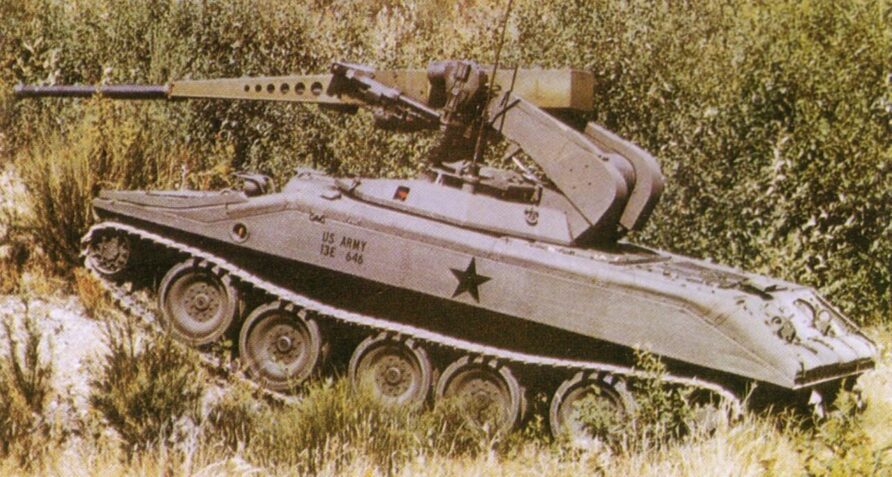
The research effort also funded a medium-calibre weapon system called COMVAT.
Building on an earlier programme called Combat Vehicle Armament System Technology (CVAST) that used a conventional 35 mm automatic cannon called TALON, between 1986 and 1994, Ares Incorporated in the USA worked on the Combat Vehicle Armament Technology (COMVAT) programme that used a 45 mm cased telescoped weapon turret on a Bradley infantry fighting vehicle.
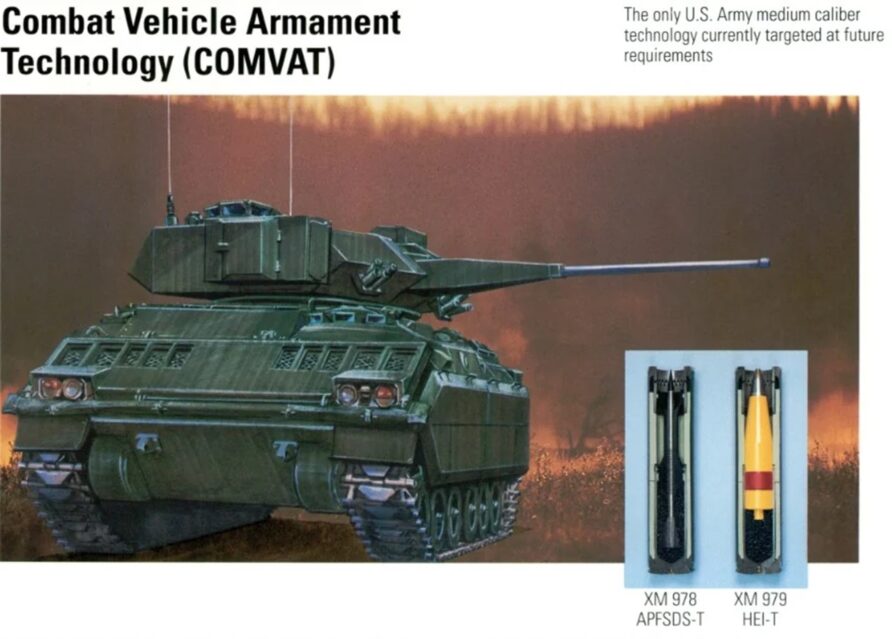
COMVAT used the XM-294 weapon system in a 2-man turret.
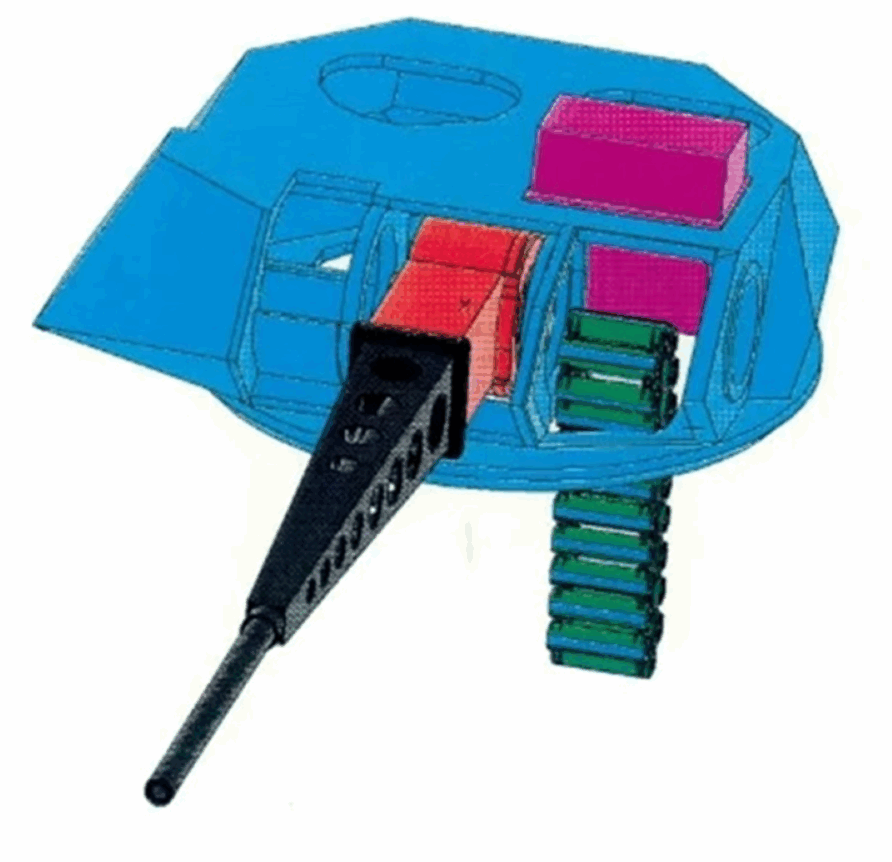
The Armament Research and Development Center (ARDEC) designed the ammunition, with Alliant Techsystems as the prime contractor.
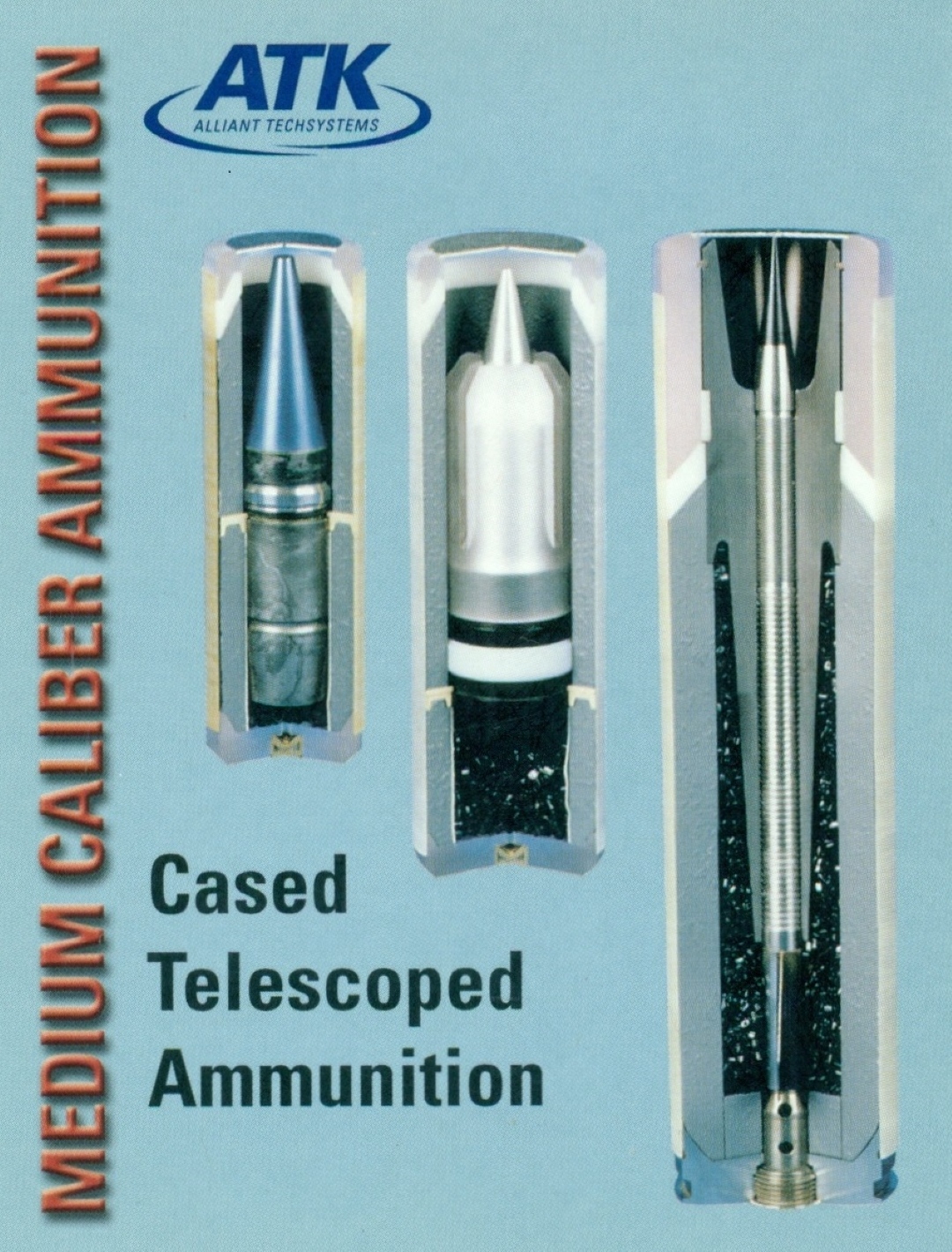
COMVAT used a linkless feed mechanism with a rate of fire of 200 rounds per minute.
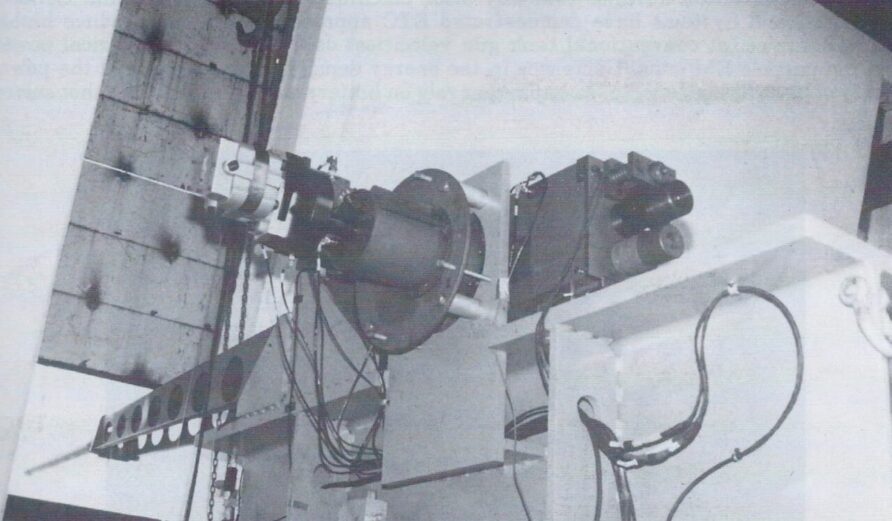
ARES would go on to develop the 45 mm ammunition for their Rarefaction Wave Gun Programme project.
In the mid-eighties, GIAT started work on 12.7 mm cased telescoped ammunition for use in a Gatling-type weapon called DECO, progressing to a larger calibre (35 mm) weapon called the XT2000.
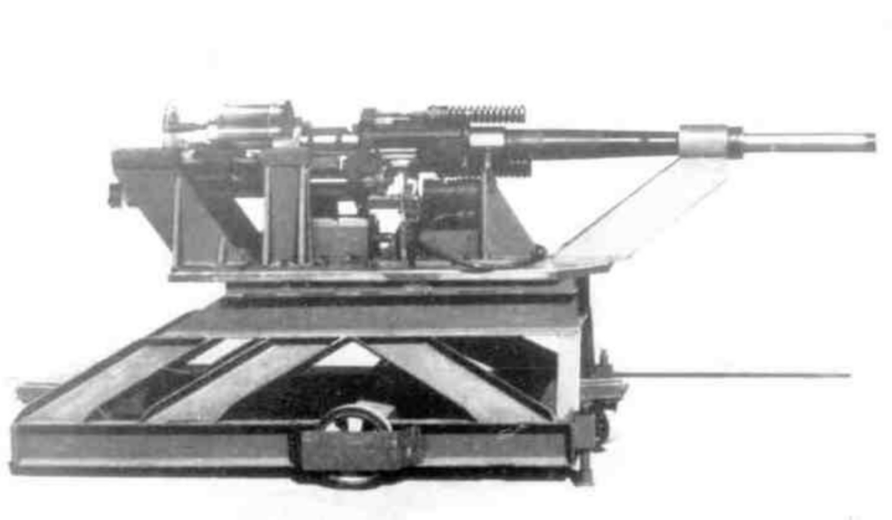
XT2000 used a rotating cylinder chamber that carried three rounds.
This video from 1988 with Eugene Stoner (of ARES Inc) provides some additional background to the early US efforts.
In a September 1989 briefing to the NATO Panel III at Bourges in France, specifications and progress on COMVAT were shared with the GIAT Corporation, GIAT also shared programme details of their XT2000 Cased Telescoped Weapon, then in early development.
In the late eighties in the UK, recognising the approaching obsolescence of the 30 mm RARDEN cannon, the MoD started a series of trade studies to develop the concept for a medium calibre weapon to replace it, one suitable to deal with emerging Russian combat vehicles.
Royal Ordnance plc was purchased by British Aerospace (BAe) in April 1987, although the brand would continue to be used for many years.
In April 1990, a French delegation visited ARDEC in the USA to share additional details on their XT2000, having already agreed that Giat Industries and Alliant Techsystems would undertake an interoperability demonstration with French Ammunition being fired in the American Gun and vice versa.
This was completed in 1991 and a summary comparison is shown below, resulting from these trials.
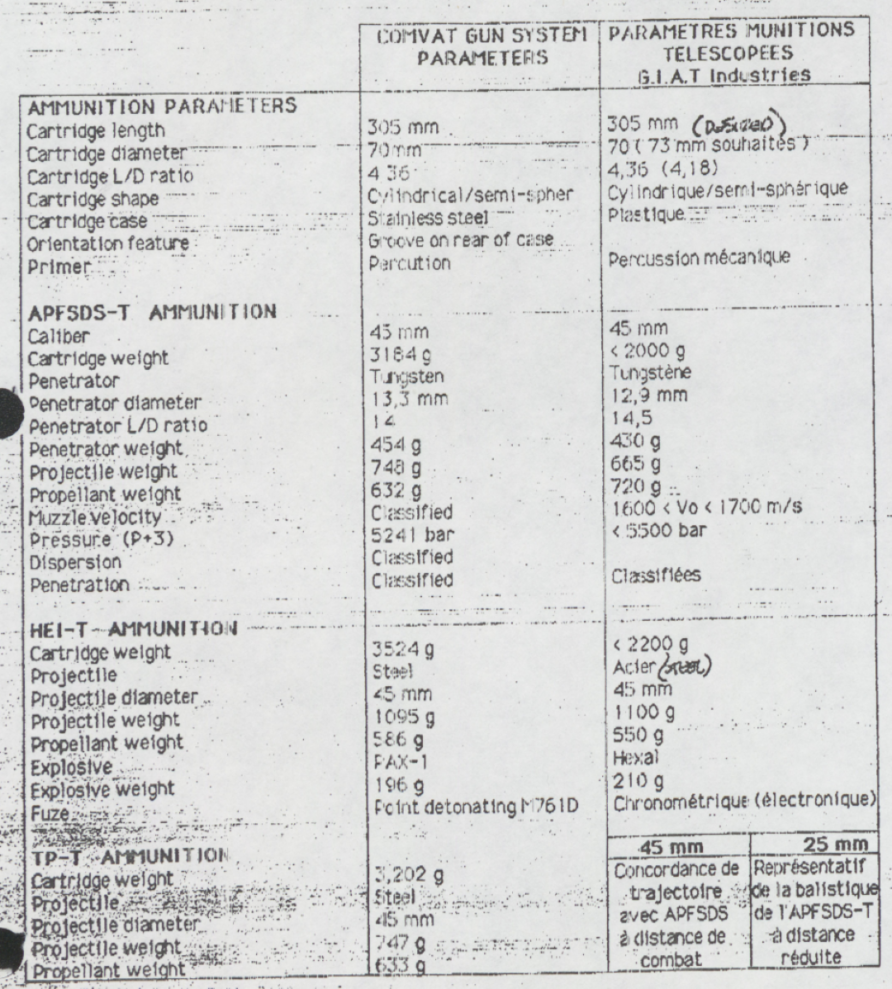
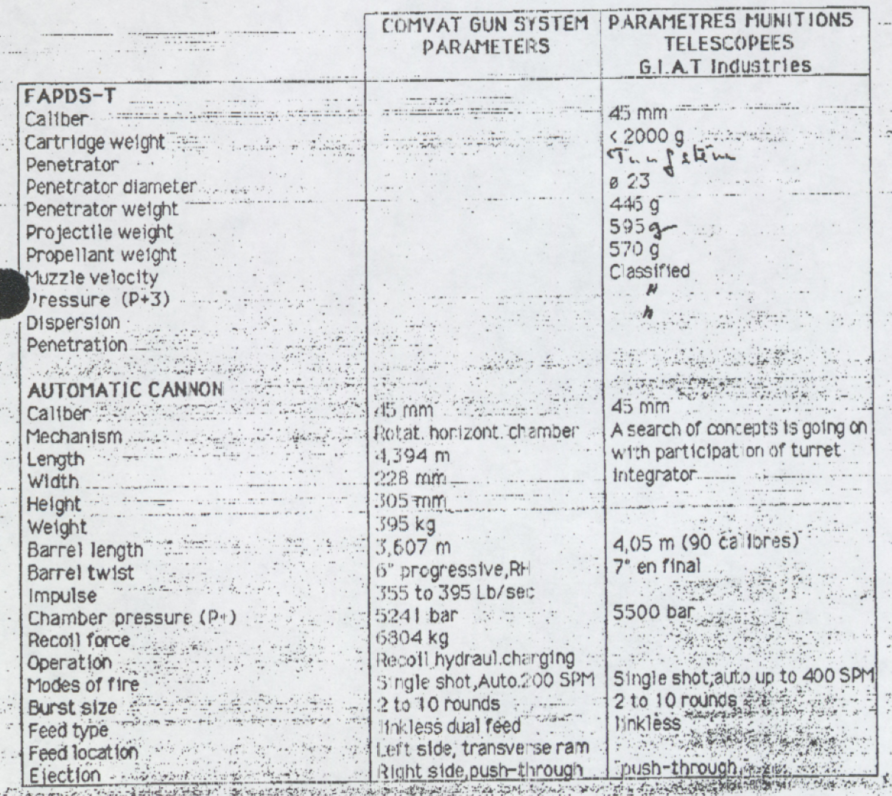
The UK MoD trade studies and the outputs from the ATK/Giat interoperability studies prompted GIAT and Royal Ordnance to explore options for a collaborative development programme.
The GIAT 45 mm Cased Telescoped Weapon System (CTWS) demonstrator was completed in 1991 with the prototype shown the following year.
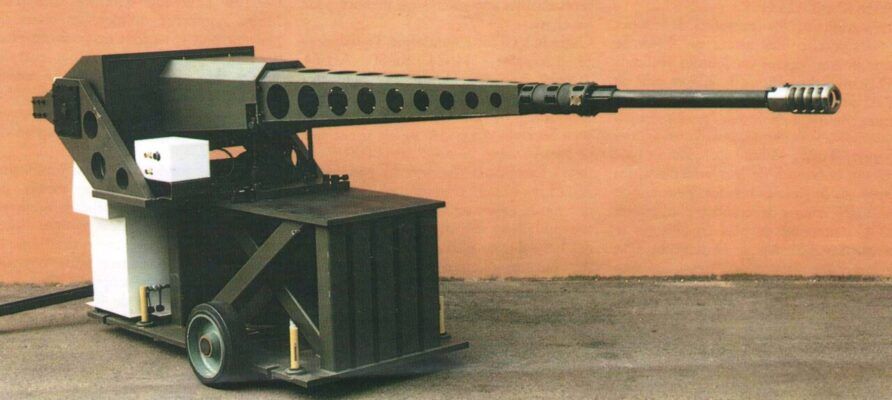
Test firing of the weapon commenced in 1992, with marketing materials extolling its capabilities.
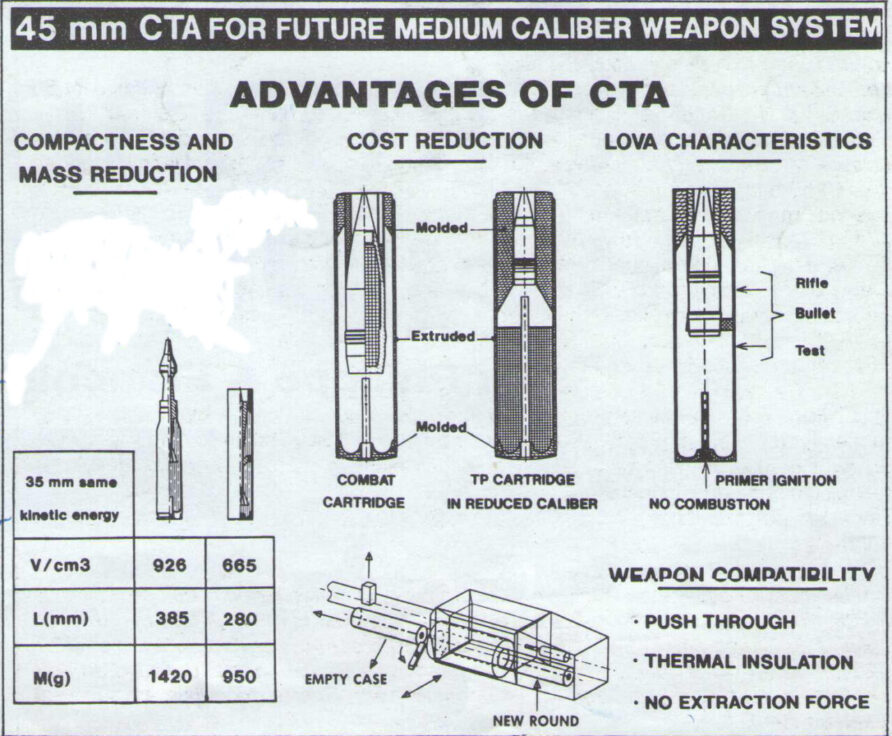
This demonstrator had some input from the ARES 45 mm weapon that had been in development in the USA.
Differences from the US system included changing from a metallic to a plastic case and using an electrical drive rather than being gas-operated.

In 1992, the UK quickly established a research programme between BAE and DRA to examine the feasibility and generate its IPR/technical understanding, launching TDP (Technical Demonstrator Programme to research the ammunition configuration the same year)
Alliant Techsystems (ATK) and Giat International signed a cooperation agreement in late 1992 to promote the 45 mm weapon system, this did not progress and the Giat/RO relationship was further developed.
As US interest waned, BAE, GIAT (industry), MoD/DRA and French Government/DGA decided to develop the concept further.
The CTWS was then positioned for TRACER, a midlife Warrior upgrade, and the French Véhicule d’Appui Direct (VAD) requirement that would use the Moyen Calibre Futur (MCF) weapon.
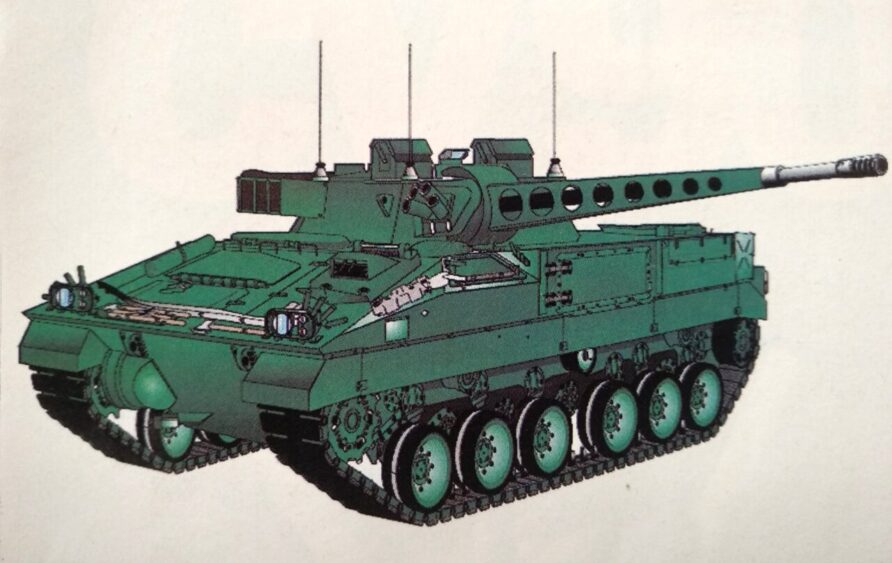
In 1992, Staff Target (Land) 4061, more commonly known as TRACER, Tactical Reconnaissance Armoured Combat Equipment Requirement, was released.
It was to meet a requirement for CVR(T) replacement.
TRACER was intended to utilise the 45 mm CTWS.
In 1994, the joint development of the 40 mm CTAS was formalised by creating a 50/50 Joint Venture between GIAT and Royal Ordnance, and DRA/DGA called Cased Telescoped Ammunition International or CTAI for short.
30% of the funding for this joint venture was from the MoD and French Defence Ministry.
By the end of 1996, ammunition natures planned for the 40 mm CTAS included Armour Piercing Fin Stabilised Discarding Sabot-Tracer (APFSDS-T), General Purpose-Tracer (GP-T), Training Practice-Tracer (TP-T), Reduced Range Training Round-Tracer (RRTR-T), and Frangible Armour Piercing Discarding Sabot-Tracer (FAPDS-T).
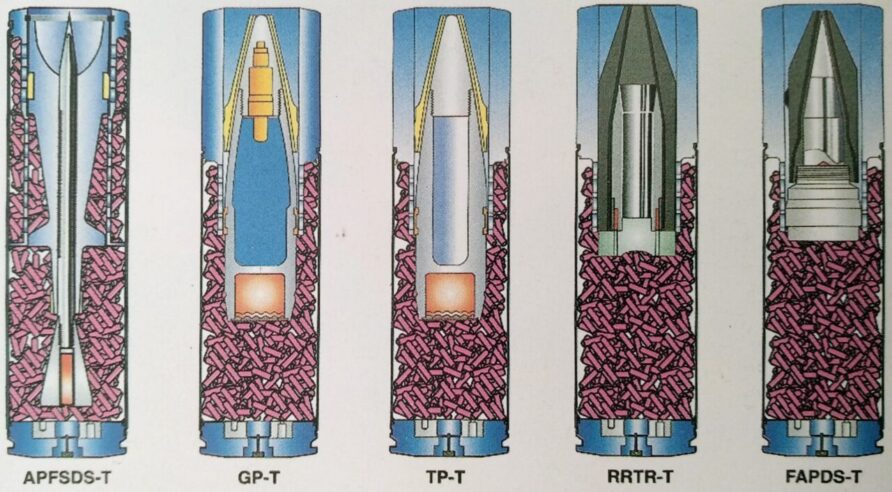
This 1996 document from the US Office of the Inspector General evaluated development activity.
Cased Telescoped Ammunition and Gun Technology. Air Force laboratory personnel conceived the cased telescoped ammunition concept in 1954. The cased telescoped concept places the ammunition projectile completely within the cartridge, instead of protruding from the top of the cartridge as in conventional ammunition. Further, the cased telescoped ammunition cartridge is formed into a right-circular cylinder, instead of a tapered cylinder as in conventional ammunition.
The report was published in response to a ‘Defense Hotline’ complaint that the DoD has been wasting money on cased telescoped ammunition and systems for ’41 years’.
Ouch.
The report concluded…
Our evaluation substantiated the inherent technical problems that prevent the successful development and fielding of a cased telescoped ammunition and gun system. Cased telescoped ammunition is ballistically inefficient with inherent performance, weight, volume, and cost problems. Cased telescoped guns have not been fully demonstrated and possess inherent operational and barrel-life problems.
In addition to the technical problems, the technology faces cost and Service requirements problems. The life-cycle costs of a cased telescoped ammunition and gun weapon system are significantly greater than those for a conventional weapon system. Further, no known Service requirements provide the impetus to pursue cased telescoped ammunition and gun technology.
The final report is reproduced below
This document effectively signalled the end of US cased telescoped weapons system development efforts.
In the same period, the US Army started looking at a replacement for its Bradley M3 in Cavalry squadrons, and the M1114 HMMWV ‘Humvee’ in scout platoons, in a programme called the Future Scout Cavalry System (FSCS).
The 45 mm CTAS was modelled against various 30 mm, 35 mm, and 40 mm systems, although it was established that conventional systems would be adequate against the most likely target set, performance fell away rapidly if those targets employed reactive armour.
Two initial architectures were shared with vehicle manufacturers involved with TRACER and VAD, one optimised for existing turrets (Architecture 4- Warrior, unbalanced mass), and another for newer designs (Architecture 6 – TRACER, balanced mass).
Testing continued, including some rounds fitted with an Oerlikon Advanced Hit Efficiency and Destruction (AHEAD) fuze.
The TRACER and FSCS programmes were subsequently harmonised, and a joint project was created.
Both requirements would be met by a single vehicle, the Armoured Scout and Reconnaissance Vehicle (ASRV).
The Armoured Scout and Reconnaissance Vehicle specifications were described in a Memorandum of Understanding signed by the US and the UK in July 1998, the original Operational Requirements Document having been agreed in December 1997.
France and Germany requested observer status on TRACER, although neither had a comparable requirement.
In 1997, the decision was made to move the CTAS calibre to 40 mm and rename it the CT2000.
The ammunition was reduced from 70 mm x 305 mm to 65 mm x 225 mm.
Work to inform this decision had been carried out in parallel with testing the 45 mm version.
The design effort was completed for a Bradley M2A3 turret integration.
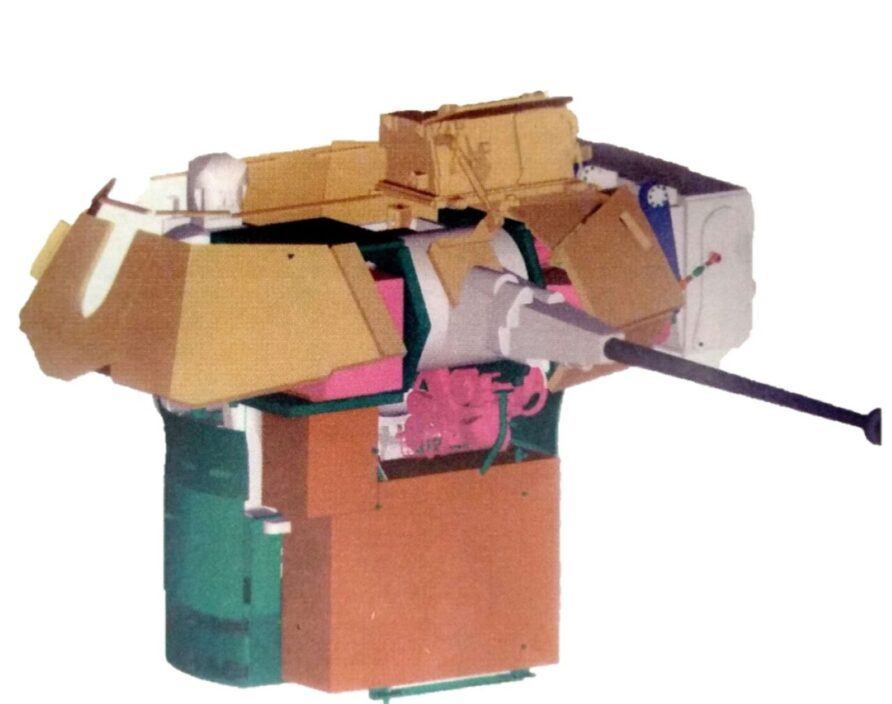
This turret had 124 rounds, not requiring any major modification to the turret structure, displays, or drivelines.
CTAI and GEC Marconi started work on the Remote Weapon Station Concept in 1996, with additional work completed in 1997. The stabilised RWTC used the 40 mm CT2000 and could carry 96 ready rounds (36 APFSDS-T and 64 GPR-T). Fully loaded, it weighed 892 kg, was equipped with a 7.62 mm GPMG, and had an elevation range of -12 degrees, and +45 degrees.
Contracts for an initial TRACER study phase were signed with two consortia, each composed of a mix of UK and US companies, in January 1999.
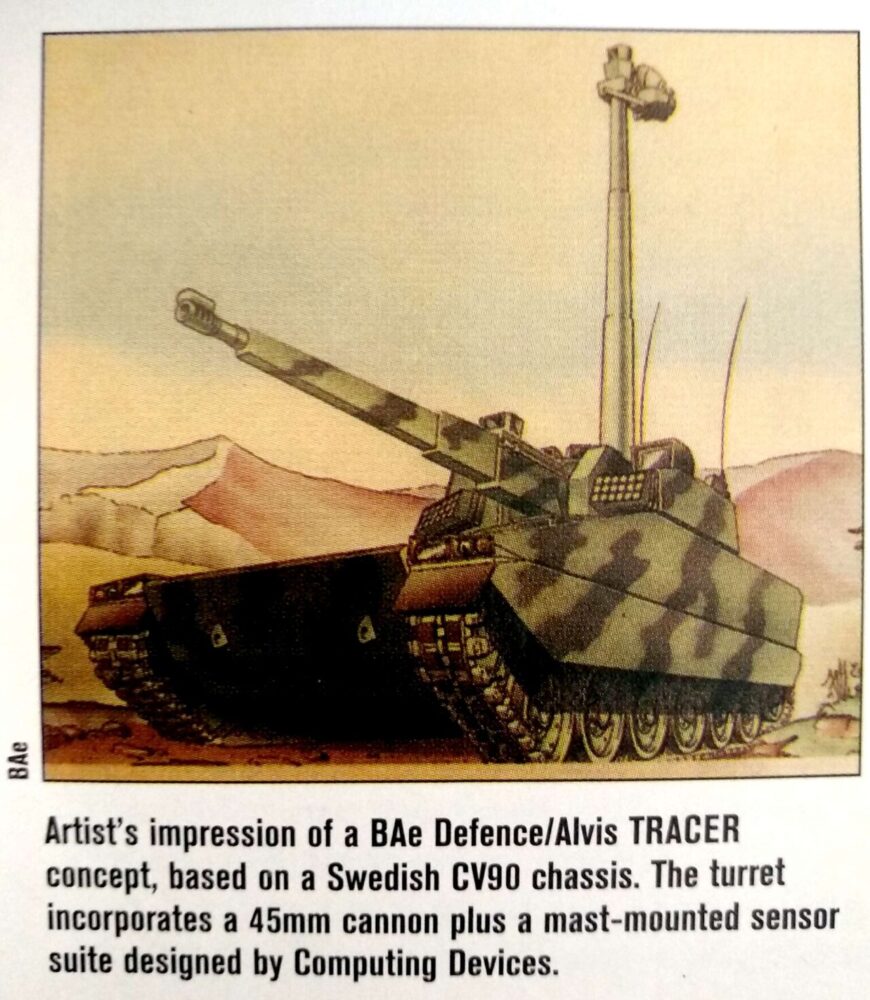
The two competing consortia for the Project Definition Phase were:
- SIKA International (British Aerospace, Lockheed Martin, Vickers Defence, Smiths Industries, Computing Devices Company, Pilkington Optronics, Shorts Missile Defence and General Dynamics)
- LANCER (Marconi, Alvis, United Defence and Raytheon).
Each was required to produce detailed specifications, training requirements, production plans/costs and an integrated demonstrator vehicle.
Two years after the Inspector General report, in 1999, further interest from the USA resulted in a representative turret containing the 40 mm CTAS integrated into a US Army Bradley infantry fighting vehicle.
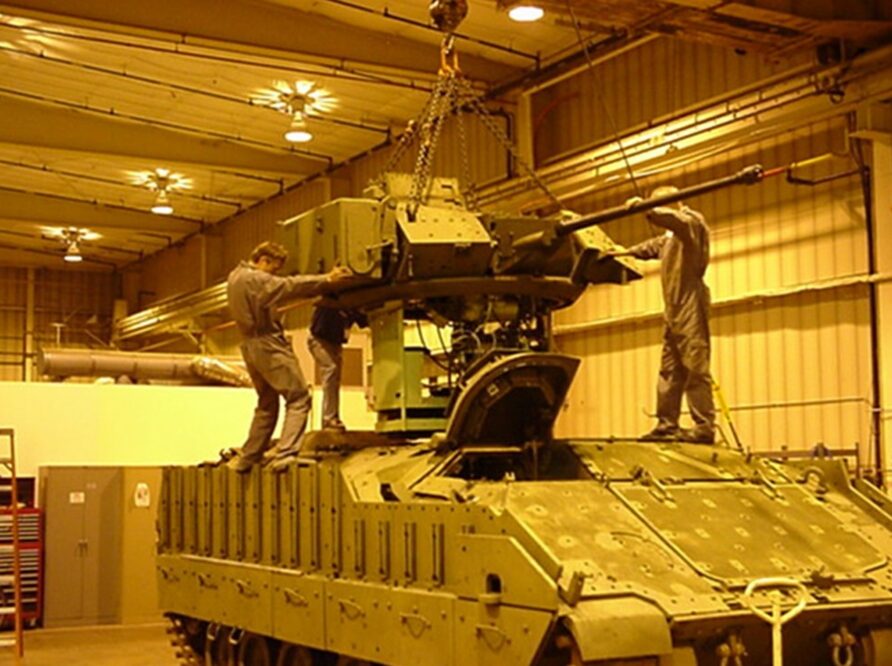
Firing trials were conducted soon after.
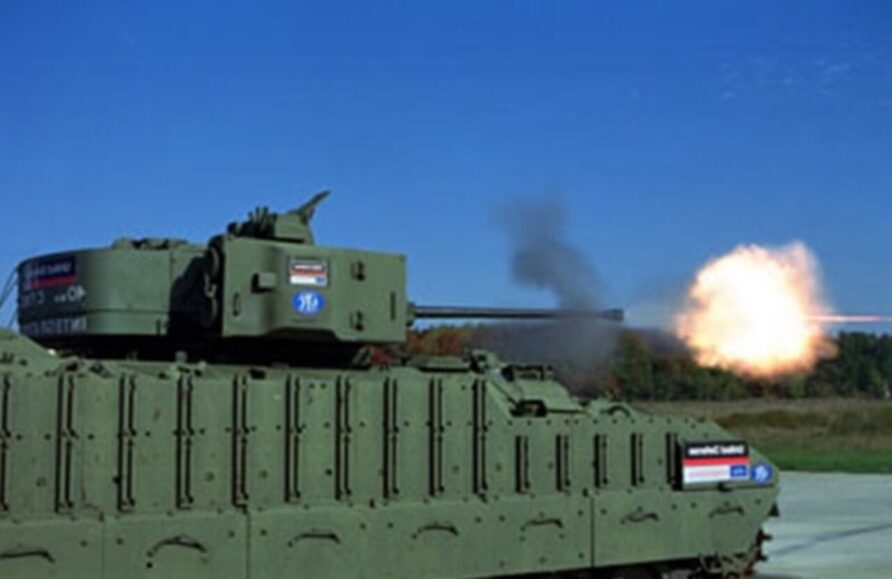
The US Army Research Laboratory published an evaluation report following the test programme.
Work on TRACER continued with both consortia testing their prototypes, each with CTAS weapons.
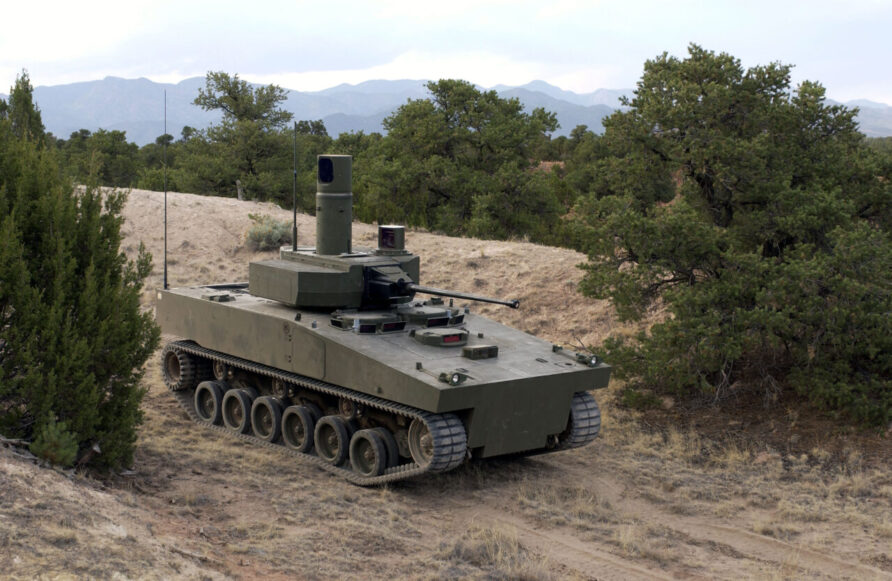
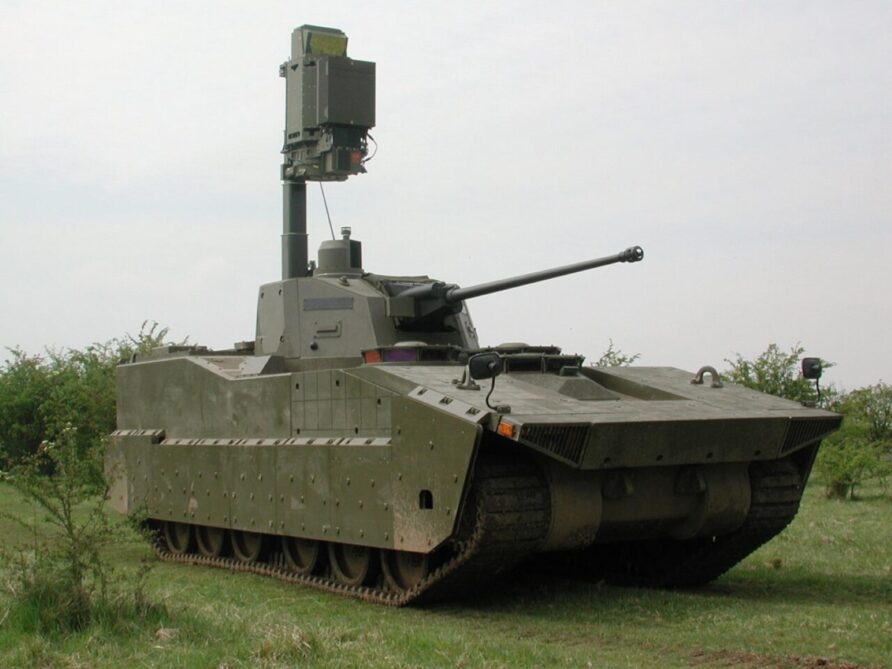
Only limited firing trials were completed by both vehicles.
To make way for the US Future Combat System (FCS), the UK FRES, TRACER was cancelled in 2001, completing their contracted work at the end of 2002.
Because CTAS 40 was still in development under separate contracts it was not directly impacted by the cancellation of TRACER and would likely form part of the FRES programme.
Therefore, various testing activities continued; icing, resistance to impact and fire, aircraft carriage and compound angle firing.
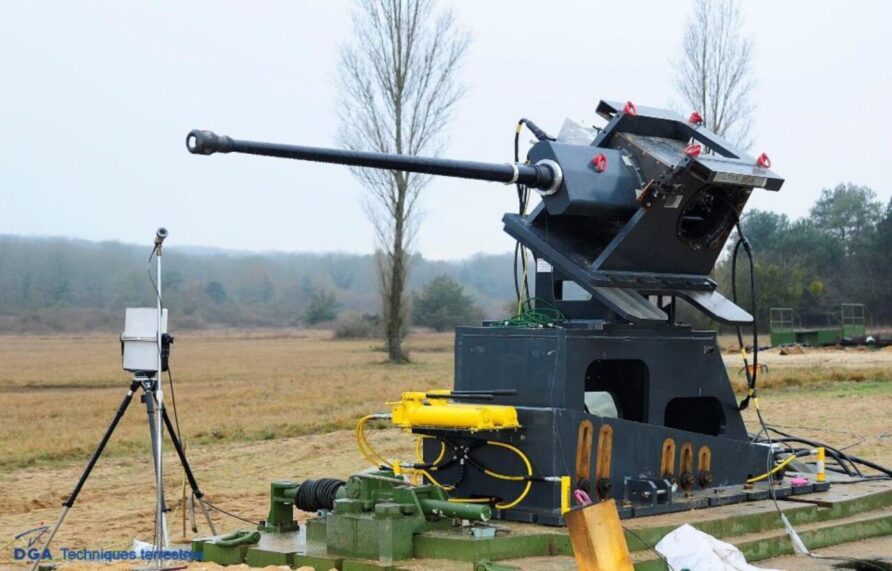
The Warrior upgrade programme started in 2001 and again planned to include the CTAS.
The Objective Future Cannon Programme (OFCP) was started in 2002, a joint programme between the UK MoD and French DGA, to further develop CTAS and bring it to maturity.
Objective Future Cannon Programme (OFCP) defined the future programme activities and some key user requirements and specifications;
- Rate of Fire 200 Shots per minute
- Fire two ammunition types selectable <3s
- Remote operation
- Low integration volume <80 litres total swept volume
- Dispersion > <0,35 mil APFSDS > <1 mil GPR
- Minimum Fatigue Safety Life 10,000 rounds
- Operates in safety –46°C to +63°C
- Satisfies prevailing UK MoD and French DGA safety standards
- STANAG 4439 insensitive
- Reliability >98%
- Supports ‘coincidence’ fire control solution
The first firing demonstration of the CTAS on a Warrior was in January 2002, in the ‘Xena’ turret, shown below.
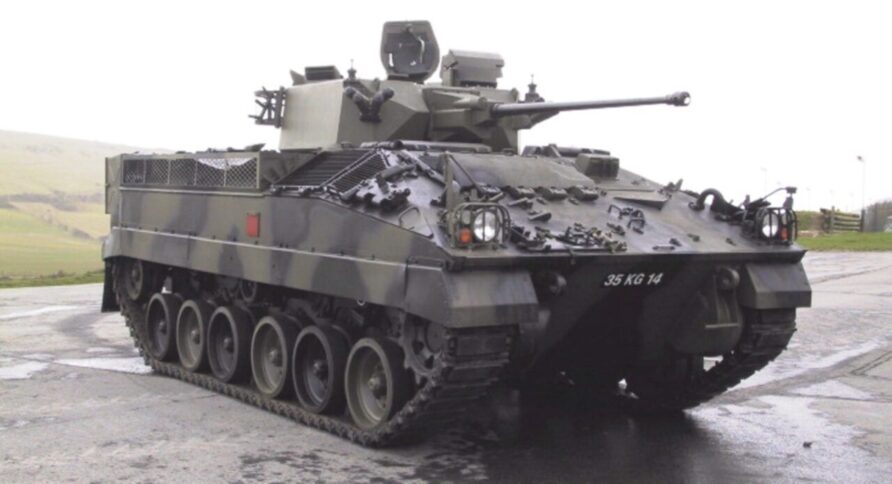
The Remote Weapon Station Concept design was tested, using a 6×6 VAB.
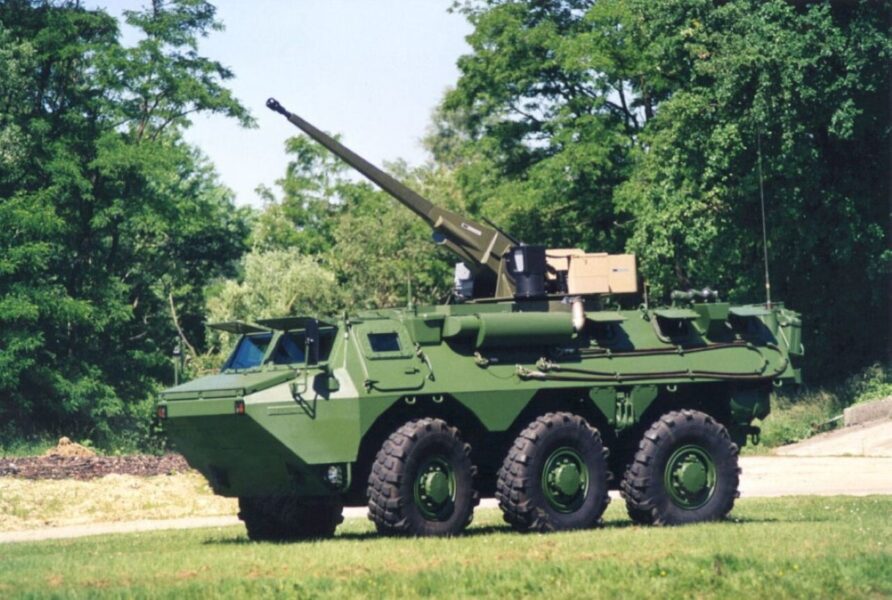
CTAI and BAE had been working on turret integration, already having demonstrated early models of both crewed and uncrewed turrets on Warrior, the crewed turret providing Level IV protection at a weight of 3.8 tonnes and the uncrewed turret providing Level III protection but at a lower weight of 1.5 tonnes.
The uncrewed turret also had all the ammunition within the turret and a simpler feed mechanism, a carrying capacity was 68 rounds, compared to 42 for the manned turret.
The MoD placed a £6m contract with CTAI on June 7th 2004 for the Manned Turret Integration Programme (MTIP).
This presentation from CTAI in 2005 provides a good overview of the testing activity.
The slides above also show a VBCI with a crewed 40 mm CTAS turret and some imagery of the turret internals.
Although not specifically aimed at Warrior, the contract required CTAI to produce a two-man turret for crew clearance and development work on a Warrior, with a target completion of 2006.
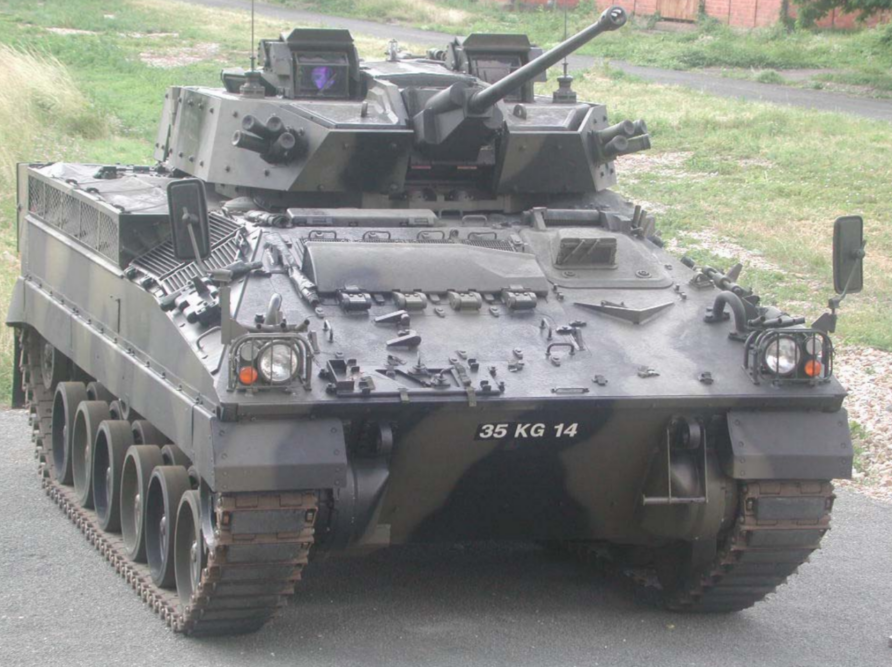
The image below shows the MTIP turret with a hinged rear bustle containing the power management system for Gun Control Equipment.
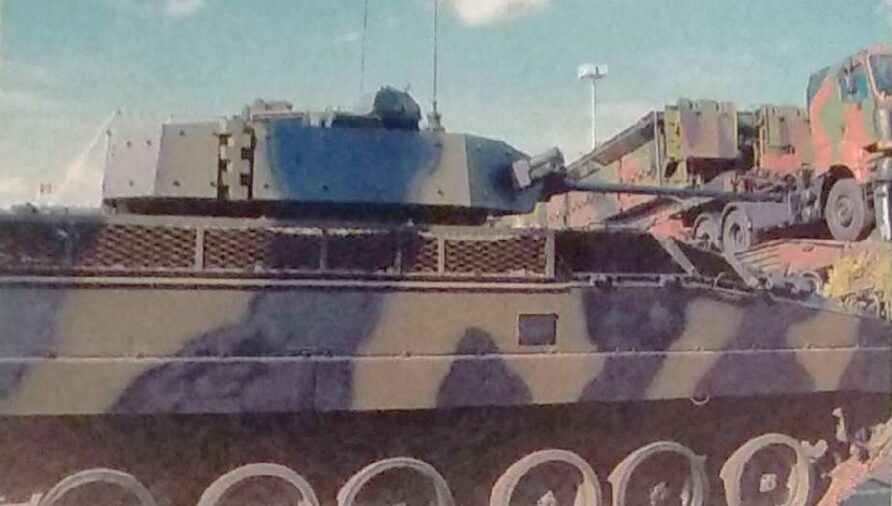
At the same time, the French Délégation Général pour l’Armement (DGA) also placed a contract with CTAI for an uncrewed turret called TOUTATIS, again, to be trialled on Warrior.
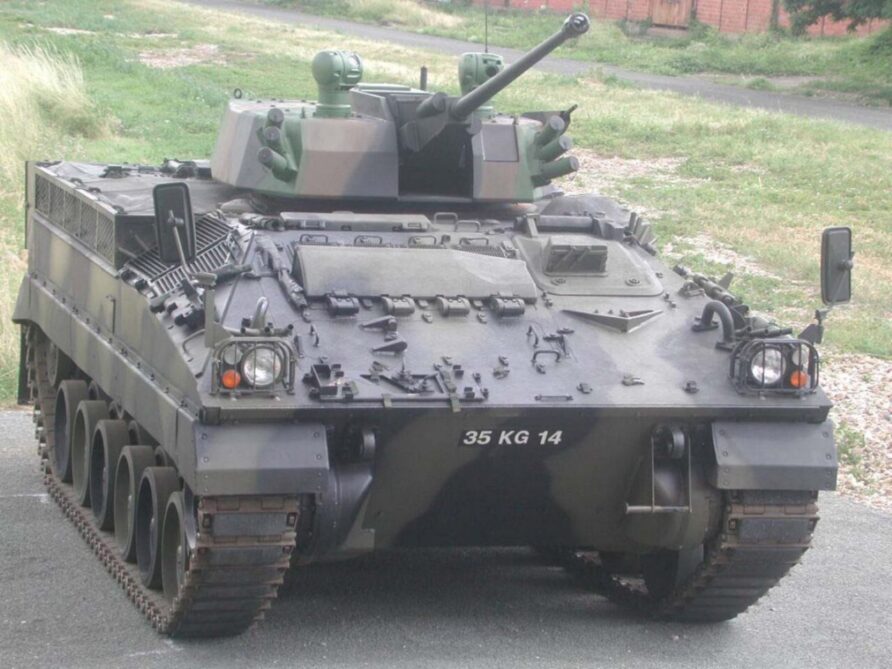
The two contracts were intended to move CTAS to SRL 6 (System integration Readiness Level).
Additional firing trials were carried out in 2004 at Ridsdale Ranges with the MTIP turret.
The original intent was that the 40 mm CTAS would be central to the Warrior Fightability and Lethality Improvement Programme (WFLIP).
In 2005, the MoD announced an open competition, despite the significant investment in the CTAS since the early nineties.
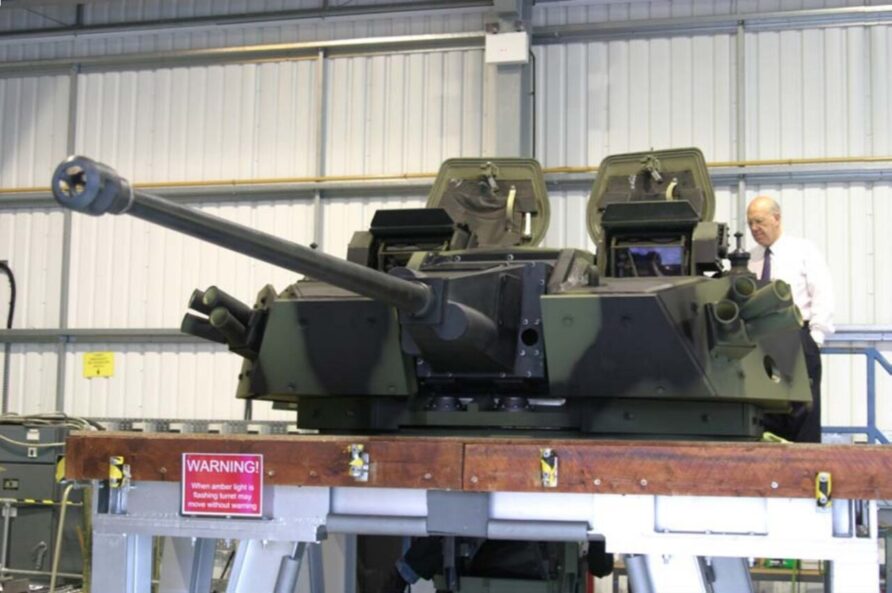
The competition originally specified a minimum calibre of 35 mm, but this was subsequently changed to 30 mm to allow other guns to compete.
Competing bidders included General Dynamics with a version of their Mk46 turret, as fitted to the proposed USMC Expeditionary Fighting Vehicle and now used in naval applications
Selex offered a Mk 44 Bushmaster in the Oto Melara HITFIST turret.
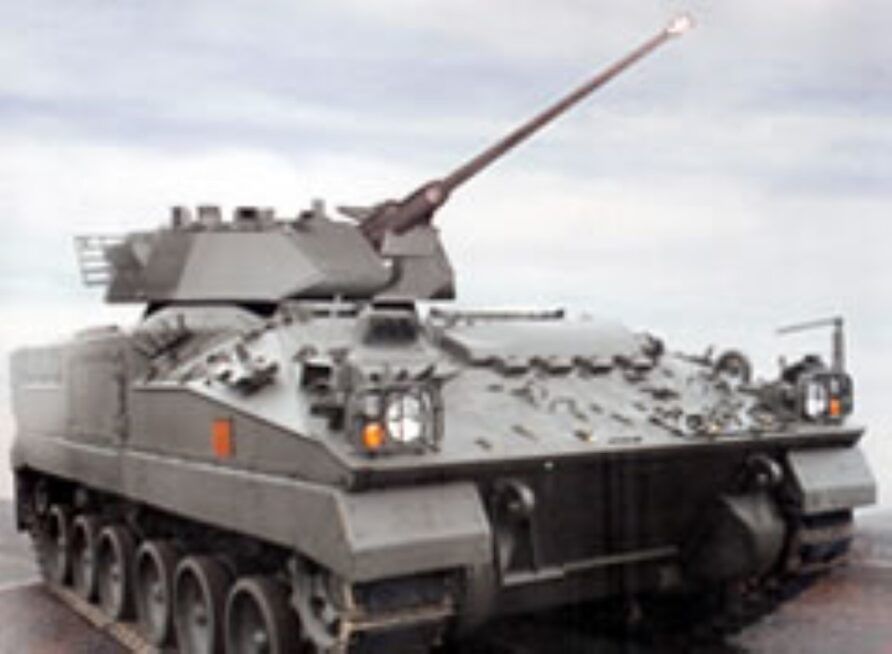
Lockheed Martin/Rheinmetall is a modification of the existing Warrior turret using the Mk44 Bushmaster 30 mm weapon.
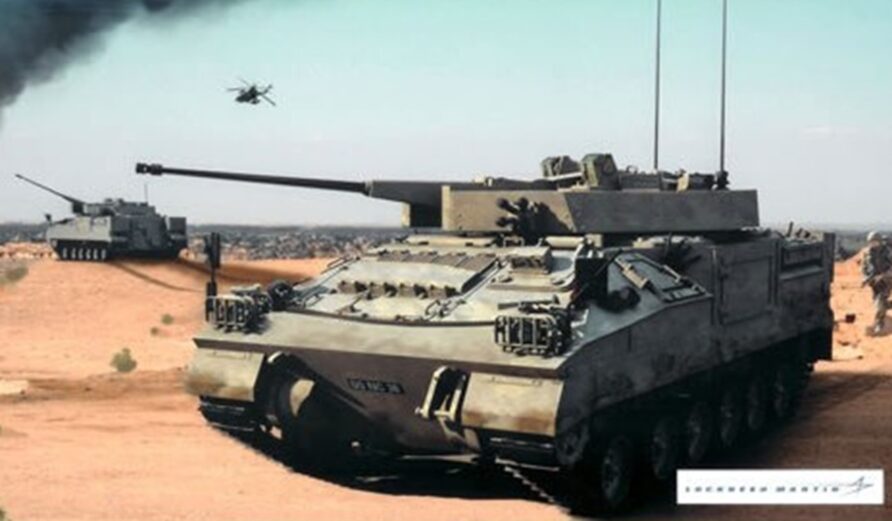
CTAI/BAE, with 40 mm CTAS in MTIP-2, was an evolved version of their mature design.
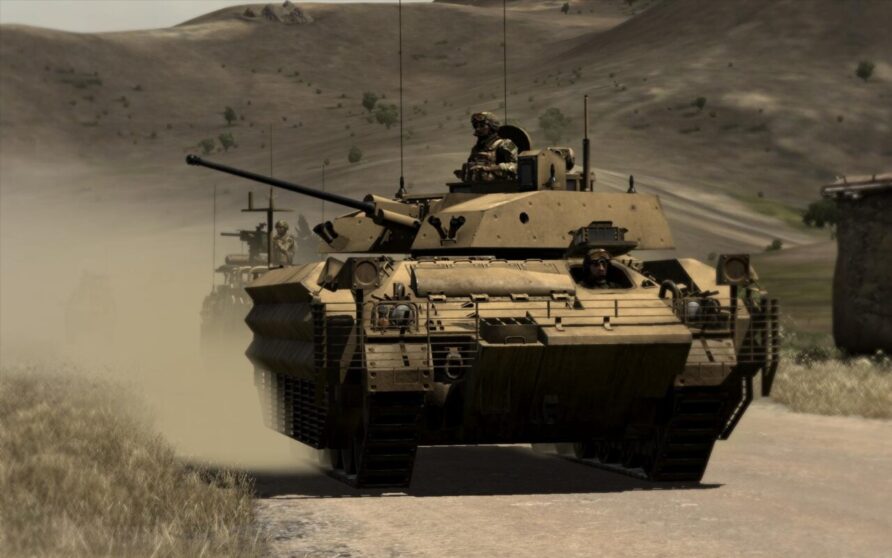
Based on a decade of experience, both BAE (also Warrior OEM) and CTAI insisted that a new turret would be needed, not a modification of an existing turret.
France and the UK agreed on a common certification process for the 40 mm CTWS in March 2006, with initial firing trials at Lulworth that year, with the MTIP-2 turret.
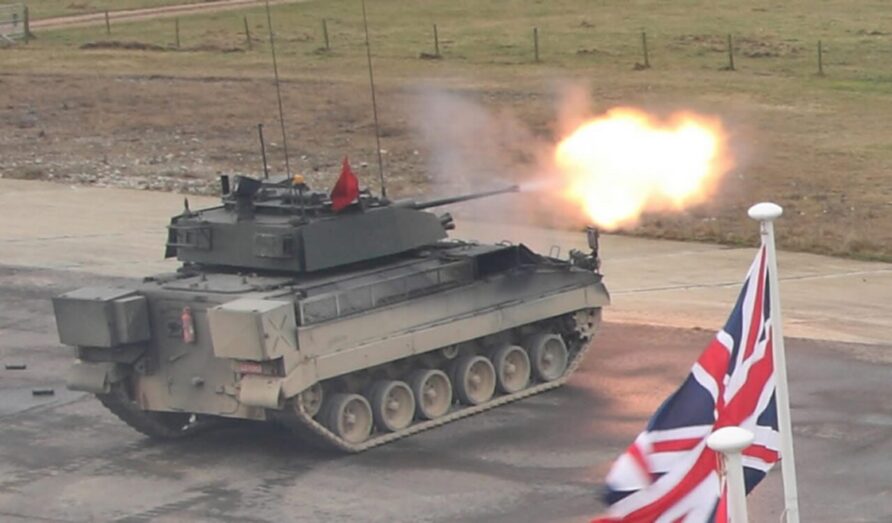
In April 2008, the MoD announced that the CTA International 40 mm CTWS had been selected for both the Warrior and FRES Scout, although the MoD did not select a turret design.
In response to the MoD’s earlier requirements, the industry had bid for both cannon and turret, now they would have to bid for only the turret, with the CTAS being provided as Government Furnished Equipment (GFE).
This did not go down well with the bidders.
General Dynamics then withdrew from the competition, leaving Selex, BAE and Lockheed Martin, all but one now facing the prospect of redesigning their turrets to include the now-mandated 40 mm CTAS.
Selex withdrew later in the year, leaving Lockheed Martin and BAE to compete for the requirement, the former now having to use the 40 mm CTAS rather than their earlier 30 mm offering (shown below)
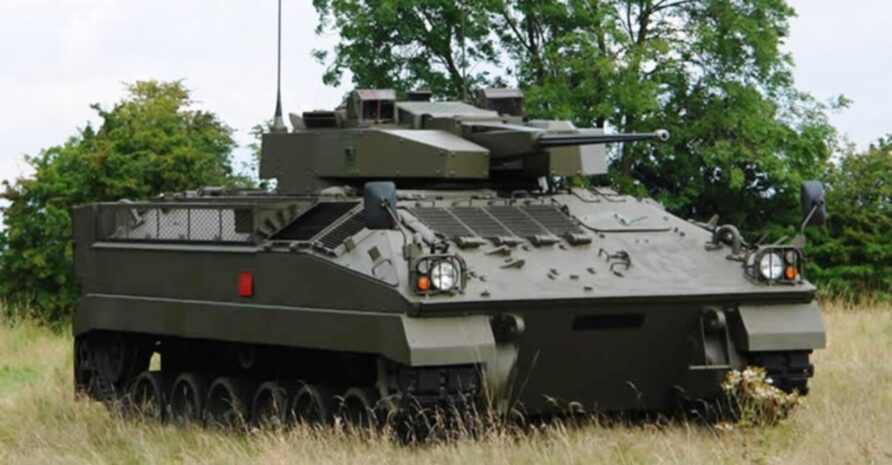
At the June 2009 Eurosatory show, BAE showed their largely self-funded MTIP-2 turret on a Warrior chassis.
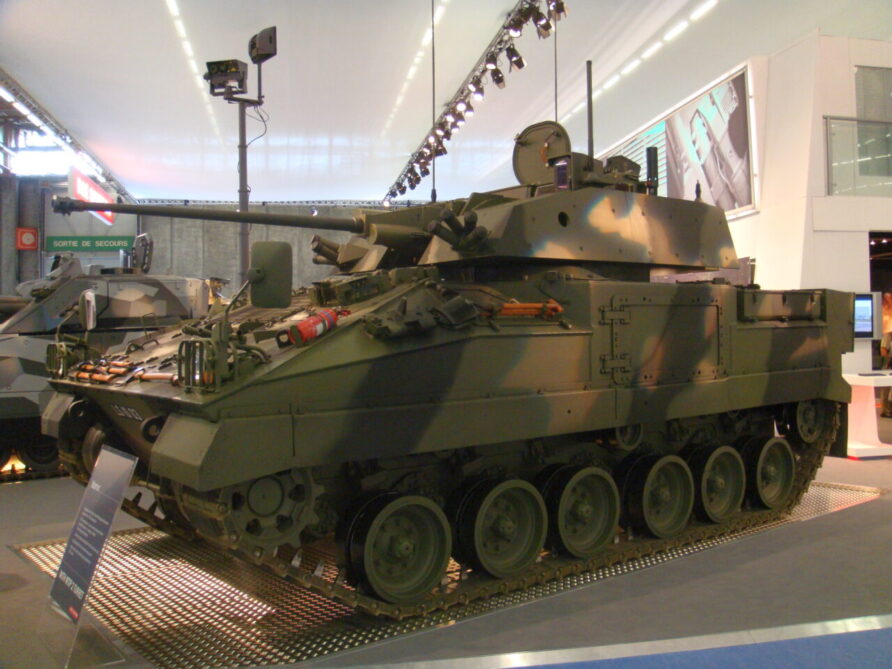
The MTIP-2 turret was a brand-new design with a fully stabilised 40 mm CTWS and applique armour package that provided the same protection level as the hull.
BAE marketing materials emphasised that the same turret could be used for Warrior and the then, FRES Scout.
By the end of 2009, after Lockheed Martin had been awarded a study contract to investigate a common Warrior/FRES turret, it became clear that there would be two turret variants, one for Warrior and the other optimised for the reconnaissance role.
Some observed that this conveniently undercut the benefits offered by the common BAE design, with Lockheed Martin marking their homework and providing themselves with a commercial advantage.
BAE and General Dynamics promoted their respective entries for FRES SV at the beginning of 2010, BAE again emphasised the benefits of a common turret based on their MTIP-2, although with minor differences depending on the role.
Outwardly there was little to distinguish the two, both used already in service infantry fighting vehicles of nineties origin as the base platform. Both were equipped with the mandated 40 mm CTA cannon, a range of C4ISTAR, protection and various automotive and protection upgrades.
BAE announced their investment of £4.5 million in a Turret Test Rig for both Warrior and FRES programmes in February 2010.
The £4.5m Turret Test Rig (TTR) will mimic the field testing of turrets for Future Rapid Effect System (FRES) Scout and Warrior vehicles by subjecting them to tests under extremes of temperatures. The tests are expected to take a turret through a 20-year lifespan in 12-18 months.
The facility is closely modelled on BAE Systems’ Mission Equipment Vibration Table (MEVT) in Minneapolis, built for the US FCS programme. Until now this was unique. The vibration created by tracked vehicles makes attaining good reliability very challenging, particularly for electronic components. Testing in the field, while necessary, is time-consuming, expensive and inefficient. Systems modelling and analysis manager Vince Whelan has relocated from Minneapolis where he worked on the MEVT to commission and use the new facility. He explains:
“The TTR will replace a large proportion of field trials with testing under tightly-controlled conditions. We will be able to begin these trials much earlier in the development process so that field trials become a matter of verification rather than investigation. We will also be able to test and iron out any snags in suppliers’ equipment earlier. “Having the TTR where the design team is based will help us pinpoint – and therefore solve – the source of any problems much more quickly and easily, so that we and the MoD can have confidence in meeting their demanding reliability targets.”
The rig was ordered four months ago and the facility is expected to be commissioned in September this year and will sit alongside the Systems Integration Facility which is already being heavily used for work on FRES and Warrior upgrade.
France and the UK agreed to further development and qualification for the 40 mm CTA weapon in February.
In March 2010, it was announced that General Dynamics had been selected for FRES SV Recce Block 1, or more accurately, were chosen as the preferred bidder.
It also emerged that General Dynamics would use a turret provided by Lockheed Martin, the actual design based on the Rheinmetall LANCE medium calibre turret. The selection of Lockheed Martin as the turret supplier was greeted with surprise by many in the industry as they had very little or no experience with the CTA system and the decision ignored both BAE and Nexter designs that were relatively mature.
With the 2010 General Election out of the way, the MoD and General Dynamics announced successful negotiations in June 2010 and the award of a £500 million contract for the Demonstration and Manufacture phase of FRES SV Recce Block 1.
In February/March 2010, alongside FRES, the MoD was also considering the future of the Warrior Capability Sustainment Project (WCSP), a competition between BAE and Lockheed Martin. Lockheed Martin proposed an upgrade of the existing Warrior turret and BAE, their MTIP 2 design,
In late March 2010, the MoD Investment Approvals Board recommended a year-long delay to WCSP.
Before the year was out, Lockheed Martin was awarded the Warrior Capability Sustainment Programme (WCSP) contract in October 2010.
The demonstration phase was expected to cost £200 million and manufacture £642 million. WCSP was designed to extend the service life of Warrior beyond 2040.
At this point, Lockheed Martin insisted that an upgraded Warrior turret would be used for the WCSP vehicles, with a new turret design for Scout SV.
By the end of 2011, Lockheed Martin had been selected by General Dynamics to provide the Scout SV turret and by the MoD to provide the WCSP turret, as part of the wider programme.
Both, with different turrets, were to have the same 40 mm CTAS.
CTAI and Thales revealed a vehicle-based anti-aircraft system based on the 40 mm CTAS, called Rapidfire.
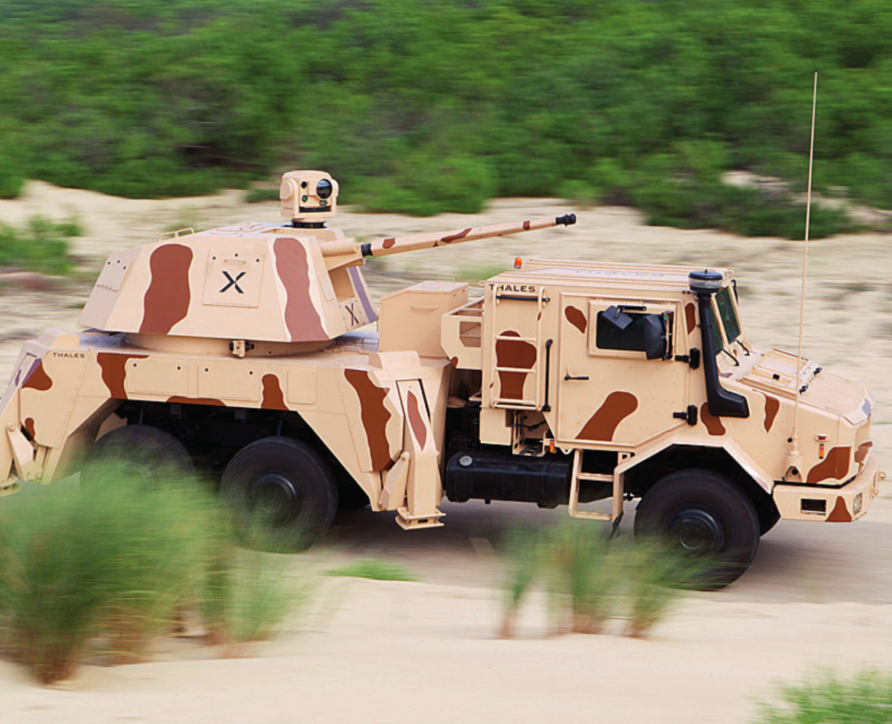
In the summer of 2013, a further purchase of CTAS ammunition was announced, to support both Scout and Warrior programmes.
Procurement of Cased Telescoped Cannons (CTC) Ammunition
The Specialist Vehicle Cannon Project Team, part of the UK Ministry of Defence, intends to place a further buy of ammunition, with CTA International through an Amendment to Contract No FRES/0075, to support the demonstration phases of the Cased Telescopic Cannon which will be provided to Prime Contractors for integration into the Scout Specialist Vehicle (SV) and the Warrior Capability Sustainment Programme (WCSP)
Total final value of contract(s)
Value: 25 629 034 EUR Including VAT. VAT rate (%) 20
Towards the end of 2013, news of problems with the Scout turret emerged.
Defense News reported that General Dynamics had agreed to pay Lockheed Martin several million pounds for failing to keep to a timetable on requirement delivery. It also reported problems with weight growth and a delayed ISD.
Also in 2013, Aviation Week reported interest in an aircraft version;
Someone was looking at putting the gun on a C-130 gunship,” he says, declining to identify the individual. “It was a U.S. company that got our data somewhere, and maybe it will give them an advantage over other bids. I was surprised when I got it. But the cannon is 300 kg (ca. 661 lb lb.) and has very short recoil. Of course, you have to control the pulse, but why not [put it on an aircraft]? We’ll see what happens next.”
After successful design reviews and 40 mm CTA qualification in early 2014, the WCSP achieved Initial Design Approval in January 2014.
Qualification firings included the APFSDS-T and practice rounds.
News emerged in 2014 that confirmed a decision by Lockheed Martin to abandon the Warrior turret conversion and proceed with a new turret design, this was no doubt cold comfort to BAE, who had insisted from the start that a new turret would be needed.
The whole programme was ‘re-baseline’.
In 2015, the MoD finally placed a production order for the CTWS, although there was an announcement in 2015 for a £75m order
The deal with the joint BAE/NEXTER company CTA International was for £150m and was to provide 515 weapons for the SV Scout and Warrior vehicles.
The contract also included initial spares, test equipment, specialist tools and some training.
There were planned to be 245 for the Scout and 245 for Warrior, the balance being used for training, trials, and ammunition qualification.
Defence Secretary Michael Fallon said;
Today I can announce we have signed a £150 million contract to fit the Scout with a new Cased Telescope cannon providing it with unrivalled firepower and a new ‘airburst ammunition’ capability.
France has also selected the CTAS 40 for use on their EBRC (Engin Blindé de Reconnaissance et de Combat) vehicles that were planned to replace the AMX-10RC and Sagaie vehicles, both using a common 2-man turret, the Nexter T40.
The Nexter Jaguar (VBMR) was planned to join the Griffon (EBRC) in the 5 Billion Euro Scorpion programme, announced in December 2014.
Nexter has also shown a VBCI-2 equipped with a T40 turret, the same turret that is used on their Engin Blindé de Reconnaissance et de Combat (EBRC) vehicles.
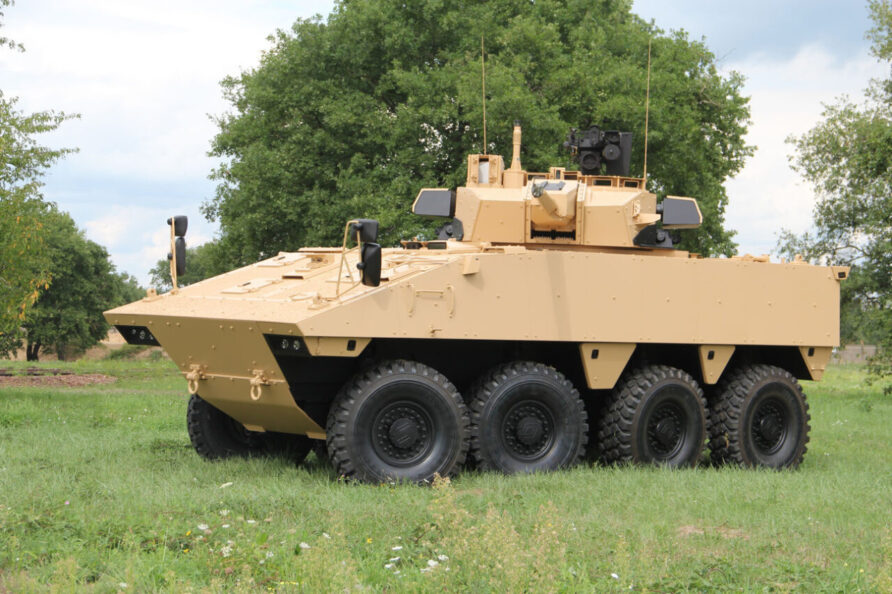
Lockheed Martin released a video of Warrior CSP live firing the 40mm CTAS in April 2015
In early April 2016, AJAX completed its first instrumented static live firing at Radnor Ranges in Powys, Wales.
Testing and qualification continued and in June 2016, the MoD issued a £12.9 million contract extension to CTAI for additional qualification.
The DE&S Specialist Vehicles Cannon Delivery Team, part of the Ministry of Defence (MOD) intends to place an amendment to contract MATT/CCAP/003 (Common Cannon and Ammunition Project — 40mm Cased Telescoped Cannon and Ammunition Qualification Programme) with CTA International (CTAI), the designer and manufacturer of the Cased Telescoped Cannon and Ammunition (CTCA) to provide services required to conduct the qualification of a Target Practice Reduced Range (TPRR) type of ammunition on behalf of the United Kingdom and French Authorities. The qualification services will comprise an initial confirmatory phase of ammunition firing trials, plus options to undertake full ammunition firing trials, testing, evaluation activities and commissioning of a production facility thereafter
In July 2016, Nexter announced the private development of a new turret family built around the CT40.
The MoD issued a contract amendment to CTAI for further qualification of the Target Practice Reduced Range round
Amendment to contract MATT/CCAP/003 with CTA International (CTAI) to provide services required to conduct the qualification of a Target Practice Reduced Range (TPRR) type of ammunition on behalf of the United Kingdom and French Authorities
The cost of this was 16.5 million Euros.
In March 2016, the first production systems were handed over
The first production standard Cased Telescoped Cannon System has been handed over to the UK Ministry of Defence (MOD) in Bourges, France by CTA International (CTAI) – a 50/50 joint venture company between BAE Systems and Nexter Systems
Ajax crewed live firing trials commenced in September 2017, a spokesperson from General Dynamics said:
The start of the CT40 cannon manned industry firing phase is a significant milestone in the AJAX programme. This cutting-edge capability that enables AJAX to pack a significant punch, alongside its wide-range of best-in-class sensors that makes it an Information Age platform, ensures that the British Army has everything they need to do their job effectively
Production and qualification continued on both Ajax and Warrior, and the Lockheed Martin Modular Turret was tested on both Boxer and AMV vehicles.
In March 2018, CTA International demonstrated the 40 mm CTWS to US Army personnel at Fort Benning, Georgia. 80 rounds were fired, including a number of the A3B air bursting nature. One of the scenarios demonstrated a typical wall breaching operation, two rounds of point detonating to create a hole that was followed by an air bursting type fire through the hole.
Belgium ordered 60 Jaguar vehicles from Nexter/KNDS in 2018.
In evidence sessions to the House of Commons Parliamentary Select Committee on Defence, both Lockheed Martin and General Dynamics laid the blame for delays with Ajax and Warrior CSP on the 40 mm CTAS; however, this was countered by the MoD.
Warrior CSP entered reliability and growth trials, nearing the end of its development programme.
A comprehensive set of test and evaluation activities of the 40mm CTAS was carried out by QinetiQ up to 2019, click HERE to read more.
In 2020, France ordered an additional 42 Jaguar vehicles, the same year the first Tranche started to enter service.
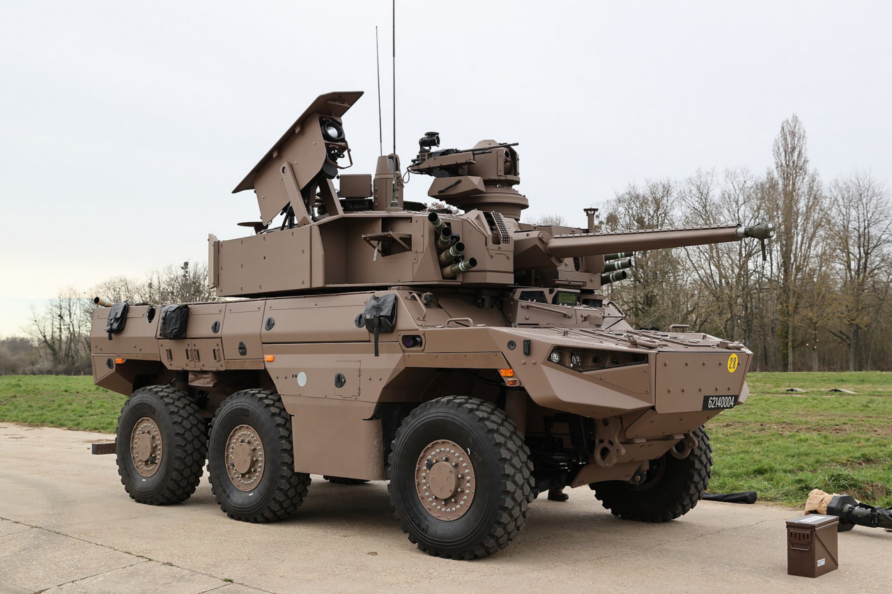
Also in 2020, it was announced that the French Navy had selected Rapidfire for close in defence.
We’re delighted to be supporting the French Navy as it enhances the self-defence capabilities of its warships. With its combination of fast-into-action time and firing accuracy, RAPIDFire, developed in cooperation with Nexter, provides the best response for protecting Navy vessels against modern threats. It has the potential to become a key component of our offering of advanced force protection solutions
Thomas Got, Vice-President Integrated Airspace-protection Systems, Thales
Warrior CSP was cancelled in 2021, the same year as the last of the 515 ordered systems were delivered.
After the cancellation of Warrior CSP, it was reported that surplus weapons might be disposed of and an investigation into improving the lethality of Boxer was carried out.
The Army is conducting an analysis on potential lethality enhancements of Boxer vehicles. As outlined in the recent Integrated Review, modernizing our armoured capabilities is not replacing ‘like for like’ but integrating our new technologies and ways of operating
Ajax continued its development through 2023, entirely a different story, with no decision on the surplus systems yet made public.
A new increment of EBRC Jaguar was announced in 2023 that would address gun stabilisation issues.
Rapidfire was shown with the Thales Lightweight Multirole Missile (LMM) in 2023.
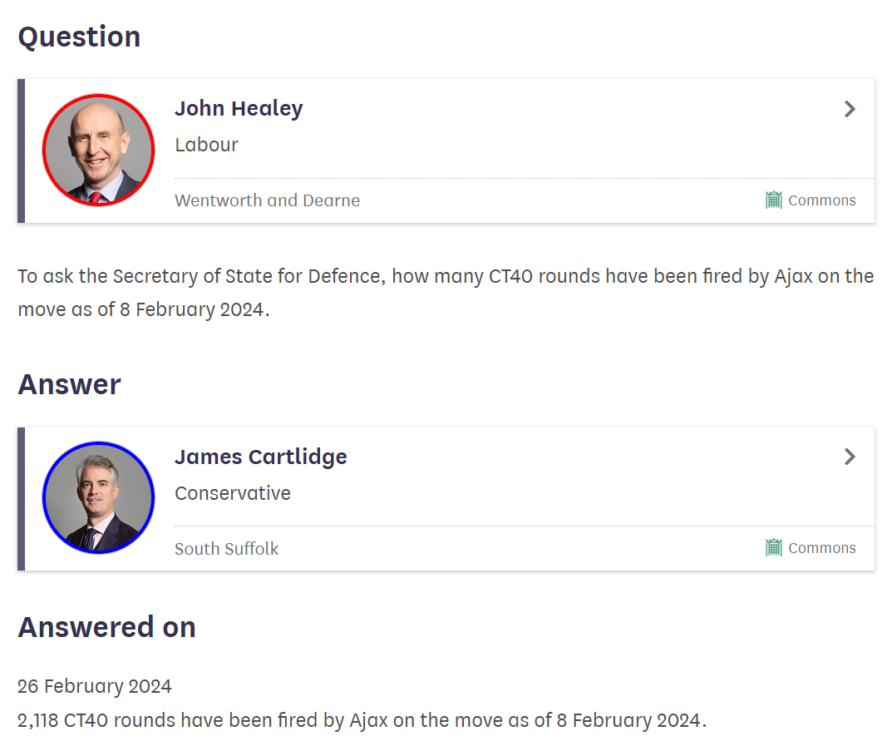
KNDS showed a model of a flatrack mounted Rapidfire system on a vehicle at the Eurosatory 2024 exhibition in Paris.
A Short Note…
Think Defence is a hobby, a serious hobby, but a hobby nonetheless.
I want to avoid charging for content, but hosting fees, software subscriptions and other services add up, so to help me keep the show on the road, I ask that you support the site in any way you can. It is hugely appreciated.
Advertising
You might see Google adverts depending on where you are on the site, please click one if it interests you. I know they can be annoying, but they are the one thing that returns the most.
Make a Donation
Donations can be made at a third-party site called Ko_fi.

Think Defence Merch
Everything from a Brimstone sticker to a Bailey Bridge duvet cover, pop over to the Think Defence Merchandise Store at Red Bubble.
Some might be marked as ‘mature content’ because it is a firearm!
Affiliate Links
Amazon and the occasional product link might appear in the content, you know the drill, I get a small cut if you go on to make a purchase
Download
You can also purchase this article as a PDF Download.
Each time I update it, you will be emailed a download link.
Back to the article…
Capabilities and System Description
The CTAS is described by several components; 40 mm CT Cannon (CTC), Ammunition Handling System (AHS), CTAS Controller (CTAS-C), Gun Control Equipment (GCE), Gun Mount and a range of ammunition.
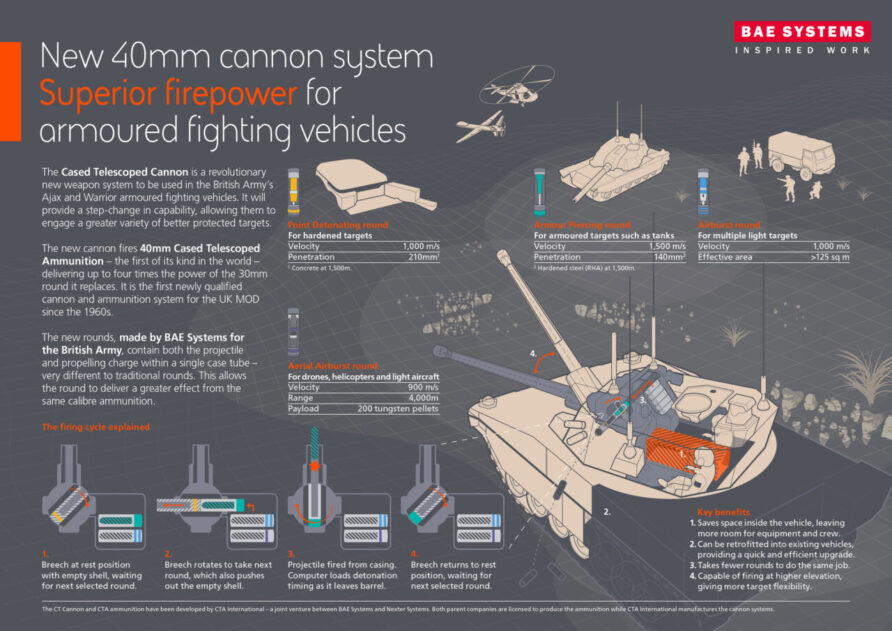
Gun System
The gun is designed to be compact.
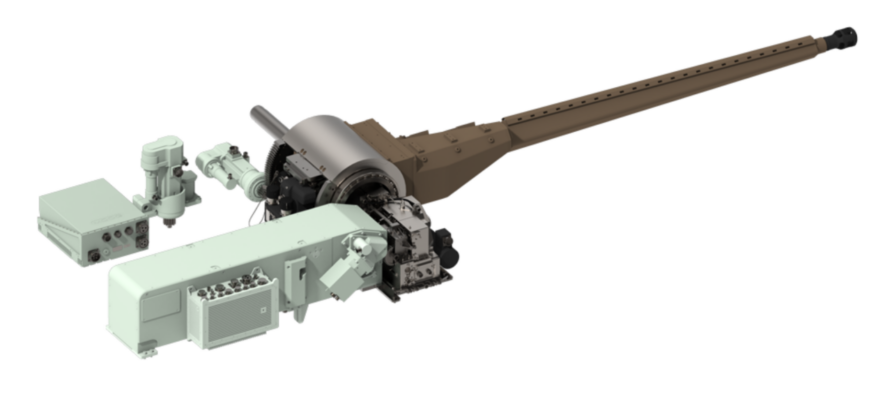
The round is inserted into the breech block through the trunnion and the rotating breech block then aligns it with the barrel, thus eliminating the need for flexible feed guides.
There are a couple of variations but the UK version will have a dual-feed system, most likely loaded with the APFDS and GPR, although other mixes may be used depending on requirements.
The system can swap from one to the other in less than 3 seconds.
A fire control system designed and manufactured by Ultra is the final component of the UK system.
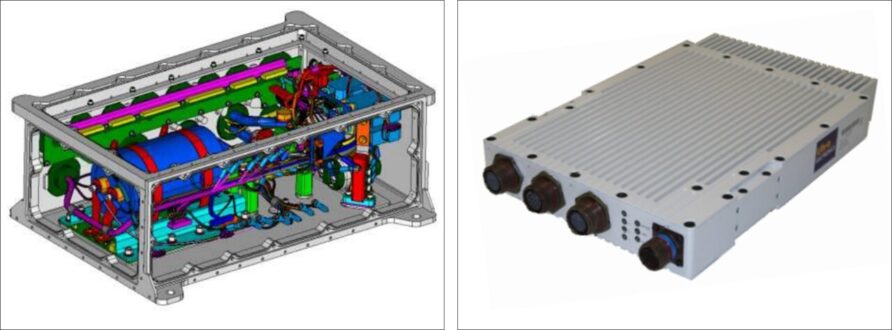
Ammunition
CTAI is marketing seven ammunition natures, described in the video below.
Armour Piercing
The first of these is the 1.9 kg Armour Piercing Fin Stabilised Discarding Sabot — Tracer (APFSDS-T) that is designed to defeat armoured vehicles such as infantry fighting vehicles and legacy tanks.
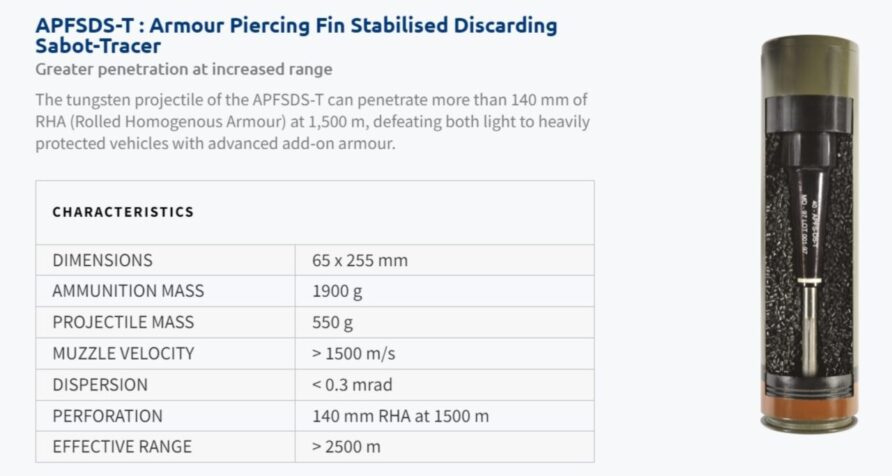
Able to penetrate 140 mm of RHA (Rolled Homogeneous Armour) at 1500m, it has a muzzle velocity of over 1,500m/s, the projectile weighs just over 500g, and has an effective range of greater than 2,500m.

Muzzle energy is reported to be 576kJ.
A more conventional 2.4 kg KE round (GPR-KE-T) provides a lower-cost option for light armoured vehicles, fixed defences and similar targets.
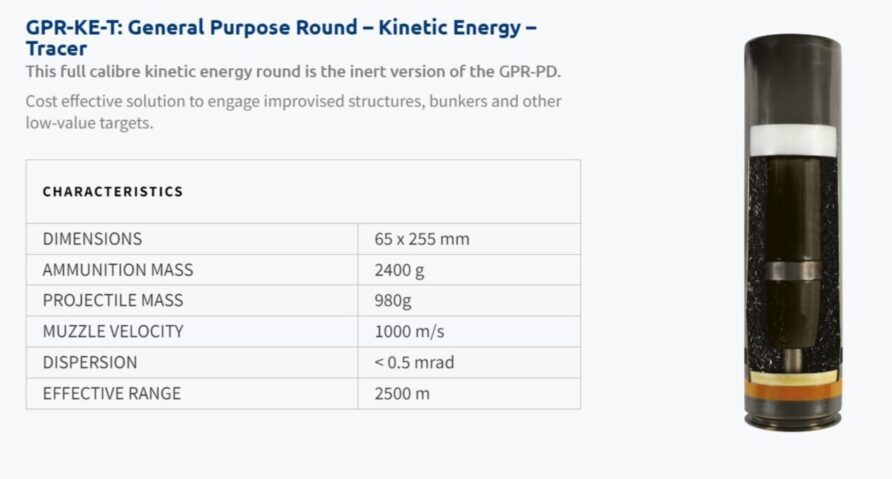
The effective range is 2,500m.
General Purpose
For use against lighter vehicles, personnel, and other fixed targets, there are two general-purpose rounds, air bursting and point detonating.
General Purpose Round — Air Burst-Tracer (GPR-AB-T) can be used against troops on a reverse slope or behind light cover, it can also be used in point detonating mode.
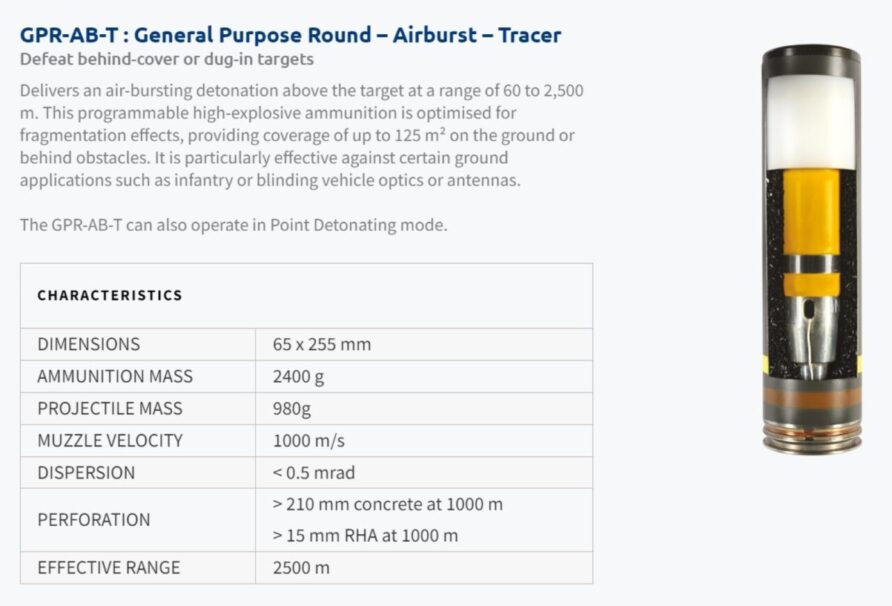
The effective range is 2,500m
The image below shows a fragmentation comparison between a 30mm airburst round (left) and the 40mm GPR-AB

The lethal area for the airburst nature at 1,500m is 125 m2.
The General Purpose Round — Point Detonating — Tracer (GPR-PD-T)
The 2.4 kg point detonating nature can penetrate 210 mm of reinforced concrete at 1,000m.
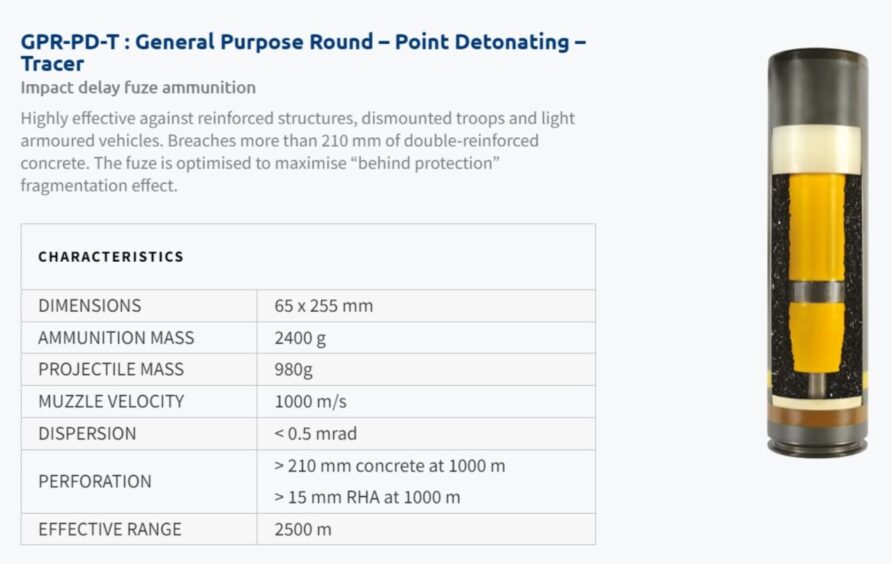
The effective range is the same as the air-bursting nature, 2,500m.
Air Defence
The most recent ammunition type is mostly used for air defence, projecting tungsten pellets forward.
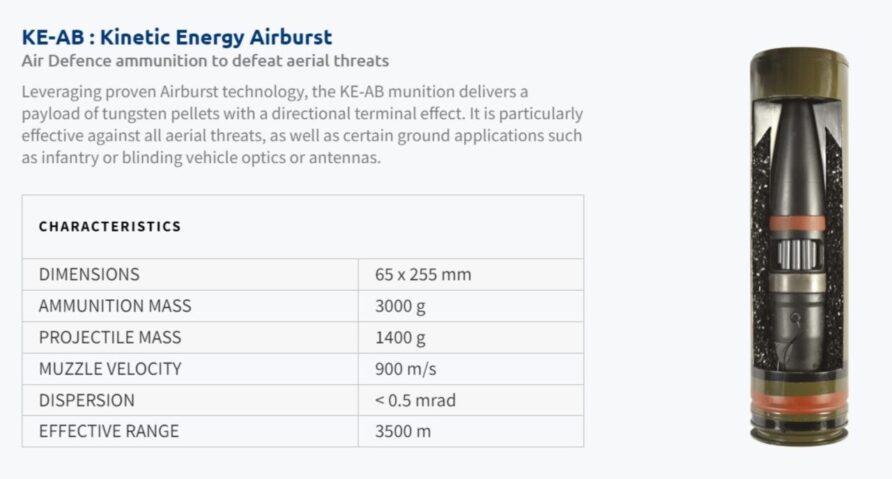
The effective range is between 3,500m and 4,000m.
Training
The Target Practice Reduced Round-Tracer (TPRR-T) is used for training, is cheaper, and results in much less barrel wear.
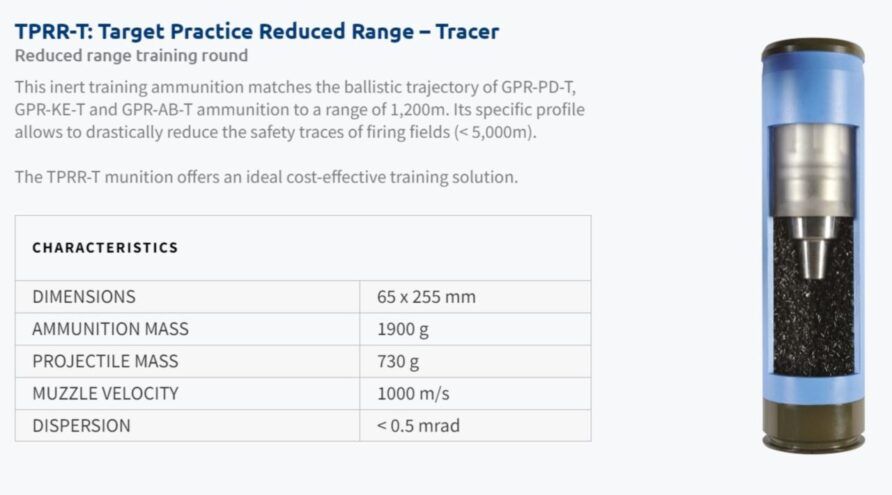
A normal-range Target Practice — Tracer (TP-T) is also available.
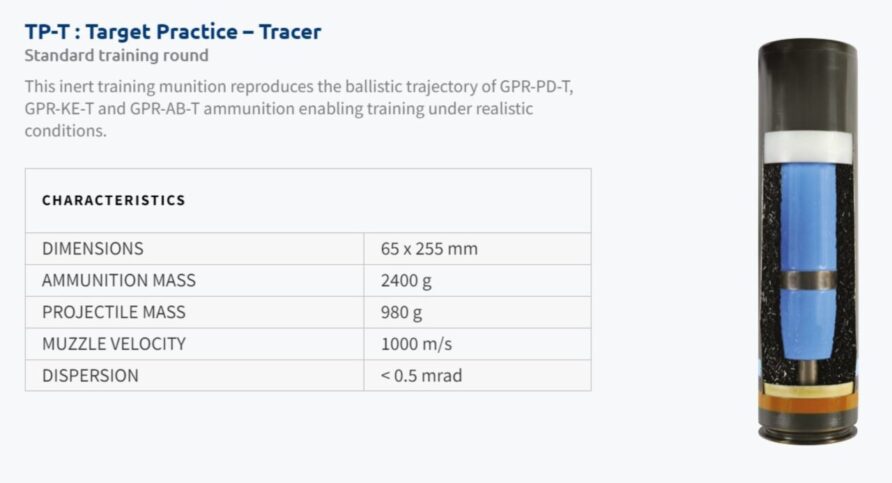
Turrets
The Lockheed Martin CSP Turret was ready for manufacture, within a hairs’ breath of completing reliability and growth trials, before the programme cancellation.
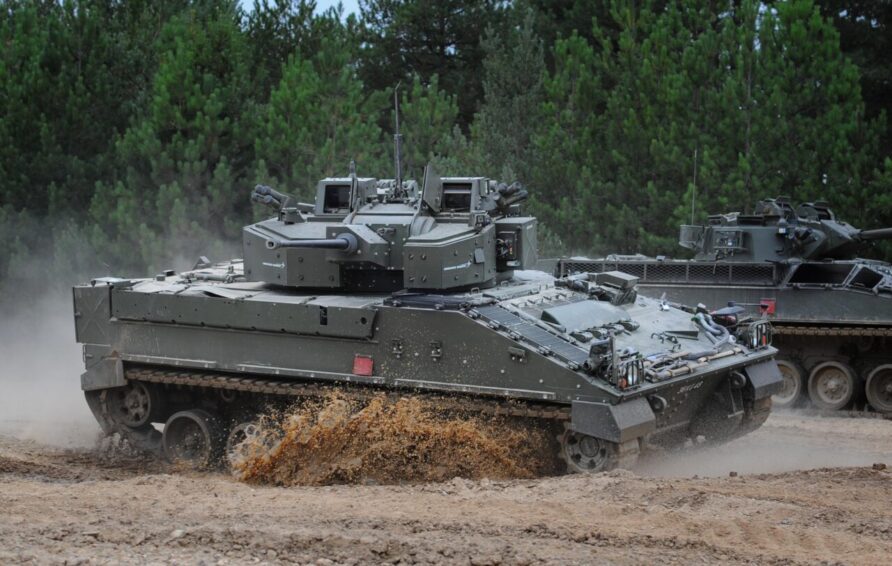
The Lockheed Martin Ajax turret will likely enter service in 2025/26 with the wider Ajax programme.
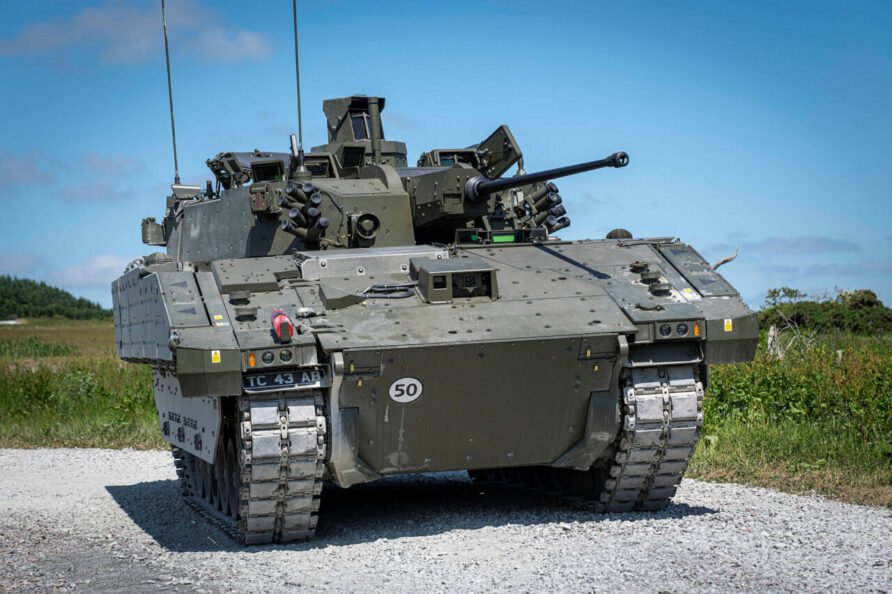
The Nexter T40M has been continually developed and is now a relatively mature system, integrated with both VBCI and Jaguar, the latter now in service.
Click here and here to read more about the T40.
Remote Mounts
Apart from the initial work done in the late nineties on the RWSC and TOUTATIS, no other similar system has been developed.

Nexter presented the RCT40 turret at DIMDEX in early 2024, a development of the Jaguar and Rapid Fire turrets, and similar to the PHILOCTETES VBCI variant.
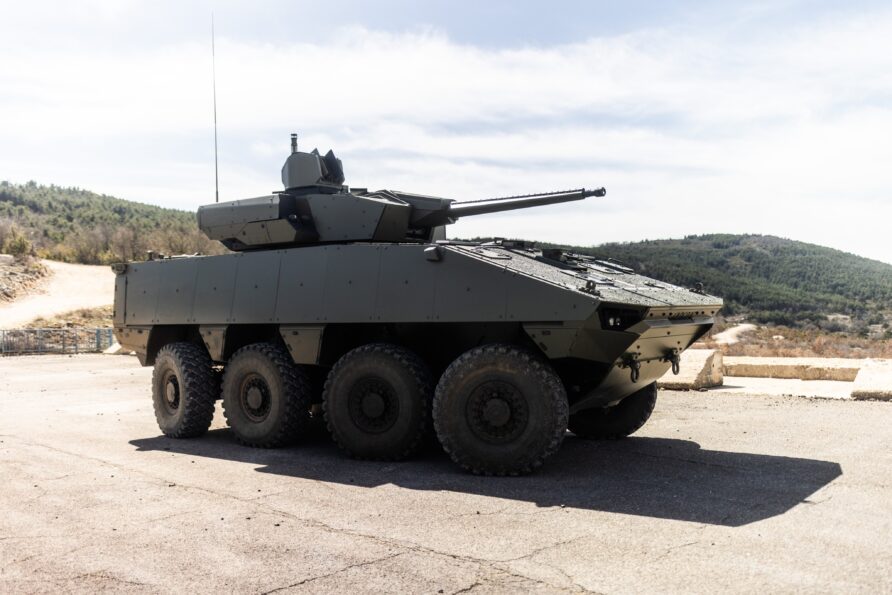
Air Defence
In the very early development of the CTAS, an air defence variant with a higher rate of fire (400 RPM) was designed, but preference was given to the slower firing version for use against vehicle targets.
CTAI and Thales have also more recently developed CTAS into an integrated air defence system using a common turret architecture for both land and naval requirements, called RAPIDFire.
Land
Effective range is claimed to be 4,000m and up to 6 vehicles can be integrated with a single control module for wide-area coverage, including fire control for Starstreak/HVM missiles.
An independent EO/IR sensor can also be used with detection ranges greater than 18 km.
Using the KE-AB ammunition, it has an effective range of up to 4,000m
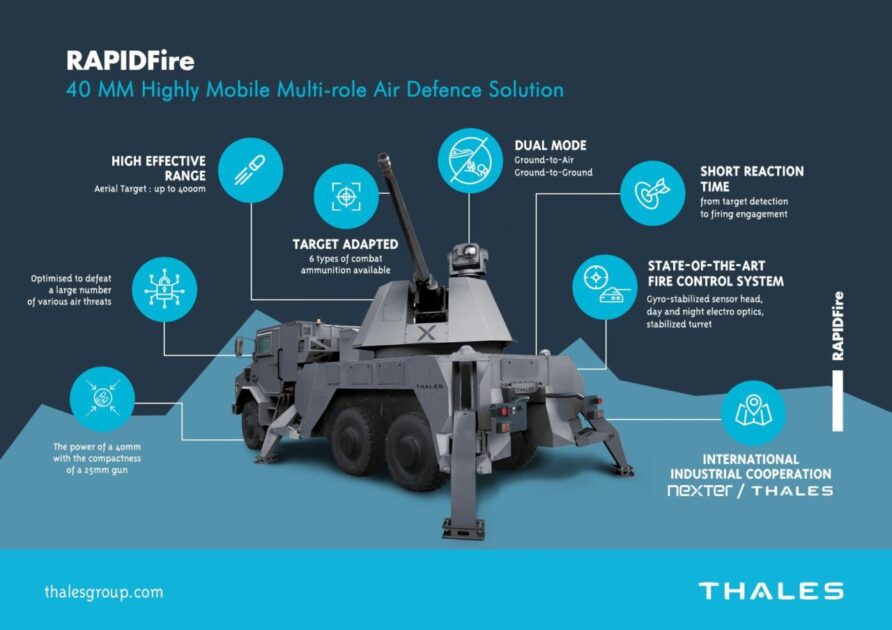
The RAPIDFire vehicle can be integrated with air defence systems and uses air defence ammunition that contains 200 tungsten pellets. Rather than using a very high rate of fire, RAPIDFire is designed to fire fewer but more effective air-bursting rounds at the target.
It can carry 140 rounds in the turret, ready to fire.
Video below.
In June 2024, KINDS France revealed this model of the Rapidfire
Naval
The naval system was first integrated with a Marine Nationale vessel in April 2023, the (BRF) Jacques Chevallier
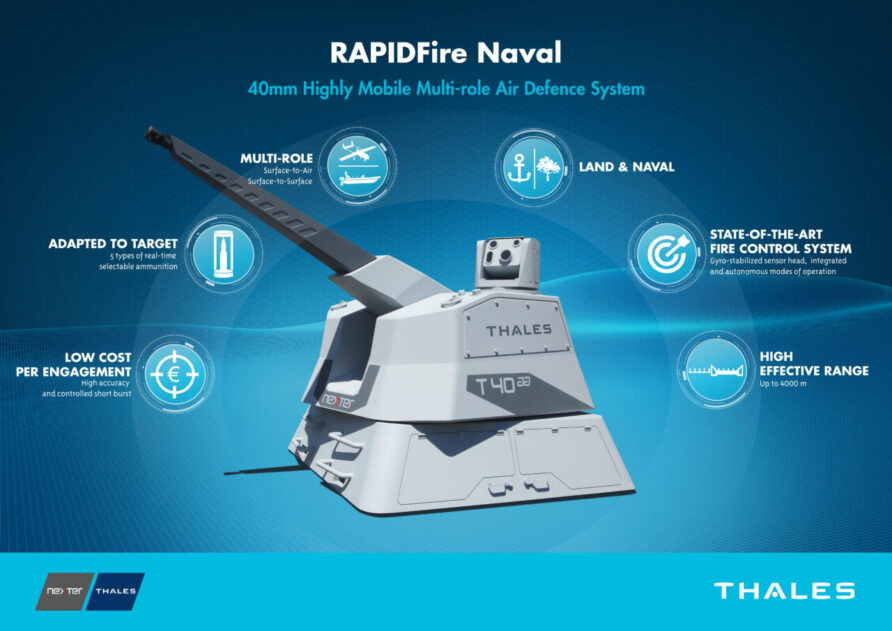
RAPIDFire Video
More pictures here
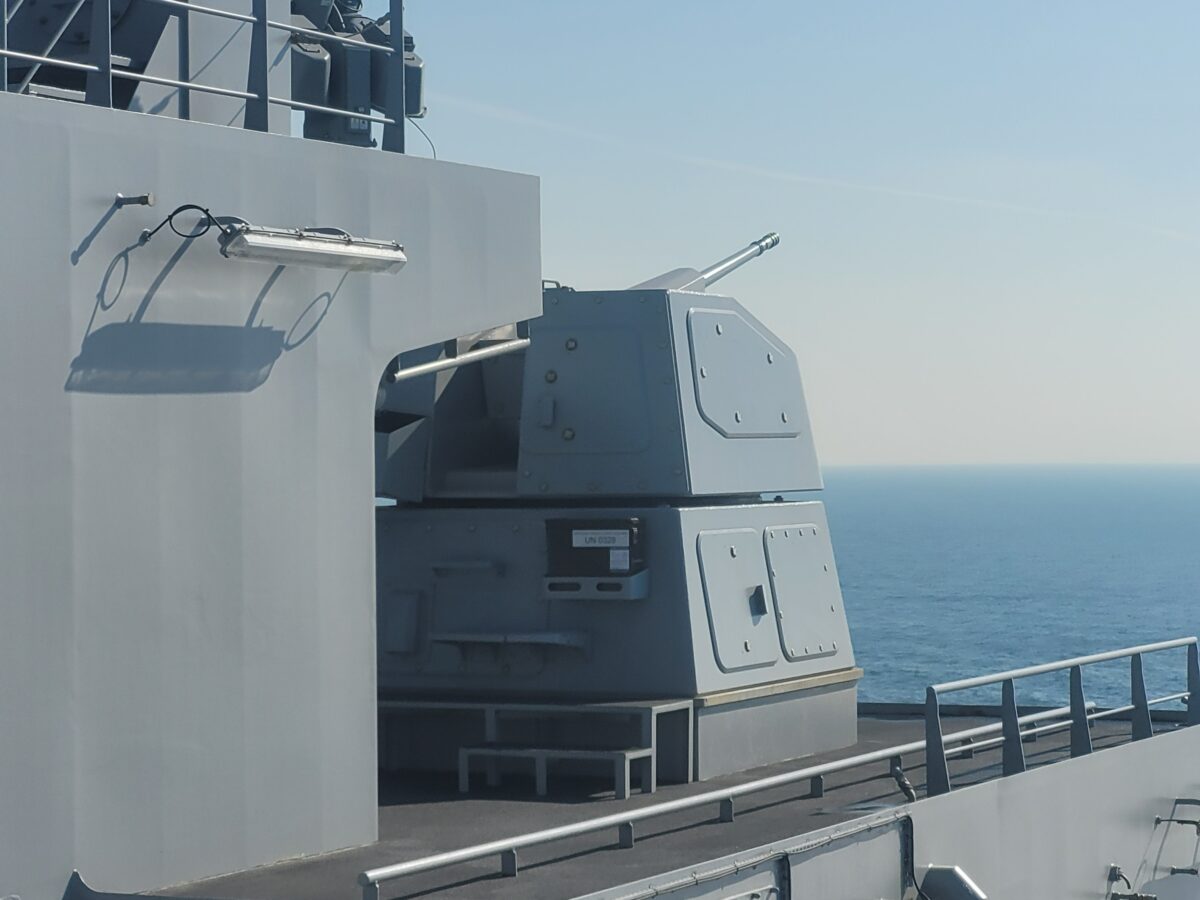
and a video showing firing trials, at approximately 1 minute in
Another video, showing its integration with the Thales LMM/HVM
A Few Closing Thoughts
Is the 40 mm CTAS a case of Europe bringing a concept into service after the USA spent a small fortune and many decades deciding it was a bad idea, or a stubborn refusal to join the Bushmaster/Bofors/Rheinmetall club?
One can see why CTAS attracts so much debate.
The simple fact is that cased telescoped systems are not the norm, and so far, only the UK, France and Belgium plan to have it planned to be in service, some thirty-plus years after development started.
It has been a long journey and expensive journey for the UK and France.
Why then has the UK and France persisted with this approach?
Two reasons, I think, space and armour-piercing performance.
Modern vehicles need modern electronics, and contrary to popular belief, modern electronics, at least in combat vehicles, are not getting any smaller. Modern vehicles also need modern people, and modern people are larger and wear combat body armour, we also can no longer insist armoured vehicle crews are small in stature.
All this places a premium on internal turret volume, so anything that reduces the volume of one of the main turret components means more room for ammunition, electronics and ergonomics, i.e., a good thing.
As adversary vehicles utilise reactive armour and other protection systems, the significant armour-piercing performance of the 40 mm CTAS Armour Piercing Fin Stabilised Discarding Sabot makes a lot of sense, especially at longer distances, i.e. outside the effective range of adversary weapons.
Its muzzle energy is very high and armour penetration, are excellent.
If there is room for a third and an area that covers both the land and maritime domain, it is the quality of the KE-AB 40 mm CTAS nature.
This comes at a cost, however, the CTAS is expensive (regardless of arguments about the cost per stored kill) and unless others purchase it, only in service in small numbers.
The burden of ongoing qualification and development will fall on France and the UK.
France has kept the faith better than the UK, bringing a naval air defence variant into service whilst the UK chose the 40 mm Bofors system, and cancelling Warrior CSP means it will only equip one vehicle type, Ajax.
That said, whether anyone thinks the CTAS is a good idea or not is irrelevant, to coin a phrase, we are where we are.
The UK’s question is whether to double down or continue with the CTAS in service on just one vehicle type.
To maximise commonality, realise economies of scale and provide confidence and impetus to an export campaign.
Export customers mean shared development costs and lower ammunition costs.
For the UK, the key question is what to do with the already purchased systems for Warrior CSP.
One would hope, they appear in a turret on Boxer someday.
Time will tell, I guess.
Change Status
| Change Date | Change Record |
| 06/02/2017 | Initial issue |
| 18/09/2017 | Additional imagery of 45 mm CTA |
| 04/03/2018 | LM modular turret information |
| 08/04/2018 | Additional information on US interest |
| 22/07/2021 | Update with Warrior CSP Cancellation |
| 28/04/2024 | General update |
Discover more from Think Defence
Subscribe to get the latest posts sent to your email.


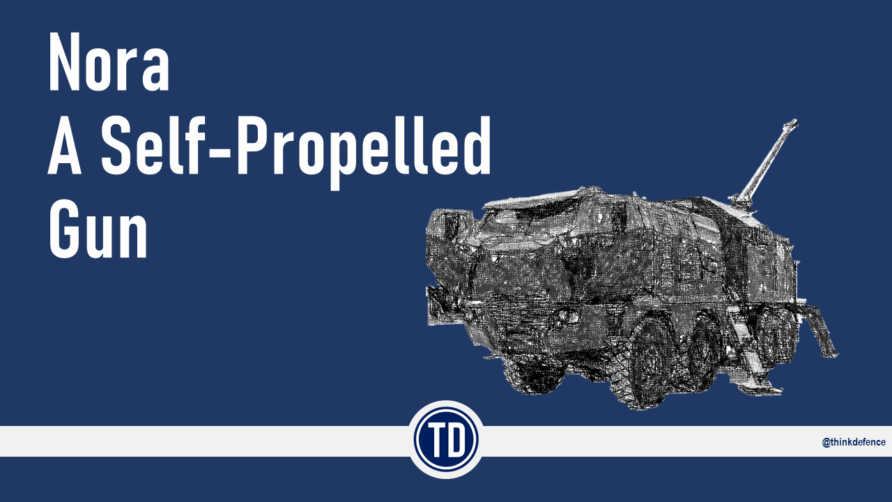
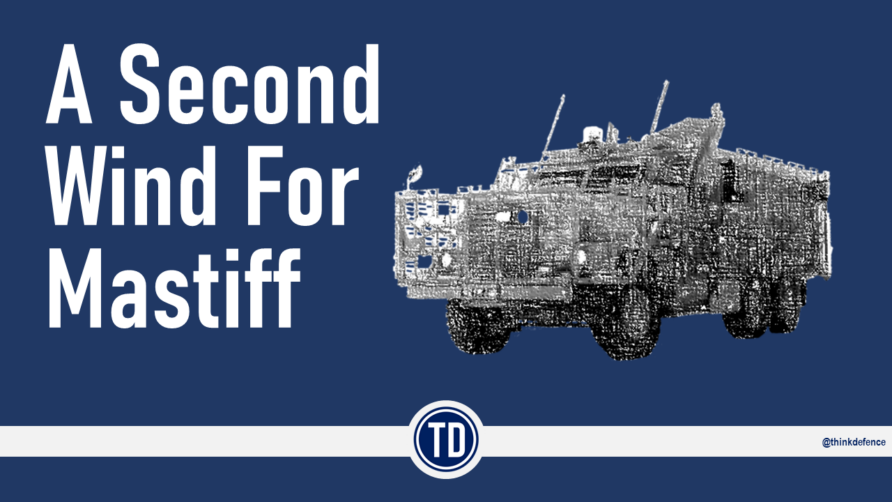
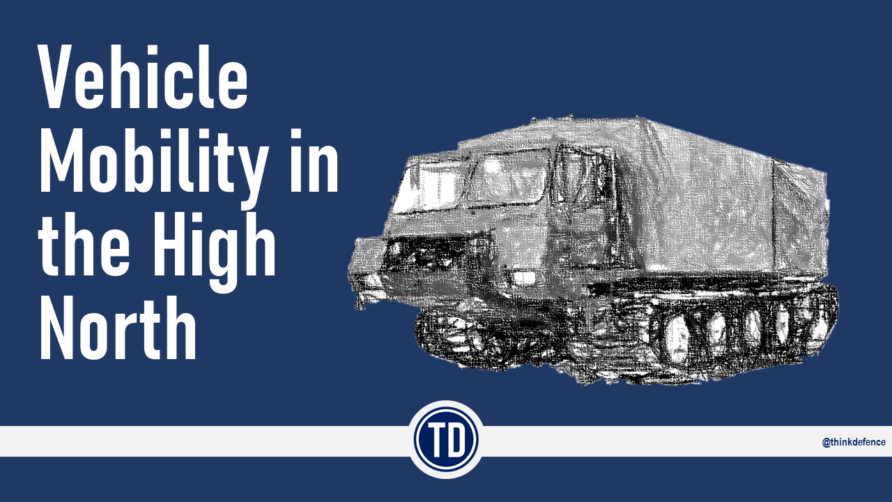
Christ that’s 1/4of a century gone and still not in service. Drag it out long enough and that’s your entire career sorted out.
I think with any review of the Cased Telescoped technology one should also read this:
http://www.dtic.mil/dtic/tr/fulltext/u2/a370886.pdf
Just to see where the US got to with the technology.
Why haven’t France and the UK gone with Super 40? Super 40 isn’t made in France or the UK.
I’ve never been particularly convinced that the cased telescoped rounds are particularly space efficient – telescoped conventional rounds do much the same job while being narrower and cheaper.
Additional armour penetration is nice if you want to play baby tanks. Not sure that’s a good idea, or really a tacit admission that we aren’t willing to deploy real tanks. Either way, it’s the 2pdr again.
Having more rounds is nice as well and you’ll get considerably more super 40 rounds than you will CT40 in a given space, provided you have the 50mm extra length you need for the super 40.
Great article TD. One tiny mistake i wanted to alert you to – in the final sentence in the Capabilities and System Description section the words ‘cost of the’ are repeated. Just wanted to point it out to you as i know how hard it is to try and check your own work and how easy it is to miss things like that
The compactness of the CTAS cannon & its ammunition, is a step forward, provided it is reliable & robust enough for real world operations. Only time will tell.
Is any of it (cannon and/or ammo) made in Britain? Or are we just pouring UK taxpayers cash into France? Just asking.
Great article, I knew it had a long development period but 20+ years and still no weapon in service is slightly depressing.
Out of interest do you have any further background on the reasoning for the switch to 40mm from 45mm? It seems a strange choice when there were already workable 40mm options in use when it was made (the CV90 already being in Swedish service in its initial version).
Also does anybody know why VBCI didn’t adopt either this or a 30mm/35mm weapon? I assume weight constraints or not being service ready but 25mm without DU rounds is looking dated vs BMP3. Especially interesting when you see the unmanned turret being tested on the VAB, a potential midlife VBCI upgrade?
I’ve often wondered whether it would have been better to take the advantage of the compactness of the rounds and go for a 50mm solution offering overmatch of potential threats for a lot longer. A similar reason to the Dutch adopting 35mm when they saw 30mm might not be able to defeat BMP3+ over the service life of the CV90 buy.
Some parallel US efforts
http://www.dtic.mil/ndia/2014armaments/Wed16537_LeFante.pdf
I think you are barking up the wrong tree trying to put the gun on a gunship. The whole point of a gunship is to hit targets cheaply. These are generally soft targets. While I am sure it would do the job I don’t see the cost lining up with the mission. It isn’t enough additional deployment to bend the cost curve. The existing gunships use weapons that largely fire very cheap ammo.
I see the desire to have a secondary anti air capability but I don’t see it as an anti UAV system. It doesn’t have the range to hit targets at their likely operating altitude from what I read here.
The real key to getting anywhere with this will be continued development. The problem is you really need a large scale purchase to get it out there and drive down cost. Seems like an unnecessarily fragmented market in the west. I would probably put money on the German gun being the most widespread in the end. The reality is that in the absence of a European wide solution is that this is likely to be a pretty expensive system to operate. Putting it out there in a few dozen more emplacements won’t make a huge difference. It liely needs widespread IFV deployment in the multiple thousands to see the price of ammo drop appreciably.
Compare the Swedish army:
They built a new IFV for their much smaller country and army, and simply added a 40 mm gun that dates back to late 1920’s, and had the vehicles in service since the 90’s as IFV and as a SPAAG version using the latest ammunition types – including substantial export successes.
GBP 131 million – to them that was the equipment of an IFV battalion, not a still militarily fruitless development effort.
goes pretty well, too:
But then again, they had already built this one
that doubled as a monitor, sailing up and down their river-line defences in the North of the country
“(although thinking that it can defeat modern tanks would be incorrect, and possibly dangerous”. Not entirely true, it depends where where the attacking vehicle is relative to the target MBT longitudinal axis – and this is a tactical matter. A hit in the centre of the hull rear will result in an M kill and sometimes more. Ginge Bagnall and mobile defence lives on.
Symetrical rounds are space efficient., and the breach design of CTA40 is space efficient. This all increases the scope for trade-offs in AFV design. Not forgetting that greater ammo load increases operational flexibility and capability by reducing the logistic support frequency.
The issue is ammo manufacturing techniques to reduce unit cost and maximising the output of each production line (2 day weeks are not cost effective).
Jeremy, whether the ammunition has the range to shoot down UAVs depends on what you’re trying to shoot down.
A vehicle like the RA’s Watchkeeper would be vulnerable. The Russians have used similar systems extensively in their recent operations.
Small caliber AAA can also be very effective against low level combat aircraft. In the Falklands War, Argentine 35mm short range air defence systems shot down two Harriers, one Skyhawk, and one Mirage.
On use in gunships, the space saving aspect of CTA becomes largely irrelevant when mounting a gun in a large cargo aircraft. So cost and other properties probably would take precedence in the choice.
Silliness being spread here already.
I know for a fact that the Swedish Army would dearly like to replace the 40mm bofors on their CV90s at the earliest opportunity, the money has just never been available. It is no coincidence that all the export customers have chosen a Bushmaster derivative.
Meanwhile the Norway upgrade/new-build deal suggests that CV90 is just as expensive as everybody else’s IFVs.
Randomer,
The larger the calibre the less rounds you carry, no need to make a gun any bigger than necessary to defeat the intended target.
That’s not silliness, that’s you not getting a simple point.
The Swedish army has had 40 mm-equipped IFVs in service for decades, while the army of the UK has not – instead it chose to spend funds that would have sufficed to upgrade 100-150 IFVs or build 50-100 all-new IFVs on a development that did not yield any gain in defence or deterrence for two decades.
The Swedish CV9040 has to be compared to Warrior with 30 mm RARDEN, not with a hypothetical CV90CTA40.
In the future the Swedes may adopt the CTA40 without spending anything on its development and little on its integration. Meanwhile, the army of the UK will likely embark on a development project for some magical missile for 20 years, while the Swedes invest the difference between these two expenditures on something useful.
Nice recce wagons they’ve got
The use of this weapon on RN ships seems like a no brainer same with the Rapidfire anti air system. Surely using the same weapon & same ammo across the services make perfect sense.
I wonder if the Rapidfire setup would fit an existing armoured chassis like the AS90 given that we have retired some.
I fail to see why the Royal Navy would need to upgrade to 40mm even if its about commonality. Even if you pack that on a OPV its not a leap forward.
Would it not do pretty much the same as this combo, out to the same range
http://www.msi-dsl.com/_images/item_graphics/sigma-1.jpg
plus have a significant boost on the anti-air side of things?
Watchkeeper and other UAVs seem to operate at an altitude the exceeds the maximum range this article indicates for the gun of 4,000 meters. The effective altitude would generally be less than the max range as well. Even a Scan Eagle could fly over your range.
It might have a marginal capability against those kind of targets.
If you want to do this over a big area I think you likely need something with more range.
DRACO with its 76 mm RF gun would address all those simple drones well, and the really sophisticated large ones justify the expense of an area air defence missile or two.
A modern army shouldn’t have much trouble with drones save for the really small ones that are more in the league of birds.
The army of the UK is a bit disadvantaged against drones by Starstreak, which as hit-to-kill munition is a poor choice against drones. CAMM will be too expensive against most, machineguns proved to be unsatisfactory, Rapier is on the way out and was never truly good for very forward employment … this burdens the IFV’s autocannons with quite a lot of anti-UAV work.
The RMs are afaik even worse-prepared against UAVs.
TD
I would like to ask what I assume is a ridiculous question, but given the ongoing discussion about light frigates, why do these vehicles not adopt the 76mm gun used on many frigates. I am aware that it is significantly bigger but it has the volcano round and would surely be more lethal whilst adding commonality to our forces. I guess the same could be said for the 127mm on challenger. Commonality of ammunition would surely help with costs wouldn’t it.
I understand that Oto Melara have options for this already – so why are we going with 40mm please?
Fantastic piece, TD :)
Glad that these big projects of yours will get a more front and centre place on the site.
Sorry for bringing up the CV90, dragged things unnecessarily off topic. Although as pointed out its gun is far closer to RARDEN in installation than a modern autocannon (it is clip loaded manually and IIRC mounted upside down in order to fit into the turret). The initial purchases were not stabilised or with a modern fire control system either but at the time of development it was that or 25mm which was seen as potentially outdated when Sweden could not use DU (not out of political reasons but for lack of the ability to produce it).
Interesting that South Korea adopted 40mm as well for K21 despite having the option to use other autocannons. They don’t use the Bofors installation though. They are also BMP3 users so I’d be interested to find any sources in english stating is this effected there reasoning.
My point was generally several nations seem to have accepted limitations to get a system into service now as opposed to some time in the next decade (ie 40mm Bofors on CV90 or 25mm on VBCI). Not just the UK but also Germany with the Puma struggles.
I do wonder if an FOI would get the costs of 40mm CTA ammunition vs RARDEN, I suspect that it would be excluded as commercially sensitive.
@Pacman27
OTO-Melara produced the Otomatic which was a 76mm gun mounted on a tank chassis. the south African Rooikat uses a short barreled version of the 76mm gun.
So the concept is out there.
There are more good news than bad here:
– they cover the gap that now exists, those bird like UAVS that may come in swarms and fly so low that they only appear for a minute (and have a very low radar signature)
– with the IFVs there are more and more autocannons (and in the right place, deployed well forward)
– they have advanced electro-optical sights, and are well networked (with other types of comms, so any visual observations and angle of approach can be passed on and will help to prepare the fire unit, or many of them)
S.O,
It is silliness when you appear to believe that the capabilities of a gun are defined by what calibre it is rather than any other characteristic. RARDEN as a gun was/is a very effective anti-IFV gun, the problem was actually with everything around it- notably the lack of stabilisation or continual (or electrical for that matter) feed system. There is nothing magical about the 40mm gun.
Exactly, as in the above, it is all about what is around the gun. Someone commented about clip feeds for the Bofors in CV90… well, that was based on what they have seen on a photo of an ancient AA gun, when the Bofors actually offered 3 (not just 2) varieties immediately switchable.
But that is not the point (who is not doing everything electrically these days?); it is the sights and the integration of everything. So, the gun SPAAGS may have faded into history, but the capability (save for radar direction on each individual fire unit) is not that far off when talking about UAVs… actually, might be better, except for high altitudes, where the UAVs are expensive & complicated enough to warrant a SAM – not quite up their a*r*e, as they don’t have a suitable heat source, but you get the drift.
@Pac
76mm vs 40mm is not exclusive, they have different roles. The 76mm is for anti-ship work and a bit of NGFS while the 40mm is for small boats, selective disabling and warning shots. People talk about the main gun and the medium calibres like they can be used for anti-missile work but unless it is specially designed for the job like the CIWS or Goalkeeper, I would think the capability for it would be marginal, considering that the guns are usually optically aimed and expecting a human being to visually shoot down a missile on the fly is questionable.
@others
The high end UAVs justify using a missile. The lower end ones, you don’t handle them with shooting them. If a small UAV is in the area, there is a control station somewhere nearby. Don’t bother killing the UAV, a rigorous sweep and search is enough to screw the UAV over, the controller is forced to choose between displacing to avoid patrols and controlling the UAV and it is near impossible to control a UAV and move at the same time. BTW, for the “small” ones, unless you are talking about the Black Nano kind of micro-UAVs, it takes up the entire payload of a person, so you only get one per team, with enough battery power for only 2 1-hour long flights, so they are only used upon express command from brigade HQ and usually just before an assault or during for monitoring/checking for reinforcements. This means you will not get swarms of UAVs. You’ll get only one.
The tactical level UAV problem is solved by better tactics (aggressive patrolling), not by new wunderguns.
We move on (but not off topic?) to naval applications here. Clearly Bofors 57 and OTO 76 Rapide have been designed for those jobs as well, besides others that their calibre/ range/ HE on target allow for.
Having seen the 40mm CTS ammunition up close along with 40mm Bofors there is a huge difference in the size of the rounds. The 40mm CTS (Coke Can) rounds should enable more rounds to be stored in the same space or the same number of rounds in less space.
I really hope both the UK and France really get on board with the CTA and maximise their respective investment by using it on as many relevant platforms, and maximising its flexibility by developing and bringing advanced ammo types such as sensor fused. I am pretty sure that once the CTS is in service and other nations see its capabilities it will find buyers. One advantage it has is the increased payload for specialised rounds over similar sized 30mm weapon systems. Some 35mm systems come close but their size and weight is greater than the CTS as is their ammo. All of this is very important when you look at what the UK is going to use many of its CTA equipped platforms for, namely being a light tank and providing direct fire support. The previously mentioned Sensor Fused ammo would be incredibly useful in this role being able to engage targets behind cover and in buildings far more effectively that standard HE and especially APFSDS. I understand the rounds are expensive but a 3-4 round burst should still be cheaper than a Javelin or Hellfire/Brimstone.
@ACC
Our LPDs use the Otomelara 76mm Super Rapid. I won’t call it a missile defence gun.
7:47-7:49 you see the control screen for the 76mm. Ignoring the obvious propaganda aspects (and embarrassment at the whole production), it does give a rather interesting look at how the 76mm works. Just ignore the subluminal message in the background that says “join….us….you… want…to…join…usss….” :)
When I saw the fully sectioned CTA rounds up close the first thing I took in was the lack of propellant forward of the plastic ring – that’s basically solid for the front fifth to a quarter of the round.
As a result I’ve often wondered if you could have made a conventional round with the same base diameter, calibre and case length with a heavily telescoped projectile (slightly longer overall length) and used a conventional gun that did the same job but cost less. The added benefit would be that you could “supershot” a bottleneck cartridge like that up to 60mm or more if you needed a growth path.
That is very true, but a bit nebulous.
We have already been through that the Bofors 40 mm has had those varieties for a long time (but is not ideal for fitting within the confines of a turret, constrained by a turret size, which itself is constrained by the IFV’s dimensions etc.)
Where I see the “USP” of the CTA is that, by now, it has all those specialities available, whereas those 30/35 mm guns ( a very wide installed space, and therefore cheap ammo) will have difficulty matching it, except in one specialised job: armour penetration, where you can go, if you opt for it, supershot without incurring a huge upgrade cost in what is already there in the way of the gun, turret, training, logistics chain (same chain, but a different article moving through it).
@ Observer – “7:47-7:49 you see the control screen for the 76mm. Ignoring the obvious propaganda aspects (and embarrassment at the whole production), it does give a rather interesting look at how the 76mm works. Just ignore the subluminal messge in the background that says “join….us….you… want…to…join…usss….” :)”
I imagine it would be very hard to ignore such a message, and can only assume that such toilet related recruiting tactics would be aimed at old fashioned sailors the likes of which are no longer with us. ;)
Well I suppose someone should mention the attempts to use caseless ammo in rifles & SMGs. The Heckler & Koch G11 rifle in 4.7mm being the best known. Janes thinks a small number went to special forces, but the German gov went for the more conventional 5.56 G36.
Also of note was the Benelli CB-M2 a SMG in 9mm AUPO, a semi caseless cartridge. It was designed to be made by conventional machinery & thus avoid the problems the HK G11 faced.
Both seem to have gone into history now.
@JH
Oh yes, those were the days. I still remember the Pancor Jackhammer which debut about the same time. Or the old Gyrojet weapons of Buck Rogers fame. The most “successful” caseless I can think of is the VEC-91, which had a niche commercially but not militarily and even then had limited sales.
Oops, I realised that the first part of my reply could be misunderstood, the Pancor was not caseless, just one of the “crazy concepts” that became famous around that time.
The XM274 ARES Corp 75mm CTA gun was trialed on various platforms in the 70’s and was well liked by its testers (one of whom was a previous contributor to TD) but came to naught. ARES are involved in a new 45mm CTA using burst disc semi recoiless mechanism (and a 105mm version too)
https://www.google.co.uk/url?sa=t&source=web&rct=j&url=http://www.dtic.mil/ndia/2010armament/WednesdayLandmarkAMikeBixler.pdf&ved=0ahUKEwjftO72m9rJAhWEzxQKHQDwCjsQFggeMAE&usg=AFQjCNH5WQR2p507GP4Bmbl5JdP446U8og
A little on the RDF/LT tank which the earlier ARES 75mm was fitted to
https://www.google.co.uk/url?sa=t&source=web&rct=j&url=http://www.army-guide.com/eng/product4488.html&ved=0ahUKEwjsg8rGmdrJAhXEuRoKHUgODJcQFggmMAM&usg=AFQjCNGXkYQGFsslLcdaGpNV0tNsbPi1xA
Having been a 76 OTO maintainer and system engineer I can say that the 76mm round would be an awful choice for a land weapon. Onboard ship the feed system is very complex and mechanically linked and if something gets broken all of the feed system gets out of sync and the mother of all jams occurs. Due to the use of lightweight alloys and weight saving construction a jam usually is catastrophic in nature with lots of bent and broken bits on the feed system. In addition the 76mm round is not that robust and the bullet end has a tendency to come off of the shell case if miss handled or subject to a jam.
A 40mm gun (I was a 40/60 maintainer, both Mk 7 and Mk 9 mounts) has advantages and a CTA gun would be an advantage if it could replace the current Bushmaster and KCM cannons.
The reason the RN moved from 30mm KCM to Bushmaster are many but the main reasons where:
1. Noise – The aimer in a manned mounting was subject to noise in excess of 180 Db and it was and now is a Health and safety issue as the hearing protection can only cut out around 140Dbs of that.
2. 30 mm KCM ammunition is in short supply and not readily available. Bushmaster ammo is in plentiful supply.
3. The Bushmaster is more accurate with a lot less scatter at its usual engagement range meaning more shots on target especially as it is a remote control mount. The mounts on a T45 are remote controlled but they use the KCM cannon. (Thank you BAe!).
Getting anything certified as safe for use on a ship is a long and complex process. RF hazards need to be investigated. Stowage compatibility issues between differing natures of ammunition, handling and resupply need looking at onboard as well as by the RFA. Saying “lets get a 40mm CTA ” is easy …making it a reality is something else entirely.
I didn’t really write about 40 mm guns. I wrote about getting the job done with funds and MOTS products or spending them on unnecessary development with no defence or deterrence value to show for decades.
The CTA guns are incremental improvements, and it was visible all along that they wouldn’t be more. It’s wasteful to spend much time and funds on that little technical progress.
@Stephen Duckworth;That recoilless gun looks pretty interesting,reminds of a german project,the “Rückstoßfreie Maschinenkanone RMK 30” or recoilless 30 mm gun.
Not sure what happened to the german project,I believe it was supposed to arm the Tiger helicopter and there was talk
to use it on a submarine were it would be mounted on top of the sail structure.
The only link I have is this one ;
http://www.whq-forum.de/cms/246.0.html
Btw nice project TD!
Cheers,
JJ
A power that forces us into war (as opposed to us going into a stupid unnecessary war of choice) would field a mechanised force, and could easily release swarms of hundreds of killer drones with shaped charge warheads from lorries.
I have absolutely no idea why you imply that the opposing forces would be limited in their logistics to men on foot. Nor is it evident why patrolling ought be the answer to a drone that’s going to keep calling steel rain on you if not removed from the sky.
@Robbie,
That was interesting. USN also seems to have a preference for the Bushmaster over the 57mm Bofors for close-in defence. The reasons have not been clearly articulated* but maybe the anti-air version of the 3P munitions is not all that it was supposed to be against an incoming missile (I think it was optimised originally for land use against helicopters).
The RN 30mm capability is mainly against surface craft? The Phalanx upgrade programme, as in
“Phalanx Block 1B, the latest upgrade, features surface mode configuration and augments the proven anti-air warfare capability by adding a forward-looking infrared sensor and optimised gun barrels to the Block 1A configuration. This not only allows Phalanx to be used against littoral threats such as helicopters and high-speed surface vessels, but also adds control stations with situational awareness that allow operators to visually track and identify targets before engagement.” seems to be moving at a snail’s pace, but I guess the total number of units is so restricted that sending them back for a factory refurb can only be done in small batches?
– anyway, seems to make them more of a jack-of-all-trades, and thereby limit the numbers of 30mm needed
—-
* there was a shoot-out, not against each other, but with identical target scenarios dreamt up (as for size, distance, speed of closing in, manoeuvrability…) by the USN
@JJ, what makes that moribund project
http://www.panzerbaer.de/types/bw_watr_wiesel_1_bmk_30mm-a.htm
interesting is that the US have just evaluated Wiesel 2 for potential use in their 82nd Airborne.
-ok, they are mainly looking for a recce wagon
– however, in the evaluation report they used the term “weapon carrier” as a secondary role for it, and that (since the Bren carrier) has not been such common coinage, but could point to a direct translation of the header for the linked prototype “Waffenträger Wiesel “
EDITED BY TD
FYI, hundreds of unmanned platforms with shape-charged warheads- we already have those- brimstone and various sensor-fused sub-munitions.
@SO
Please keep in mind that I am from a UAV deploying unit? Not many of the teams have their own personal artillery battery on call. The worst thing that can happen from our POV is a patrol sweeping our OP, we have to pack up everything fast and displace to avoid being caught, even worse if it is a mechanized patrol. I know of teams that were harassed so badly by M-113s chasing them during exercises (yes it was a long time back) that they were even forced to abandon the comms set and run for it. They had to retrieve it after the exercise ended as they kept being harassed further and further away from their original position. Being chased by M-113s isn’t fun.
Talking about “calling artillery” is easy to say but practically, there can be problems like “danger, close”, time of flight and ranging shots. Most rounds don’t home in on target and you are working on an estimate of where the person will be in the minute it takes for the round to travel to your location.
” release swarms of hundreds of killer drones with shaped charge warheads from lorries.”
I can just see my OC telling me to sign for equipment breakage now. :)
Not really…….in terms of total volume there is little difference between them . The CT40 is about 850cc’s and 40 mm Bofors a little more than 900 cc’s.
And yet they have only managed to fit 42 rounds to the manned turret(warrior?)
I’m sorry but that is simply not correct, the 35x228mm oerlikon takes up considerably less space than the CT40 round , with a volume of less than 700cc’s . As for the size and weight of the guns :
https://www.orbitalatk.com/defense-systems/armament-systems/automatic-cannons-chain-guns/docs/Bushmaster_III_Fact_Sheet.pdf
http://www.cta-international.com/index.html?d_d=3
Not much difference in size and the Bushmaster III is actually significantly lighter.
Its true that the CT40 system seems more compact at first but its just arranged differently/ placed elsewhere in the turret,… it still takes up a lot of space, especially with the bulky ammunition handling system.
MKP,
Warrior has a tiny turret, CV90 has a massive turret.
Sensor Fused/ programmable multi-purpose ammunition is hardly something unique to the CT40 , nor is it among the first to offer such ammo natures.
You have things like 40mm 3P , which has 6 different modes, among them one against targets behind cover.
In 30 and 35mm you have ABM/PABM/KETF ammunition that is also programmable against a multitude of targets. And while the CT40 carries a bigger payload than the smaller calibers , a future programmable 50x330mm SuperShot will match or excede the CT40 in this respect and without taking up more space.
Thanks for the link to the German 30mm recoiless JJ . I never considered the impact of recoil reduction on accuracy as a significant benifit when linked to modern electronic targeting systems. The old US 105mm recoiless rifle strapped to the back of a jeep had NTFA in terms of such aids other than simple optics. The backblast issue from such weapons of any size for the nearby dismounts is a serious issue but the benifit of being able to put medium to heavy calibre rounds from any light vehicle could be a serious thought giver to any OPFOR commander. Soon to be comming to a ‘Technical’ near you?
Perhaps there is a good reason AJAX is a lard ass :-)
If we leave some very sensible people aside (the Dutch and the Danes with their Bushy 35 and the Koreans & Japanese with their 40 & 35 mm guns, not to forget the Swedes), I have been under the impression that the more clever payloads & fuses don’t deliver much when you go down to 25/ 30 mm? And the small quantities that the Dutch and the Danes would be ordering would make the special ammo varieties quite pricey, even when the Bushmaster installed base taken together is vast?
– I may have got some of that reasoning wrong; would be glad to hear which parts
– the supershot upgrade path is clear. fully costed (exc. for the per piece price of ammo, which becomes at least initially rarer than the golden hen’s teeth) and a good insurance against the next-gen BMP turning up, which they have had a habit of doing (Armata based this time around? Not quite the Namer, but headed in that direction).
@stephan
One of the most spectacular demonstration I saw while I was in the army was an Opfor 106mm RR team giving an AMX-13 tank platoon a lesson in “how to get your arse handed to you” with a 106mm RR on a jeep. First a long ranged shot at the tank column from long range to get their attention, then duck behind a hill. When the first tank came up along the road it got ambushed with a 106mm shot to the flank at 25m before it could reorientate itself along the road. Umpires called it a kill and the whole tank column got jammed, which that guys then used to run off and flank the column again for a shot into the rear of the last tank. The whole tank platoon got played with for the entire exercise, they never had a chance. A recoilless on a jeep in the hands of someone skilled is a joy to behold, especially when they wield it with a smoothness that can allow them to take on tanks.
@Observer
The tank detachment commander must of been mortified :-) But a lesson learnt no doubt , lots of suppressive MG fire and “where’s the bloody infantry?”
@stephen duckworth
Isolated tank platoons of any kind often get embarrassed. A single platoon without support by a 2nd or 3rd platoon is weak.
@ArmChairCivvy
Calibres really depend on what you want to do. Even 20 mm HE is quite impressive out to 2 km against infantry, light barriers etc. It’s also enough against all those merely bulletproofed vehicles and most BMPs’ flanks. Helicopters don’t tolerate 20 mm visits well either.
There’s relatively little gain at relatively high costs (volume, mass, money) if you go higher, and Germany seems to have chosen 30 mm as the smallest calibre allowing electronic fuzes and a good load of tungsten for effect. The 35-40 mm calibres are seemingly meant for a “IFV vs. IFV” fight.
I myself am not endeared by autocannons at all. Suspiciously, whenever an army tested autocannons as secondary armament of MBTs the result was the same: Not worth it, you can deal with everything using the main gun or coax already. This should make everyone wonder why autocannons are supposedly worth it to reduce a APC’s dismount strength by 30+% in order to have an autocannon (and thus an “IFV”) instead of a machinegun.
This means you need roughly 50% more vehicles for the same dismount strength, but our battalions don’t get enlarged by one or two additional companies, so we end up with 30+% reduction of dismount strength. And that’s putting the combined arms capability at risk.
Brigades and battalion battlegroups tend to be rather weak on arty, weak on air defence, weak on infantry, strong on tanks and strong on autocannon AFVs. It’s a line of sight (“duel”) combat-heavy approach. This may actually work decently on open Eastern European areas if blue air forces have air supremacy, but it’s no recipe for use even only close to settlements with a depth of 7 or more buildings or woodland.
When I wrote “Brigades and battalion battlegroups …” I meant NATO formations. The Russians have plenty artillery and ShoRAD at that level.
EDITED BY TD
S.O,
An IFV can be designed to carry ma medium calibre gun and an inventory squad- the two operating as one and the gun being extremely useful. We know this as that is what has been happening for the last 40 years. In fact it is the medium calibre weapon that enables that.
Nobody expects a heavy manoeuvre formation to go storming a major town so its not even an issue, thats why Army’s have multiple formation types.
EDITED BY TD
Back to topic;
telescoped munitions are one of those tempting concepts that keep being revisited, similar to maglev trains, flying cars, VTOL aviation, soft recoil, laser guns, cannon-launched ATGMs or HVM missiles. They all have in common a great and disadvantageous disproportion between development efforts spent and operational usage.
The UK may now or soon bring these telescoped 40 mm rounds into service, but the odds of this becoming a commercial (export) success are slim unless some behind the scenes deal allows this to become a NATO standard.
I suppose 35×228 mm with its 50 mm supershot upgrade capability will stay more successful (and IIRC it actually is somehow standardised by NATO).
Much as it may pain me to admit it, S O does have a point. Is the CT40 worth the cost of its development?
Would the British Army have been much disadvantaged had they not gone for a developmental gun and a developmental vehicle (FRES) and instead picked up the Warrior 2000, then made by Alvis with a Delco turret, and converted the older Warriors with RARDEN into turretless ABSV? Would they have been so much worse off deploying the Stormer family of vehicles to replace CVR(T), using the same 30mm turret as the Warrior for the light tank version?
The 30mm of both had growth potential, and round-about now we would be looking at upgrading the fire control systems and the gun to a 40mm solution. Perhaps not so effective, shot-for-shot, as the CT40 or Bofors*, but carrying four times more ammunition has to count for quite a lot in all but the most extreme scenarios. Meanwhile the Delco turret had the capacity to mount TOW missiles.
There are any number of examples, maxims and cliches cautioning against the delay and cost of development projects. Looking back, from the present, what has the CT40 gained us versus what it has cost us? Does anyone think that will change much in ten year’s time?
The Swedes managed to fit the Bofors into an IFV and secured large export orders for the vehicle by fitting it with other, off-the-shelf, weapons.
mr.fred,
Warrior in the form it was purchased was a severe error: no stabilised main gun and no Chobham, Rarden itself was perfectly capable of killing all Soviet AFV’s aside from MBTs and associated specialty platforms.
In terms of what CTA has cost us, I am not convinced that in the grand scheme of things it has really cost all that much, especially when put against some of the earlier FRES efforts as a whole. What has it got us, but all accounts an excellent weapons system.
@Hohum
Well, you did start derailing the thread when you started calling him a Russian, so if you want a serious debate, name calling has to stop.
@SO
You are looking at it the wrong way round. You are saying “put an autocannon on an MBT” which is totally useless as you already pointed out, the co-ax and the 105/120 would have handled anything. The autocannons are for *IFV*s, not MBTs. IFV/APCs do not come with main guns, so upgunning them is still a valid upgrade path. An old APC, which the IFV evolved from, cannot take part in an armoured skirmish by taking on “equivalent” targets while an IFV can take on IFVs and APCs and in some cases even MBTs, leaving the MBT component of the battlegroup to focus on the enemy MBTs (equivalent targets). Without the supporting IFVs, the enemy IFV poses enough of a threat to force the MBT component of your combined arms unit to make a choice, them or the enemy MBTs. This can lead to target overload. In the 80s, there was a study to determine the effectiveness of the M-113 vs the Bradley by the US NTC. One of the very interesting results was during the simulation, the M2 was seen as an effective combatant by the Opfor and had a priority just behind the MBT while they actually ignored the M-113 because even with the 0.5 cal, the effectiveness of the M-113 on a mounted battle was marginal, which makes a bit of sense, you prioritize the threat that can hurt you.
Another + point for the autocannon is that the old alternative, the 0.5 cal, does not cause breeches in structures. There may be penetration on a structure, especially if you were using SLAP but it does not have the ability to make a hole infantry can exploit. An autocannon using HE can cause “mouseholes” in structures that infantry can use to infiltrate and exploit, something desired in a support gun. The alternative is to use their one shot ASM (Anti-structure munitions)/Matador to mousehole, a bit of a waste to use a one shot on a wall when all it needed was 2-3 shots from the IFV.
In light of all this, I have to support the IFV side of the equation. I know some like mr fred would prefer more men over an autocannon, and yes, in the large scale of things the small difference becomes significant, it is just that the doctrine that I’m used to focuses more on mobility and aggressiveness, so my heavier focus on a more mobile battle and the advantages the IFV brings to that.
Drat! I ALWAYS forget to add the footnote; from my previous post:
* I doubt anyone short of of a forensics lab would be able to discern the two from the receiving end.
Hohum,
Warrior 80 (to coin a description?) was limited. There was an option to replace it with Warrior 2000, which would have addressed most of the faults of the earlier vehicle and provided a surplus of capable hulls to replace the FV430 series.
Observer,
I’m not against auto cannon on IFVs so much as I am against auto cannon on APCs in an attempt to make them combat vehicles. On a heavy vehicle where the additional weight is not so much of a burden and the additional range and effect adds survivability, it’s a good thing. On a cavalry vehicle with a few dismounts, it’s not a bad thing. On a lightweight, cheap troop carrier the addition of cannon armament makes it neither.
I think it was SO who said that losing 30% of the dismounts, for autocannons, in an all-arms mech formation is not a good deal.
It does not matter who said it, but I tend to agree. Squads should travel undivided and one vehicle with an autocannon, preferably on same chassis as the others, per platoon should be fine. The suppressive powers (and that’s all) of the HMG and/or AGL should not be underestimated, but the trade offs for having them are much lighter.
Observer, keep your advice to yourself, I merely describe what I see.
ACC,
Good job thats not what happens then isn’t it. S.O is completely wrong when he states thats the case.
A little more on Observers comments on autocannons producing moseholes in walls for infantry to enter/leave buildings or compounds. In the sandbox we found adobe (mudbrick) and rammed earth buildings very resistant to small arms and HMG fire and even 20mm having little or no effect. If we are going to have a cannon this experience alone should show us sometimes a big one is better. http://warfaretech.blogspot.co.uk/2014/03/medium-caliber-effectiveness-vs-urban.html?m=1
And another thing , what did that chicken do to that solider to deserve a boot up the Parsons nose :-)
The trouble with a nice, “uncomplicated” pure APC’s is that they require a major escorting effort, something that may be effectively impossible in urban areas or close country. Having significant firepower under platoon control and under armour is a hard thing to give up.
The fact is, trying to squeeze a full section into a heavy vehicle is getting harder. Getting a fire team in, on the other hand, is perfectly possible. Combine this with the obvious point that an infantry vehicle operating in close cooperation with tanks will need a similar level of protection, we might as well have the same class of vehicle providing both “tanks” and “ifv’s”, and both carrying a fire team. Some would have tank guns, some with an autocannon.
Lets face it, the biggest obstacle to this happy marriage is the “tankies vs grunts” issue. But it’s still something we need to get past.
Hohum,
If you could keep most of your comments to yourself, I think most contributors to this site would prefer it.
stephen duckworth, Observer,
For a formation of lighter vehicles, would it not be preferable to have a dedicated troop carrier and a light tank carrying a decent size gun? Rather than a lot of more expensive vehicles each with mediocre armament and troop carrying ability?
mr. Fred, I think you last question is a very good one
All, you may have noticed a bit of comment culling and editing, in the all new TD, will have a lower tolerance of bad manners!
@mr Fred
I agree that vehicles should specialise and not try to be all things to all men. A troop carrier with a remote MG/AGL , with a decent set of dismounts (12?) capable of operating as a single squad rather than having to pick up extra men from other carriers to fill them out. By the time you’ve stripped out the medic,LAW carrier, GL carrier, LMG carrier etc you have no one left from any smaller sized unit. A light tank with a high elevation gun ( using say the ARES 75mm CTA cannon ) on a dedicated chassis using the same components as the infantry carrier and ahuge load of ammo to take care of stubborn objectives, dug in positions at range or other enemy light tanks or IFV’s etc. That vehicle could be used to carry the expensive optics/sensors and coordinate the local area and provide overwatch.
@mr fred
I can see it going both ways. I can see advantages to either side so I would think it all depends on the skill and tactics of the people involved rather than what tool they are issued with. A skilled commander will get the job done even with average equipment by adjusting his tactics while a clown with top of the line equipment will still find some way to screw up.
And of course the question on if the soldiers are trained as mechanized infantry or armoured infantry. Lots of ways to skin this particular cat. I won’t mind a ratio of 1 light tank: 2-3 APC though I won’t be expecting the APC to be in the same firing line with the MBTs :) Just have to adjust tactics.
@stephan
Nice find! The 5 round 35mm HEI-T looks like what we need though.
I consider low priority targeting of a dismounts transport vehicle as a feature, not a bug.
The dual role of autocannon mounted combat and bus for infantry is the core of the IFV problem.
If you need an autocannon or rapid fire gun in the weapons mix, why not use a dedicated vehicle with the protection of a MBT on basis of a MBT hull? Meanwhile, (H)APCs can keep the mounted infantry out of the lines of fire most of the time.
IFVs developed from a rather simple vehicle with a simple manually operated 20 mm gun (HS30) to something with as sophisticated electronics (even CITV!) as a MBT. The result is excessive costs that don’t allow much infantry to be carried in such vehicles. Approx. 300 infantrymen in entire brigades aren’t enough. That’s little more than bivouac close security at night!
Autocannons fail utterly in face of reinforced concrete (and thus most large residential buildings in Eastern Europe), reducing them to hole openers against brick walls only (and typically with more than 3 HE rounds).
Besides, APCs can take on MBTs IF the mounted infantry has an effective ATGM launcher. This would cost one dismount per vehicle, but would make sense in general (with the man-portable launcher belonging to the vehicle and rarely carried by dismounted teams).
Mr.fred,
Given I am part of a small minority that actually posts anything of factual accuracy on this site I certainly won’t be keeping my comments to myself.
There is no “IFV problem”, the concept has been succfully executed multiple times over the last 40 years. The notion there is one is being spread here by someone with a very specific agenda. A medium calibre gun is a powerful battlefield weapon, especially when operating in concert with an infantry squad, on the rare occasions that squad needs something more powerful and no MBT is available IFVs can be provided with turret integrated ATGMs or personnel deployed light rocket weapons.
To be clear, the source of the “IFV problem” myth in this thread is solely from someone with an obvious agenda of weakening European defence capability.
All,
I would think that it can be viewed a number of ways. On a heavy vehicle it would be no great weight burden to add a medium calibre gun and it would be a useful addition to an armoured formation, especially if the sensor suite allowed engagement of small air targets. Given modern remote turrets it would also not impact the number of infantrymen carried.
When you move to light, low cost vehicles for carrying infantry formations a medium cannon armament takes a much greater proportion of the vehicles weight and cost. You go from a 20 tonne vehicle capable of carrying a section in comfort to a 30 tonne vehicle with a reduced section. If these vehicles are to carry the bulk of your infantry strength then it’s an inefficient way of doing it. It seems a tempting option rather than developing proper gun tanks in the same weight class to support the troop carriers properly.
I can see a role for medium-weight IFVs in the current western style, but more as light cavalry, or dragoons, to take terms from the musket-era nomenclature. They are to harass, to scout and generally operate on the fringes of the formations, denying the enemy freedom of manoeuvre and intelligence.
Hohum,
No problem with factual comments on the subject, but leave the vendettas and personal attacks out of it?
* Yes, I am aware of the irony implicit in the statement.
There are no reduced sections, IFVs are designed to carry full sections (even the Bradley was designed to carry a full section they just changed the section size post design freeze). The vehicle doesn’t park-up when the dismounts engage either, it is an intrinsic part of the section and fights with the dismounts.
What is especially amusing about this discussion is that the US Army Stryker brigade as originally conceived was exactly what some are proposing here- they are now busy trying to turn the Stryker APC variant into an IFV having realised the formations lack lethality.
mr.fred, SD (and others) – glad to see you’ve come around to my way of thinking. APCs with big turrets on top are not a good idea. Nasty lurchy handling, reduced protection capacity (something has to give to offset the weight of the turret), much reduced space inside for dismounts, and to top it all a dichotomy for the vehicle commander – should he put his vehicle in a fire-fight and risk the dismounts or should he avoid trouble, keep the dismounts safe but leave potential threats in place?
Obs – I think this statement “they actually ignored the M-113” one of the best justifications for not putting punchy weapons on personnel carriers…
Chris,
A wheeled platform with a full section and a manned medium calibre turret is at this point impossible; the US Army is about to find out if its possible with an unmanned turret. The basic problem being the CoG is too high, I am sure most of us have seen sufficient turned-over turreted wheeled vehicles to know that. Tracked vehicles with full sections and manned medium calibre turrets are entirely possible and have been done on multiple occasions, admittedly some better the others (the CV90 and Ulan/Ascod being best of breed IMO). There also isn’t really a dichotomy for a properly trained vehicle/section commander, he has his role and will execute it as any other commander does.
@Hohum
Your facts seem more like opinions from someone else’s viewpoint, not to mention the raving conspiracy theory. You sure the Illuminati isn’t monitoring your internet traffic? Pfft, one person undermining European defence. That guy’s name happen to be Stallone, Schwarzenegger or Willis?
There is a reduced carry capacity when someone slaps an autocannon onto an APC, the turret basket cuts into the seating space and the ammo storage increases as well. The usual cost is seating space for 2-3 men. This has been the case for 2 practical examples I have seen and the literature for other vehicles also supports this. The 2 I have seen are the M-113 40/50 (0.5 cal with 40mm AGL sidecar) vs the M-113 25mm OWS and the Bionix I and II 40/50 vs the 25/30mm Bushmaster. The new unmanned turrets have the potential to mitigate this in the future, I have not seen an IFV with an unmanned medium calibre turret first hand though so I’ve to withhold judgement on that.
I’m of the pro-IFV faction but the way you are going about trying to convince SO is making me facepalm. Not everyone disagreeing with you is Russian. They might be Martian out to degrade Earth’s defences before their interplanetary invasion. Sounds ridiculous? That is exactly how you sound like right now. SO is German BTW. I agree that some of his hypothesis are really stretching it but that is his opinion, on the same level as yours.
@Chris
It would be. If the reason it was ignored wasn’t because it was ineffectual. While it may be “good news” for the APC, it is limited “good news” because once they worked your MBTs over due to target overload, they’re going to work on the APCs next. IFVs let them “hang together” with MBTs instead of hanging separately after the main advance gets overrun. OTOH, the M-113 is a terrible vehicle to slap a turret on. Or to be in a battleline. It’s simply too light/fragile. IFVs work better at medium or heavy weights.
Ultimately, IFV or APC, it really is up to personal preference, either way will get a valid military vehicle out and there are tactics for both. It’s hardly an either/or situation or solution.
When RT used to comment, he said that armour needs to be light enough to deploy to theatre & then be able to use the weak bridges & narrow roads when it gets there.
Perhaps we need 2 vehicles based on a common hull. One aimed at carrying dismounts & armed with a HMG/light cannon such as the FN 15.5mm BRG & then a fire support version with at least a HV 60mm & perhaps a 105mm?
The dichotomy does exist; solutions vary
https://www.google.co.uk/search?q=mechanized infantry platoon&sa=X&rlz=1C1KYPA_enGB634GB634&espv=2&biw=751&bih=367&tbm=isch&imgil=926-adPioA876M%3A%3BZgIkGEZaZ0piCM%3Bhttp%253A%252F%252Fabramsgavin.deviantart.com%252Fart%252FDelano-Corsiba-Mechanized-Platoon-345686634&source=iu&pf=m&fir=926-adPioA876M%3A%2CZgIkGEZaZ0piCM%2C_&usg=__d5O9lGP7j7Qq0ZDxTqoxxUVuem0=&ved=0ahUKEwjMkM6-rN3JAhWCuhQKHf_YBvkQyjcILA&ei=3MFvVsyyEYL1Uv-xm8gP#imgrc=eT1EJmg21DqAFM:&usg=__d5O9lGP7j7Qq0ZDxTqoxxUVuem0=
– the platoon leader and the platoon Sgt are two different people, the former dismounts and the latter stays with the vehicles (and acts as a spare, to maintain unit cohesion even if things went badly for the leader)
Here, I count on the right, I count on the left, and oops… the count is different
https://www.google.co.uk/search?q=mechanized infantry platoon&sa=X&rlz=1C1KYPA_enGB634GB634&espv=2&biw=751&bih=367&tbm=isch&imgil=926-adPioA876M%3A%3BZgIkGEZaZ0piCM%3Bhttp%253A%252F%252Fabramsgavin.deviantart.com%252Fart%252FDelano-Corsiba-Mechanized-Platoon-345686634&source=iu&pf=m&fir=926-adPioA876M%3A%2CZgIkGEZaZ0piCM%2C_&usg=__d5O9lGP7j7Qq0ZDxTqoxxUVuem0=&ved=0ahUKEwjMkM6-rN3JAhWCuhQKHf_YBvkQyjcILA&ei=3MFvVsyyEYL1Uv-xm8gP#imgrc=AsNC6-j02UhwlM:&usg=__d5O9lGP7j7Qq0ZDxTqoxxUVuem0=
BMP2 (just picking it as a further example as so many have been produced and is widely used) can only deliver 6 dismounts. You can put a 7th with the vehicle crew, but he would have to climb out through the top hatch.
The US just picked the son of the M113, which BAE has come up with, by using the Bradley parts bin. The APC is clearly different from the IFV (and can deliver a whole squad in one go).
Observer,
It’s no conspiracy theory but very much based in fact, the Russian state sponsors people to engage in online discourse that furthers it ends in the west- this is well known and I have provided links describing this multiple times. A certain poster here posts, without exception, views that support Russian ambitions (his blog does the same).His claimed national identity is neither here nor there.
As for IFVs, we know they can be designed to carry a manned medium calibre turret and a full section because they have been multiple times. CV90, Warrior, Puma, BMP-1,2,3, Ulan/Ascod etc. The evidence is right in front of those who chose to look at it.
ACC,
You don’t get this. The vehicle is part of the section, it fights with it as a coherent part of it, hence why someone stays in the vehicle. The IFV does not just carry infantry it fights with them. Also, your last paragraph makes no sense.
You have a pretty peculiar definition of what massive means then…..honestly, it just looks big from the outside because of all the extra armor, storage boxes and the large turret bustle. Its actually pretty small on the inside, thats why the 35mm Bushy looks so massive, because it takes up almost a third of the turret space.
Facepalm…
Now SO is a Russian spy. I suppose Hohum is working for the Martians then..
If this is the level of your “factual”, pardon me if I took it with a whole box of salt.
BTW, ACC is right, the dismounted element is the PC’s job, the CSM’s job is to watch over the vehicle element. We use that system too. This is usually for “advance to objective” where the vehicles are on overwatch while the dismounted element moves into a village/fortified area etc.
Hohum, do you actually know what you are doing? Or are you just making up a fantasy orbat from your imagination?
JH – ref small & light – I know I said something like that; I thought RT said he wanted a bicycle. Or nothing at all except his fieldcraft. Or a good night with an obliging wench. Oh and a Chenowth racing dune buggy for giggles.
For more information about IFV medium calibre gun options and their ammunition, see: http://quarryhs.co.uk/WLIP.htm
Sorry, slip of the mind. PC/PS, CSM sits higher in the foodchain.
Tony, would you mind if I posted your link into the main body of the document as a ‘further reading and reference’ section?
OK by me, TD.
Yes you would think so , and i was surprised as well but apparently the 35mm KETF/ABM isnt actually that expensive ….about $500 a piece last i checked(admittedly a few years ago). Compared to the cost of other ammunition like dumb 76mm (naval) or 120mm tank ammo thats downright cheap. For reference even the unprogrammable version of the Rheinmetall 120 mm DM11 round…called HE SQ RH31 (or HE-FRAG-T) costs more than $3000 a pop.
Besides, KETF is basically just a modified version of the naval AHEAD round and using the same smart fuse , so you also have all the 35 millenium CIWS installed , to help bring down the cost.
Australia might be a future user of the Bushmaster III, as the AMV35 ( Patria AMV with a CV9035 turret ) is being offered to them as part of the LAND400 program.
That might have been the Dutch reasoning behind choosing 35 over 30mm, but in our case it was first and foremost the capability of the KETF round. I saw the results of the trials, testing various calibers against each other , particularly 30 vs 35mm ABM/KETF . There was a marked difference , with the larger KETF round being something like 2,5 times as lethal/effective as the 30mm version. The regular HEI ammo was way more capable in 35 mm as well. So i cant agree with your assertion that increase in caliber yields little gain.
By the way, there was some discussion about using the 76mm OTO gun in IFVs. First, a manually-loaded gun firing basically the same ammo has long been in service in the South African Rooikat armoured car. Secondly, OTO are offering the Draco, an automatic 76mm air defence system fitted to an 8×8 vehicle (see towards the end of this page: http://quarryhs.co.uk/Eurosatory%202010.htm ). Third, they have developed DART guided ammo for CIWS and air defence purposes.
Chris. I dare not speak for RT, but going from memory, I think he wanted something under 10 tons. Without a breakthrough, I do not think that can be done, as the politicians have been scarred by the snatch Land Rover debacle. To get the firepower & protection required, then even in a deployable vehicle, I would guess you are looking at 15 to 25 tons.
Bonus , at five and a half k a pop seems to be in line, by delivering two kills vs. the unprogrammable version of the Rheinmetall 120 mm DM11 round…called HE SQ RH31 (or HE-FRAG-T) costs more than $3000 a pop
– cheaper but less survivable platform (sure) needs to be factored in
But, on the topic, this
” There was a marked difference , with the larger KETF round being something like 2,5 times as lethal/effective as the 30mm version” is what I meant, just didn’t know whether it is at 25 mm or at 30 mm where the rounds are not useful wrappers for all the smart contents, incl. fuses, anymore.
I tend to think more in “tactical repertoire” (what troops do) than in “effect per round” (what individual rounds do).
You can do little with 35 or 40 mm that you couldn’t do with a larger quantity of 30 mm.
For comparison, you clearly cannot expect a crew to fight against a modern IFV with a 20 m gun, but you can if they have a 35 mm gun.
http://defense-and-freedom.blogspot.de/2010/04/medium-calibre-allround-option.html :-)
Draco is too terribly bulky for a line of sight ground combat weapon system in my opinion.
About the “Russian spy” trolling meme; I could easily prove that I’m a German to anyone who can tell one by listening to one. A quick visit to a teamspeak server would suffice, for example. I suppose the trolling would just shift to a theory that I’m an East German in Russian service or something, though. It’s not like evidence such as a 8 year blog track record made an impression on him.
In the end, I suppose most here understand I’m a German who prefers to write about disagreements with conventional wisdom or majority opinion and stay silent about agreements, resulting in the appearance of very unorthodox and unusual opinions.
I’m fully aware that being correct in only 50% of the topics with my dissenting opinions would be a huge accomplishment (considering the odds).
@SO
You offer a contentious and challenging view point to this site.
On the Russia issue its far more likely our leader of the opposition and his shadow cabinet is on the Russian payroll than you.
Doesn’t the best compromise for an APC/MIV already exist? i.e. a RWS with 50cal or 20mm to deal with soft targets plus Javelin or even APKWS / CRV7-PG / LMM hanging off the sides to deal with buildings / hard targets. The latter 3 are SAL guided so you could use a designator on the turret or one of the dismounts could designate.
No pretence that there’s a high weapon load-out for taking on lots of hard targets one-on-one but enough for a contingency shot, when the supporting IFV’s providing overwatch are otherwise engaged, in the wrong position or gone….
I started to wonder what does not make sense in the above; had I perhaps written platoon in place of squad, or…?
1. just picked: yes
2. son of = will step in the shoes of the cold war relic
3. by BAE, yes
4. Bradley parts bin; yes, a high degree of commonality, despite the different function
5. Not an IFV (no turret), but an APC (OK, has a four letter acronym, but starts with an “A” anyway)
… emphasis on internal volume. 5 different functions, the ones I can remember:
5.1 APC
5.2 mortar carrier
5.3 ?
5.4 casualty evacuation
5.5 casualty treatment
No, SO is not a spy, he is a state sponsored disinformation agent, see here: http://www.theguardian.com/news/2015/apr/09/kremlin-hall-of-mirrors-military-information-psychology
ACC,
I presume you are referring to the AMPV programme which is actually a project to deliver roles similar to the UK ABSV project, and is thus not an IFV and therefore not relevant to the point at hand.
Observer,
As you well know, IFV and section are one self-supporting entity, there is no dichotomy unless you have poorly trained officers. The concept works, which is why IFVs have been successfully developed, deployed and used operationally.
The turret on the AJAX is being supplied by LHM for $1Bn for 245 turrets , add the CTA given to them gratis by the MOD that’s £3m a turret FFS!
The turret on the AJAX is being supplied by LHM for $1Bn for 245 turrets , add the CTA given to them gratis by the MOD that’s £3m a turret FFS!
P.S. I reiterate I am in favour of dedicated vehicles and a reconn mount needs a little f**k o** potential to enemy skirmishers be they air,foot,track or wheeled.
An IFV is a dedicated vehicle.
JH – ref “guess you are looking at 15 to 25 tons” – indeed I am.
SD – ref “in favour of dedicated vehicles” – yes this too. Is it such a hard concept to grasp? If you want a nice garden, hire a gardener. If you want an antique cabinet restored, give the job to a furniture restorer. If you want a haircut, go to a barber. If you want central heating replaced, bring in a plumber. Or you can pay the local odd-job man to have a go instead. It would probably cost a bit less, but the chances of the job being done as efficiently or to the same quality as the specialist would achieve are slim indeed.
Or if you want a nice IFV design one, like CV(), like Ulan/Ascod, like K21 etc. It’s an entirely possible and has been done very successfully.
I am firmly in the APC camp. I would give priority to the number of dismounts carried over firepower, with 8 the optimum number. However this doesn’t mean returning to the old days of only having a GPMG on your vehicle. The base line should be the good old M2 but nowadays we have an abundance of riches from 40mm AGLs to lightweight 20mm, all of which can be installed on a RWS that has minimum intrusion into the vehicle whilst providing more that adequate direct fire support (DFS). For additional fore support I do advocate having integral Fire Support platforms within a Battalion, making up to 4 DFS platforms available to each Infantry company.
To make holes in walls and if a 40mm CTA cannot do the job and your supporting MBTs are otherwise engaged I would suggest the latest version of the M3 lightweight Carl Gustav be introduced with its array of ammunition. Whether you want to make a big hole for access or punch through to take out whoever is inside it should do the trick.
So instead of each section having organic long-range precision firepower capable of dealing with pretty much all armour except MBTs and providing significant counter defilade-capability, a capability that is entirely achievable as it has already been done, the proposal here is to remove that and instead leave the section dependent on light-arms whilst it waits for the battalions fire-support vehicle to arrive?
That sure sounds like progress….odd that the US Army is currently moving in exactly the opposite direction with its Stryker brigades, oh well, this is TD land so I am sure we can put that down to American ignorance.
Hohum,
I specifically said “APC” as you have repeatedly asserted that full section can be delivered by an IFV.
I wonder if you know what you are talking about, except at headline level. As it takes 4 (!) Bradleys to deliver the 3 (!) squads of a mech. infantry platoon, a section has come into being. The platoon can manoeuvre in two parts, namely sections, in mounted combat, both the Pl. Commander’s vehicle and the Pl. Sgt’s vehicle have a “wingman” vehicle. The primacy of a squad over these combinations has not gone anywhere, when dismounted.
Now, about the one that can actually deliver a whole squad (but is not an IFV; nor one of the combinations where an APC’s and an IFV’s strong points have merged, namely in your dreams):
“The AMPV, with 78 percent more space and two, 400-amp generators, would include mortar carrier, mission command, general purpose, medical evacuation and medical treatment variants, all on a similar chassis.
[…] a common drive train, power plant, electronics and underbody across the five variants, all mature systems that would speed production and fielding. The drive train and suspension are common to the Bradley and the Paladin Integrated Management, a self-propelled howitzer.”
The US Army has a tracks vs. wheels debate of its own, but currently they are saying “just shy of 3000 of those, pls, and on the double”.
Caseless and case-telescoped are two different things. There is nothing especially “Buck Rodgerish” about case telescoped ammunition. The problems with the G11 were related to the fact that it used caseless amunition, wich the CTAS does not.
The point of these larger caliber replacement weapons is that older autocannon are optomised for high velocity armour piercing ammunition. They fire a small projectile at high velocity while the reverse is optimum for HE ammunition.
With modern airburst projectiles this contradiction is more of a problem because airburst ammunition relies even more on it’s explosive payload for effect since targets behind cover can’t be engaged directly. You could fire multiple 30mm airburst projectiles to equal one 40mm, but a single 40mm would cost less and take up less space.
ACC,
I certainly know what I am talking about, you however have just revealed (once again) that you don’t. Bradley is unique in that one vehicle can’t carry an entire section, this is because the size of the section was enlarged after the vehicle design was frozen. The GCV programme was intended to rectify this but the money ran out.
AMPV is rather like the UK ABSV programme, it fulfills a variety of support roles within the heavy brigade combat teams- the IFV component (Bradley) is going nowhere and AMPV is therefore not particularly relevant to this discussion.
The US Army doesn’t really have a tracks versus wheels debate, it has a bunch of in-service platforms it wants to make much better, the one it wants to (and has been doing) the most to is the wheeled platform to which it now intends to add a medium calibre gun thus going in the opposite direction to the rather ill-conceived idea being proposed by some here.
Hasn’t the Warrior upgrade forced a reduction in the dismounted personnel, by one?
The traditional approach is that you have three vehicles per platoon, with another one for HQ.
With increasing personnel costs it might be worth looking at the ratio of fighting v support personnel (drivers, gunners etc). I have seen many very persuasive arguments on this basis, the number of bayonets per Company.
With better communications and situational awareness, we might even look at this 3 sub-unit approach and consider what kind of weapon a section carrier actually needs, does it need short range suppressing fire against enemy positions such that its section can dismount and attack it, does it need something for longer ranges as it approaches the objective, or does it need something else.
Would a combination of HMG/GMG on a high elevation/low depression mount actually work better for the suppression role whilst freeing up a gunners position and allowing a full section to be carried, rather than a section and a half?
If we put, what would in effect be a light tank, even if it was based on an IFV, into the same three section/three vehicle construct, would it provide better or worse effects.
There are many questions, the answers are not always obvious, but one thing is certain, the trend is to reduce infantry numbers per vehicle whilst increasing cost and support burden of said vehicle.
In short, fewer dismounted infantry, in an infantry unit, an infantry unit that needs to fight dismounted, against reams of operational analysis that says you never have enough dismounted infantry :)
TD,
This reduced section thing keeps making an appearance in this thread yet nobody has presented any evidence for it yet. There are multiple vehicles out there that very effectively carry a manned medium calibre turret and a full section.
Don’t underestimated what a stabilised medium calibre weapon with modern thermal sights and a a good fire-control system can do- its far more than you will ever get from a .50 or a 40mm GL even on a stabilized RWS. Most IFVs have a secondary .30 cal anyway.
Hohum, think it is pretty well known that the establishment of infantry units has been reducing for a while now, not only in total numbers but also ratios of dismounted infantry versus ‘others’. Am sure I published an FOI about it a while ago, might have to dig that one that. To be fair, operations and peacetime establishment usually have little resemblance to each other but what makes me think this might be worth another look is simply the rising cost of personnel and those ratios.
Of course a medium calibre weapon can do more than a HMG/GMG combo but one area that I don’t think gets enough attention is depression angles of the weapons, turreted weapons can’t depress as much as a remote mount (in general) so are less use for suppression in some cases. There is nothing to stop you putting the same remote mount on top of a turret though.
Am also pretty sure Warrior loses a seat in the upgrade.
Back to those ratios of vehicles to dismounted personnel to support personnel, AND, the core task of an armoured infantry unit
TD,
That is different to saying vehicles can’t carry a full section, which they demonstrably can. This is actually worth its own post of you ever fancied it, you now see/hear this a lot in certain circles:
The platform, for a variety of reasons, is ascendant over the dismounted soldiers. It is in part because of the desire for protection, in part the increasing effectiveness of platforms as weapons systems and as you say the cost of training and retaining infantry.
You could also argue what the optimum size of an infantry section is till you are blue in the face!
Traditionally, a vehicle carried out 8 dismounts plus crew of two/three. So Warrior nominally had 7 dismounts plus the commander, i.e. 8
With the upgrade, I think it is down to 6 plus the commander, driver and gunner. So if the new norm is 7 not 8, fair enough, but it is a reduction
I am intrigued by the last line in the article to which Tony Williams linked.
“Looking further ahead, in 2012 BAE revealed a proposal for a new family of LAFVs in the 17 ton range, as potential international replacements for the CVR(T) family. One of these featured the 40mm CTAS.
I know that is for another thread but has the LAFV gone beyond the computer graphic stage?
It’s always good to work on a capacity of a section+ instead of strictly just 7 men. Lots of occasions where you’ll actually end up with “attached personnel”. For peacetime training, you got umpires and fire markers, for the sandbox you got translators, K9 units and sometimes even casualties or dismounts who have lost their vehicle. I always thought 7+2 was a nice number to have. Not too worried about numbers not matching a section, when you dismount for an assault, the dismounted element would consolidate as a platoon and shake out into their normal sections/squads anyway when they do the last minute briefing. No one plans an assault on a town or village with only one vehicle and a section, APCs or IFVs all travel in a group and assault in a group.
TD,
I have no particular view on optimal section size, my only request is that people decide that prior to designing their vehicle so as to avoid the Bradley situation.
– like I said, dreaming is not forbidden
As this discussion develops, it is becoming obvious that you don’t pay much attention to what other people write.
“and AMPV is therefore not particularly relevant to this discussion.”
– the internal volume is an attempt to buck the trend, and I found the statistic quoted interesting
Really? “The US Army doesn’t really have a tracks versus wheels debate”
http://www.defensenews.com/story/defense/show-daily/ausa/2015/03/31/us-army-leaders-make-case-for-baes-ampv/70728052/
– they were forced to make the case against the forceful “wheeled” lobbying
– I mean publicly, internally the case had been made and the matter decided
“the wheeled platform to which it now intends to add a medium calibre gun”
– have you seen the cost figures? You could buy the whole fleet again !
– only coming for the one Bde, specifically the one stationed in Europe
I am reading on with interest; apologies for having been otherwise occupied
The reason I included the ancient BMP2 for comparison – we are catching up! But people are in denial about what it means, as tactics will be affected by A. smaller squads, or B. squads split across vehicles
– btw, platoon is the important unit in mech. infantry (AI), but squads are the ones being commanded to make the tactics happen, and therefore their cohesion is paramount
I read every word you write which is why I know its often nonsense, your latest post including more of the same:
Tracked versus wheeled debate, nope, thats why GD built a tracked Stryker as its AMPV candidate
Medium calibre gun on Stryker, one brigade in Europe initially, intention is to roll it out across the fleet (as with the DVH conversions pace will be limited by budget)
Nothing dreaming about GCV, it was a real programme, but US Army isn’t exactly the prime target for modernisation right now so it has to wait
Only Bradley splits squads between vehicles and for the nth time thats because they changed squad size after the design freeze.
The whole, broader comment is absolutely right, but events may force you to dismount and the “luxury” described in the quote isn’t feasible. That’s why having squads together from the start is important. Then you can carry on to the argument which is not unique to mech. infantry: how small can a section be without one wounded effectively neutralising its ability to continue to be part of a manoeuvre?
– they still harping about it; like at least the ambulance should be wheeled blah-blah
OK, ambulances don’t have a gun, so by now we have moved off topic
On dismounts, Warrior has 7 rather than the normal 8. Marder and Puma have 6 compared to the usual 8-12. BMP 2 and 3 have 7 compared to the usual 8. The LAVIII with a turret carries 6 dismounts compared to the 9 or more carried by turretless versions.
When an IFV has been introduced it is typically bigger and heavier than the APC it has replaced and frequently carries the same number or fewer dismounts. Sometimes the number of dismounts claimed will be increased by having one of the turret crew dismount, which then reduces the effectiveness of the turret mounted weapons.
Turrets are expensive and heavy, so you need to be sure that you need them.
Regarding the “full section vs fire team” debate, the days of FV432’s debussing a platoon at 300m from the position followed by fire and manoeuvre to the enemy position are gone. Warrior SOP was to debuss at more like 100m or closer, relying on increased armour and firepower to get the infantry onto the position. A pure APC might force a reversion since a tank platoon 1000m away cannot see or support infantry the way a Warrior could at 100m. Since you are so close together, commanding a two fire team section rather than a Warrior and a fire team might be a bit pointless, however good your Warrior captain :-)
wf,
Excellent post. Thats the key difference between an IFV and an APC, that gun isn’t there just because, its how the vehicle/section are intended to fight.
Just as a slight aside, how many people are usually expected to be in a section other than the two fire-teams of four?
…and is the “commander” in the normal FV510 the 8th man of the section?
Thank you mr. fred
– TD indicated all the nice new goodies will cost one dismount= 6
– Marder, and now Puma =6
– turreted LAV =6
– as I pointed out for BMP2, the 7th would need to dismount through the top hatch (the gun becomes inoperable until he’s gone!) =6
Where’s the la-la dreamland that keeps coming into this discussion?
ACC,
In the failure to actually examine facts. What mr.fred didn’t point out was that with exception of the LAV (which is wheeled and IMO not a practical true IFV platform) those squad numbers are the result not of design limitations but of specific doctrinal choices that came from in-depth studies, the Marder (a figure carried over into Puma) being particularly controversial in some quarters.
Yes… and the opposites that you keep referring to are?
Ulan: 8
CV90: 8
K21: 9
Greetings all.
Being a 15 year old Chinese kid I wouldn’t really know too much about the modern cannons but here is a few points.
Reference a few miles up thread: I worked with the Danish CV90 35 in Afghan, it could have just been the MASSIVE Viking in the commanders seat but the gun and more importantly the feed system took up most of the turret, people seem to see the Top Trumps numbers of rounds carried, weight of gun ect. without seeing the detail like the area swept by the gun inside the turret and where the feed is coming from.
The Swedish 40mm is not much better, the feed system is on par with RARDEN (slight exaggeration) manually loading individual rounds from a tray under the gun into a bit I couldn’t see because I was upside down and to be honest slightly hung over. This could have been an older model because there was talk of an upgrade but this was years ago so its a bit of a blur.
The AFV v APC argument is a non event, I can think of few occasions where an APC would be more useful then an IFV. The whole idea is because you have such a capable weapon system mounted you don’t need to dismount your foxhounds to clear a bunker, thus maintaining the battle rhythm.
The idea of using a 40mm GMG to replace a cannon sounds jolly good on paper but a no-go for practicality reasons, try hitting a moving target a 2000m with one, yes agreed, in a built up area its fine because of weapon ranges but I would still rather have a cannon.
Just 2 pence worth.
BV
Would those be the in-depth studies that concluded that you couldn’t build an IFV with a manned turret and a full dismount section within a reasonable size and weight budget and decided that a compromise on the number of dismounts was the appropriate decision? That adding a turret adds mass and cost to a vehicle? That, other things being equal, you can fit more dismounts in an APC than a turreted IFV?
Furthermore, I don’t think you get to choose what constitutes a “True IFV”, especially when said example directly confirms the point that you are arguing against.
In other news, the BAESystems brochure for CV90 claims 3 crew plus 7 dismounts. Apparently CV9040C only has room for 6. Meanwhile, the Armadillo (same chassis, without a turret) still manages 8.
While it is possible to build a vehicle with a turret and a full squad/section of dismounts, such a vehicle will be heavier and more costly than had it not had a turret.
A heavier, larger, more costly vehicle with a big gun will of course be better than a smaller, lighter one without a big gun, but you have to consider the cost of both; in terms of acquisition, training, maintenance, obsolescence management, logistics, combat support and potentially more.
The ideal is to have both a set of heavily armed and armoured IFVs and large quantities of smaller, lighter, cheaper vehicles to provide mobility to the infantry. The latter you could, quite reasonably, add a light tank and even a small IFV for specialist tasks, but to try to fit all your vehicles with expensive and heavy turret systems is going to end up with some of your infantry walking or riding in soft skins. Or worse, splashing out on IFVs means you could end up short in other areas – the fur coat and no knickers problem.
In some ways, the German Panzer grenadiers are quite a sensible approach to the limiting factors of IFVs but you will note that they are not the entirety of the mechanised infantry strength.
mr.fred,
No, actually they weren’t. They were related to required infantry support in light of firepower coming from the vehicle itself. CV90 can carry eight dismounts.
Yes, a vehicle with a turret costs more than one without one, and yet for some reason Army’s still buy them, I wonder why…..?
BV,
Great post, thanks.
Hohum,
If the dismount section size is dictated by operational analysis when operating in conjunction with the vehicle, why does anyone have more than 6? Why would the CV90 need to carry 8 (although the manufacturer says 7) when smaller numbers are appropriate?
Why do armies buy IFVs? I can think of any number of reasons – not all are flattering.
Unwillingness or inability to specify an appropriate tank to go with?
Want to appear big and scary?
Backhanders from the defence industry?
Don’t really understand the trade-offs?
Provide an armoured infantry force for direct fire engagements in support of tanks?
The only way they can get away with deploying any kind of vehicle-mounted heavy weapons?
While we consider that, we might also consider why armies still also buy APCs…
It will be very intersting to see how MIV turns out. The British Army hasn’t had to declare its position on the AFV/APC/dismounts debate since buying Warrior.
The number of dismounts and the the weapons system flavours that MIV comes with will tell us a lot about what the current generals think on the subject. Whether the size of an infantry section changes at the same time remains to be seen!
I’m cheerfully on mr.fred’s wavelength here. I can accept given a heavy enough, large enough vehicle, an IFV makes some sense. US GCV, the programme that was to fix Bradley’s shortcomings, was aiming at a 93t IFV slightly bigger than Abrams. Indeed, Namer with a punchy medium calibre RWS would be a lighter and possibly more rational option. All absolutely fine if you have the wherewithal to field 60t+ MBT scale IFVs. And the cash to buy and support them.
In UK terms the Armoured Infantry brigades it seems will be equipped with upgraded Warrior as their dismount transport. The Strike Brigades are to get MIV; as a Mechanised Infantry Vehicle, you would presume it to be lighter than the Armoured Infantry Vehicle that is Warrior. indeed if the aim of the Strike Brigade is to get to trouble fast then bigger-and-heavier-than-Warrior MIV makes little sense. In any case the story is that MIV will be wheeled and few commenters here have thought a big turret atop a wheeled APC a smart move. Irrespective then whether CV90 or ASCOD IFV are effective, the UK will have Warrior with CTA as its IFV in the armoured brigades and wheeled MIV in the strike brigades.
But wheeled MIV with what weapon Chris…?
@wf
The 100m thing was something that I was taught you used when the enemy is anti-infantry weapons heavy but shy on anti-tank weapons. You bring your men close and they debus close to the enemy. If the enemy is AT heavy but lighter on anti-infantry weapons, you debus the men further away and suppress them with the infantry while the APC/IFV stands off. It would all depend on the enemy composition at the location of the attack. After all, it would be foolish to charge a Kornet/Spriggan section in a Warrior when the infantry could do it a lot safer! The IDF learned this the hard way when their pure tank force tried to rush Sagger teams in the past.
I think we’ll just have to agree to disagree on the APC/IFV question. When it devolves to name calling and ad hominiem attacks, it is obvious that the argument is going nowhere.
Mr.Fred: Sometimes a tank may not be available for low level ops (single trench/bunker) to support the IFV plt, so potentially it would go in alone. Out of interest, who is still buying APCs?
I agree with you about the trade offs, at which point does the ballistic protection gained from having no turret and more armor over come the ability to fire a medium caliber gun.
Chris: True, no matter what we agree the army has chosen. If we had the funds then I am sure we would go for the fleet of MBT sized AFV/Tank/SP howitzer on the same chassis but hey, Starbuks aint paying taxes.
Any news on MIV? vehicle, armament, numbers?
BV
Actually, the German army concluded that a Panzergrenadier squad ought to have 8 men (and did so for decades including during the NGP studies), since smaller ones become too easily incapacitated by casualties (1 WIA = 2-3 men out of action). It still introduced the Puma with fewer dismounts as a trade-off between bare bones A400M deployability, basic protection, firepower and seats. It could have had 8 Panzergrenadiere plus Eurospike (launcher and munitions) if it had been developed as a HAPC with bolt-on RCWS.
Every army writes its field manuals to fit to its equipment, and thus as a consequence of the equipment the vehicle’s dismount strength (or weakness) turns into “doctrine”.
I’ve never seen any report or article or anything else official in written form that was supportive of a squad smaller than 8 unless the vehicles available dictated it already.
Fire team sizes debated range from 3-5, but for squads the debate is about 8-13.
“Out of interest, who is still buying APCs?”
The Israelis do, for they never bought into the IFV concept.
All those 8×8 vehicles are APCs as well, and MRAPs are nothing but APCs with a different compromise between blast protection and off-road mobility.
So: I don’t believe the MRAPS are APCs in the traditional sense, I wouldn’t want to attack a Russian trench system in a mastiff, they are very much a legacy of a COIN environment. 8×8 is a compromise, nothing but, strategic mobility over tactical ability, good to have if you have the armor to back it up.
BV
MRAPs and the 8×8 AFVs have different compromise between protection, mobility and firepower, but still a sub-category of APCs. An assault on a trench system wasn’t exactly the prime scenario for FV432 or M113 either.
Mr.fred,
Because different Armys come to different conclusions- hence they also have different size non-IFV squads.
People are still buying IFVs because a section with an organic stabilised medium calibre gun supported by thermal sights and a modern fire control system is an incredibly potent fighting unit. Suggesting that such an arrangement should be ended when it has been proven to be both technically possible and operationally effective is just stupid.
@SO
The IDF’s Merkavas could be said to be very oversized IFVs considering that they carry a fireteam with them. Part of the reason why they do not need more “IFVs” can be said to be because their MBTs are already functioning as a sub-par capacity IFV, hence they have no need for another vehicle to do the same job.
If I read things right here, some people are basically saying that in an Armoured / Mechanised Infantry Battalion the primary weapon system is the transport platform and Infantry are the supporting element. To me that is the wrong way round. The Infantry are the core element because they can take and hold ground and become even more important in urban areas which are becoming the more common conflict zones due to the advantages it gives the enemy. The IFV or even APC are there to move the infantry and support them when dismounted. UK practices in the days of the FV432 reflect our using the GPMG as its weapon. A good suppression weapon it is but falls short when compared to he M2, 40mm AGL or even a light weight 20mm. Given modern RWS are stabilised and can engage moving targets whist moving, and have excellent optics, these should be seen as the ideal weapon system to fit to a platform that can still carry two four man teams. Many of the videos taken in recent conflicts where both MBTs and IFVs are in combat they appear to mainly be using their co-axial MGs together with those on top rather then there main guns, to engage the enemy. If it is good enough for them why are lighter weapons mounted on a RWS not good enough. Yes there needs to be heavier fore support available that was why the Striker Brigades had the 105mm MGS attached to the infantry on operations and a support variant of the MIV carrying a 40mm CTA and possibly a heavy ATGW should carry out the same role in the “Strike” Brigades, with each Battalion having a Company of twelve.
Numbers matter and the reducing numbers of dismounts means you reduce the number of Infantry you can deliver to an objective. This is less of a problem when you have follow up units with greater number of boot on the ground to actually hold that objective.
Reversing the numbers of Infantry in the Armoured Infantry and Mechanised Battalions should be a priority for the Army. This may require a forth Infantry Company in the Armoured Infantry Battalions, but I the right platform and organisation are chosen for the “Strike” Brigades three should be enough.
BV Buster,
The trade-offs are a bit more far-reaching than defence vs offence, they go so far as “having a vehicle” vs. “not having a vehicle”. If you want to arm every troop carrying vehicle with a medium calibre gun, then you have fewer vehicles than if you go for a mix.
MRAPs and 8x8s (without turrets) are absolutely APCs. They are certainly personnel carriers and definitely armoured so that seems to tick all the boxes.
Having some formations equipped with IFVs mean that you can still fight through hostile positions but having other formations with APCs means you can deliver large numbers of infantry in support to mop up or secure.
Chris,
You’re being silly. The GCV was in the region of 50 tonnes, it just had a growth capability to seventy. IFVs on a common equipment set with MBTs, all somewhere around 50t and able to go up to 60 and down to 40, depending on the threat, would seem to be a good way to replace Warrior and Challenger at the appropriate juncture.
Meanwhile, a smaller fire-team size IFV would provide a useful recce/independent action vehicle or something for duffing up the natives.
mr.fred – me? Silly? Here is the Wiki note about where the competition got to when the US Gov’t decided it was out of hand:
“In November 2012, estimates of the GCV’s weight, depending on armor packages, put the General Dynamics entry vehicle at 64–70 tons, and the BAE Systems entry vehicle at 70–84 tons. ”
And Col. Kmiecik’s justification for choosing the heaviest weight: http://defensetech.org/2013/02/21/army-gcv-needs-to-be-big-and-tracked/
OK 93t was an exaggeration, but I’ve never yet seen a vehicle get lighter between design study and reality. I have seen many get heavier.
…I have seen you make this claim before, but it must have been a couple of years ago by now….so that means you would have been what?..like 13 years old when”working” with the Danish CV90’s .?….Hmm ….not very likely me thinks.
Just for reference i DID work with/alongside the CV9035’s (IKK in danish terminology) as one of the battlegroups tank mechanics. Though my primary responsibility was keeping our LEO2’s in running order, i would often lend a helping hand to the CV90 technicians (from Hägglunds) so i am quite familiar with the vehicle.
It did not and it still doesnt !!…it takes up almost excactly the middle 1/3 of the turret.
While its not a large turret by any means, its not cramped either ….even “massive vikings ” will fit just fine without having to squeeze in or rub against the cannon.
That is true,…But Hohum is actually right in that a CV90 mk III does have room for 8 dismounts. In fact it was offered to us with 8 seats. But we chose to make do with seven and then use the left over space to fit a BV, and as storage space for food, ammo, personal equipment etc.
When money is no object, looks like the categories (in the US Army) still come out with roughly similar numbers.
… whose still buying APCs? Many armies are, just that the rebalancing of the types of formations available has set the focus on the wheeled ones, the blast protected focus now swinging to a better balance with ballistic protection again.
The special case of Israel having no IFVs was quoted.
– who needs an IFV when you have thousands of tanks to work with your APCs (not one conscript army can afford the IFV take over from APCs)
– but even Israel had to come up with the HAPC – with its ability to wade through fire in urban combat and carry enough MG rounds to maintain suppressive fire – not to leave their tanks as sitting ducks in those special circumstances (which in their geography are not so infrequent)
Another commentator, not Chris, named the GCV as a real project. I think it is/ was a living example of how pouring unreal money at unrealistic requirements still won’t produce anything real (as in flesh, or rather, metal).
Lots of people are actually…..Sweden (AMV), Spain(Piranha 5) and Denmark (Piranha 5) , Germany and Lithuania (Boxer)comes to mind and im sure there are others as well.
Mr Fred,
I understand MRAPs are indeed APCs but again, I don’t believe they are APCs in the traditional sense. For example lets look at what I believe is the theoretical design requirements are for a 1950s APC (113/432). Good cross country mobility, large rear door for fast dismount, large dismount capacity, low profile, none of which are ticked by the MRAP.
8x8s are more traditional APCs but more and more are getting fitted with medium caliber guns which starts to push them into IFV territory. It will be interesting to see where the lines blur.
In your opinion at which level would you integrate APCs and IFVs? platoon level? or higher?
BV
@BV, if we had (had) some sense, for the same money we are spending, we could have had IFV/APC/ SP howitzer plus a recce wagon on a mainly shared chassis/ drive train
– then, next-gen, which we would be looking at by now, rather than the quilt work of patch on patch, could then encompass the MBT category as well. Indeed, have its needs as a starting point. Namer development is a sort of a happy coincidence, as the engine was put in the front (in the Merkava) to improve crew survivability when the HAPC requirement had not emerged yet.
Neither have I.
@Lord Jim
There is a split between mechanized infantry and armoured infantry. Mechanized infantry would be infantry that are given more mobility options while armoured infantry are tank units that have an infantry component. So for holding ground, you would use mechanized infantry. This is also where the APC is most useful as the infantry is the “effector” of the unit. In contrast, armour is often kept as the “ready reserve” to meet counterattacks or to execute attacks on an objective, which is why the “tank” is the main “effector” of the unit and based on a more mobile style of fighting
I agree with LJ until we get to his “but” in the above.
I am assuming (seems that many others do as well) a concept of operations at least somewhat akin to the US Stryker Bdes. There are a few key things relating to the composition:
– an extended area of ops is assumed, probably of not high density (Strykers would not be suitable if the latter applied). Hence the number of manoeuvre units has been maximised, so going with one fewer in the British case would seem to be without foundation?
– especially so as the Stryker bde is self-contained with loggies (who are supposed to keep up with the mobile ops, rather than the manoeuvre units withdrawing from the field for replen). Hence the commander might, at times, need to assign one or more of his manoeuvre units for force protection. More is better… even in this case.
BV, is that Armadillo you are describing there?
Again agree with the broader comment, but the third flavour is the AI with a tank component vs, the other way around.
This takes us to the sub-units level (BV already raised it in the IFV/ APC context). How many tanks or IFVs at a platoon level. In my books 4 is ideal for both. When close protection for tanks is the critical task, you can split the AI Platoon into two, for two tank platoons. When clearing ground (as opposed to punching through, or flanking, to an objective ) is primary, then one tank platoon can cover two AI platoons.
– I use “platoon” here as a generic term, should there be objections (which I expect, otherwise the discussion would die down!) it becomes easier to draw in int’ comparisons
MikeKiloPapa
I don’t know if you are being sarcastic or if you really think i’m a 15 yer old Chinese kid. There was only one place I know of in Afghan where the danish had CV90 and Leo and I spent quite a while there hence I could have mentioned it before, when were you there?, we could have met at the Kuffen (sp?) You seem to be getting annoyed, is it because I used the term Viking? if so I apologize for my stereotyping comments.
BV
Merkavas don’t regularly carry a fireteam, and their companies have no dismounts. Merkavas CAN remove much of their ammunition and use that space for a fire team with rear door, but even then they’re not really close to the definition of an IFV.
They carry a fire team on occasion, exfiltrate a sniper team from trouble or do MedEvac, but afaik they do not carry platoons of infantry in assaults on settlemetns for example.
The IDF may have dismissed IFVs because the terrain there is so hilly (Lebanon, West Bank, Sinai) that APCs (uparmored against 14.5 mm) can do the job well, with HAPCs used in small quantities to minimise casualties in actions with limited objectives in settlements,
Wow, in the minds of the desperate GCV weight gets larger by the week. It was nowhere near 93 tons and it was a perfectly viable concept. Only for those who have marked out unsupportable positions for themselves was it ever unrealistic.
IDF Merkavas can carry a fire team but they do so by sacrificing main armament ammunition, its a very specific operating scenario.
I have seen plenty of things supportive of (dismounting) squad sizes lower than eight, indeed there is an enormous body of work related to IFV doctrine much of written in the 60s, 70s and 80s that one can read if you can get access to the right libraries. But again, people here are failing to grasp the difference between an APC and an IFV despite it having been pointed out multiple times by multiple posters; the former transports a squad to somewhere near the contact zone prior to them dismounting and fighting without the vehicle whereas the latter is an integral part of the squad and provides them with direct fire support from a stabilised medium calibre gun and a stabilised .30 cal MG with large ammunition capacities and advanced sighting/fire control systems. There is a place for both concepts which is why most sensible Army’s have both but the idea that we should drop IFVs is beyond parody.
Just as a contribution to the debate, BAE (US) has demonstrated two IFV demonstrators that utilize unmanned turrets to greatly increase available volume for infantry. One based on the Bradley that allowed the squad to grow from 6 to 9:-
http://www.businesswire.com/news/home/20061006005491/en/BAE-SYSTEMS-Features-Bradley-Technology-Demonstrator-Leverages
And one this year based on the GCV, but weight reduced to 40 tonnes from 70 or so
http://defense-update.com/20141014_from_gcv_to_vision2025.html
Comments from @Chris and @mr.fred perhaps?
touche good sir!
An unmanned turret gets you a lot of space in the vehicle if its non-penetrating (see the Turkish Tulpar as another example) but it gets you a lot of disadvantages:
Situational awareness is degraded- the ability to put ones head out of the top of the turret is still highly prized in many quarters
Lack of under-armour access to the turret systems including gun feed is considered an issue in terms of sustaining combat power should something jam
Ammunition stowage can be limited due to overall carriage being limited to what can be carried in the turret
Gun elevation in some non-penetrating unmanned turret designs can be limited due to the lack of space in which to depress the breech- newer designs have largely dealt with this by raising the turret profile though this is still considered imperfect by some as it raises the overall vehicle profile
Finally, (US aside) the current squad-size/IFV combination works very well
wf – 40 is better than 70 if the need to move large distances fast is important. Still to my mind heavy for rapid reaction but the US has a lot more air transport that can cope with that sort of weight than does the UK. The image of the engine lists a 49t vehicle rather than 40t, which may be a typo or may mean the product definition is still fluid. The description states there are driver vision periscopes: “direct vision blocks augment this indirect view with periscope vision. Five blocks are positioned just below the raised hatch line, providing 180 degrees coverage” but neither periscopes nor raised hatch line are to be seen on the demonstration vehicle.
The hybrid drive and RWS are a bit Gucci (particularly with laser beam weapon) and yet the vehicle itself looks a tad more assembled than designed? A bit strange but then again its to demonstrate technology, not to show the production-ready vehicle.
Well there were 2 places actually , the Leo’s (A-Troop) and CV90’s (Bravo Coy) were placed in MOB Price but there was always 1 or more of each vehicle undergoing maintenance or repair at the DANCON workshops in Camp Bastion (bastion 2), which is where i were stationed.(when not in Price to repair broken down tanks).
I was deployed in 2010 and 2011(ISAF 9 and 10)
The real name is KFUM (loosly translated as Christian association for young men) but always just reffered to as “Kuffen”. And yes we could have met there though it would have been more likely at the KFUM in Bastion.
No no …not at all…..i was merely trying to correct some misconception regarding the Bushmaster installation in the CV9035. The BM III is really not that large but the cv90 turret isnt particularly big either, which is why the 35mm looks rather massive in comparison. And so would a CT40 cannon. though someone is implying otherwise , it would not take up considerably less space in that turret. There are lots of things you could critisize about the CV9035,* …but the gun installation is not one of them.
* the development of the mk III CV90’s was fairly troubled….a bit of a disaster frankly, they had huge software issues, QC problems and werent delivered on time. When we finally got them they turned out to be little more than running prototypes. 2 years later when they were deployed to Helmand they were still suffering from major teething troubles, and it took a team of more than 40 BAE and army mechanics the better part of a year to get most of the vehicles fit for fight.
MikeKiloPapa
I forgot about the place in Bastion, I never spent much time there, awful place. Price was good, I was working in the PBs to the south across the canal about the same time you were there, used to go to price for “admin”, any excuse for a shower and decent coffee. (I had no idea the Kuffen was religious thing, its obvious when I think about it)
I was shown round the wagons parked up near the med center, spent a few hours chatting to the crews and maint guys, had a good demo of the systems ect. To be honest my only experience with cannons at that point was RARDEN in warrior and CVR (size of a 90s VCR with no feed system) so that’s probably why the 35mm looked huge to me.
I have some funny (and not so funny ) stories about working with the Leopards/CV90 and USMC LAVs from Price but you will have to get me drunk first.
Ref Merkavas: I have seen pic on the internet of the “troop compartment” when all the ammo is removed, I will have a dig, its not a place I would like to spend all day tho.
BV
Just had to take the delete hammer out again, I did warn you :)
Just as well, I think the jury is already in session!
Ha ha ….Eeeeeveryone stationed at Price says that :-D…..don’t know why…i didnt think Bastion was so bad…..you had the NAAFI and Pizza Hut etc in Bastion 1 or you could go visit the septics in Letherneck, and their D-FAC’s were SOOO much better than the Price/Bastian Cook Houses.
PB Hazrat ? though that was more west than south .
I would have thought the hymns and salms being sung at 9pm every night was a dead give away ;-) ..
Yes the Rarden is very compact….and it doesnt have the large ammo feed and chute or the chain drive which is what makes the Bushy gun look so big.
I would gladly sponsor a round or 2 of guinness to hear those stories :-)..and i have a fair few of my own from back then.
MikeKiloPapa
I think we should apologize to TD readers for hijacking the thread and turning it into a nostalgic afghan one.
All I remember about the cookhouse in Price is the shredded chili beef, the chefs were all Malaysian so the Asian food they made was better then the takaways back in the UK*. I swear some ops were delayed because chili beef was in the menu that night.
*I mean back in China, I am a 14 year old Chinese girl after all.
BV
Chris,
Remember that when vehicle weights are reported for US vehicles they will be in USCS tons rather than metric tonnes or imperial tons, so they’ll be 10% less than the numbers might suggest. High 50 to low 60 tonne base weight.
wf,
I’d say 30-40t is roughly where an IFV starts making sense as anything other than some kind of dragoon vehicle with a reduced dismount capacity.
I got into a bit of a muddle during my last post and didn’t seem to get across what I really meant. I do believe that the Warrior/40mm CTA is going to be a good vehicle for the Army’s Armoured Infantry Battalions. The CTA is still an unknown quantity and until it is seen in action its originality will probably scare off many possible customers in favour of more traditional weapon systems. However the decreasing number of dismounts in the AI means I strongly believe that either a forth Infantry Company should be added or each Company should have a forth platoon added. If the MIV is designed to carry eight dismounts then each Mechanised Battalion could retain the three Infantry Company organisation, though there would be benefits from following the reorganisation I propose for the AI.
We will have both the Warrior/CTA40 and the MIV as our primary Infantry carriers and they should work well together if the right MIV platform is chosen. The Army must avoid at all costs trying to put too big a weapon system on the Infantry carriers, but rather deploy specialist support variants with few if any dismounts.
My concerns for the CTA40 are that it will probably follow in the foot steps of many procurement programmes, where a initial standard is delivered but future development slows to a snails pace and the system never reaches its full potential and as a result possible exports are not realised. On the plus side once in service with the British and French Armies it will probably be in the spotlight frequently given the units being equipped with CTA40 platforms. It will be a Toyota killer par excellence, no small holes here and also easily deal with almost any legacy platforms encountered including many MBTs from anywhere but straight ahead. Given the British Army’s preference for accuracy over volume the CTA40 is a true successor to the Rarden.
Infantry, if they’re to get anywhere, need direct fire support. The IFV is a part of the infantry package – there’s a balance between the DF requirement and the dismount requirement. I don’t think Warrior gets it wrong. Delivering 24 dismounts per platoon with beefed up DF is probably better than 28 dismounts per platoon with weaker DF.
DF and IDF wins battles. A few more infantry being supported by some 50. cal won’t cut it.
Phew… I am still here (exhausted).
Yes, do the addition *at platoon level*, and then this “craze” that the Gvmnt has already committed us to (=few MBTs in number) can be made to work.
Here ” If the MIV is designed to carry eight dismounts then each Mechanised Battalion could retain the three Infantry Company organisation”
LJ and I clearly have different points of departure for our thinking. I have made the x-references to the Stryker bdes several times [they are not just about tactics (you need enough infantry, to make it “stick”), but also about doctrine -heavy/ medium/ light… and the light further divided into light & fast entry, or “just light”]
The problem with this site is that if I spend a day offline for any reason it takes me ages to catch up… so here are a few disjointed comments. I should maybe add that I attend the annual Shrivenham symposium on Small Arms and Cannon (now expanded and renamed Close Combat) which means that I get to hear what the Army is thinking. I also gave a presentation to the last one on options for IFV armament.
1. Section size: the previous year the army decided to run an experiment in having four 6-man sections in a platoon instead of the usual three 8-man. I have heard nothing official, but rumour suggests that it didn’t work too well.
2. MIV: this is pretty certain to be an 8×8, armament to be decided (but very unlikely to be in a turret – it will be an RWS of some kind).
3. RWS disadvantages: the term RWS covers everything from an exposed bare-bones mounting with unprotected gun, ammo supply and sights, to a heavily armoured turret which has no basket protruding into the hull. Quite a few of the larger ones permit access to the gun and ammo supply from inside the vehicle via a hatch, in some cases such access is under armour. So you need to know what kind of RWS you are talking about. Situational awareness is an issue, but the use of multiple cameras to give a 360 degree view around the vehicle is spreading; the electro-optical systems give a clear view at night as well as in daytime; and the commander doesn’t get his head shot off by a sniper awaiting the opportunity. It is safe to forecast that in the future the commander will have an Oculus Rift type of helmet visor which gives a stitched-together view from all of the cameras and the ability to zoom in to anything of interest, and cue in the gun to target it.
4. Turret space occupied by gun: the 35mm Bushy III certainly does fill the central part of the turret, but the 40 CTAS is a dramatic contrast. I have put my head inside a turret and thought “where’s the gun?”. The entire gun action and ammo feed is contained within the forward part of the turret behind a bulkhead, leaving the rest open.
5. M230LF: the argument about high-velocity cannon vs low-velocity 40mm AGL and/or .50 BMG omits an option which is being heavily pushed these days, appearing in all sorts of mountings on all sorts of vehicles at exhibitions I have been to like Eurosatory and AUSA. This is the M230LF, a medium-velocity 30mm cannon which is a version of the AH64 Apache’s cannon with link feed and a longer barrel. RWS mounting weight is typically about the same as a 40mm AGL + .50 BMG combo, which is to say a small fraction of the weight of high-velocity cannon mountings for the 30mm XM813 or even the 25mm M242. It can be fitted to vehicles weighing only a few tonnes, and fires HEDP ammo which while less effective against well-armoured opponents is pretty good for all-round fire support (as Apache gunners will doubtless testify). Obviously attractive to armies which already operate the Apache.
That sums things up perfectly.
So to sum up, infantry deployed in anything but an IFV with at least a 25mm Auto cannon are really only good for support or follow up troops. Well that leaves the UK with six effective battalions then.
ArmChairCivvy.
Could you briefly explain where and why we differ so much with regards to the Strike/Striker Brigades.
Had an email conversation a few days on section size. The results of the experiment in France (at Cenzub) apparently confirmed what I think is pretty common knowledge, operations in urban territory soak up dismounted infantry personnel so reducing section size is a very bad idea and the general thinking was additional personnel would be required to bolster existing armoured infantry battalions.
Warrior apparently won’t be getting blast absorbing seats so is back to benches and therefore back to 7 dismounts!
OK, just to throw in another argument…
What if there was a 90mm/105mm/120mm light tank or IFV armed with such a turret and no dismounts, would anyone trade a couple of turrets on the IFV’s for a decent RWS (as per Tony’s post) to give more dismounts AND a light support armoured vehicle?
IFV + RWS + Full Section of 8
IFV + RWS + Full Section of 8
IFV + RWS + Full Section of 8
IFV + 105mm + No section
Would be a change in the control span from 3 to 4 but as with all these things, swings and round things
TD,
No. Crucially the current IFV approach gives each section an organic medium calibre weapon (and the sensors to use it), thats where the real capability lies. If you want a larger dismount section build a bigger IFV.
Hohum, I understood from TD’s post that the three troop carriers would have a “decent RWS”, maybe with the 30mm M230LF, in which case they would all have an “organic medium calibre weapon” capable of dealing with most situations – the 105mm equipped vehicle would address the rest.
The problem is a “decent” RWS ends up taking up almost as much room in the hull as a manned turret. The manned turret being the better solution.
Looking at the 30mm M230LF it has some interesting possibilities. For trials it has been fitted to everything from a Hummer to a Viking to a M113 and the RWS used has little if any intrusion into the cabin. The type of RWS one chooses could start a whole new discussion but if the UK chooses one based on that already in use on the Panther for any MIV selected we would be of to a good start. The fitting of a M230LF to the front cab of a Viking was very interesting. I am sure the RM would like a few of those.
@LJ, RE
“Lord JimOld Sweat… that’s not my addition, but it is how the star transforms through a copy/paste!
ArmChairCivvy.
Could you briefly explain where and why we differ so much with regards to the Strike/Striker Brigades.”
I don’t think we differ much at all, but the only ones I can remember that have offered detailed views of how the Strike bdes could play out and how much akin to Stryker bdes they might be are… the two of us and BB.
– I think both of us differ from his views (it is all speculation as nothing has been released) more than from each others’
– so, simply, the comments have to home on differences as there is no “approved” bench mark
An interesting aside is that Stryker in the US army is classed as an APC, whereas for our MIV the ambition seems to be closer to an IFV (how do you otherwise strike!)
– and in the end, through many iterations, the vehicle we will adopt might be 99% Stryker (-like)
On an equal numbers comparison the IFV will always appear superior to an APC, but it isn’t an equal numbers comparison. The APC costs half as much and weighs two-thirds as much*, so you could get twice as many vehicles with slightly more dismounts in each. At the low end of the weight and capability scale these are significant advantages, especially if you have a hard weight limit.
On a light vehicle, you don’t want a remote turret either, as it will add significantly to your top weight and reduce stability.
*like-for-like – you can slide about on the scale trading cost for weight
@TD
Is it not a case of task organisation. Don’t send an armoured infantry battalion into urban areas, or if you do you reinforce it with medium or light infantry if its going to be a dismounted job.
mr fred
That depends on the whole context of the force. Yes you can get more if you go for APCs but that doesn’t mean you’ll get more on the whole or that you’ll be able to have more at the point of decision. I’m a proponent of mass but recognise that the concept has limitations in a peacetime (ie non peer war) period.
Phil,
I agree, and why I think that you need both armoured infantry in decently protected IFVs and mechanised infantry in APCs. The APCs are cheaper and lighter and better suited to use in mass. Also, since they can be cheaper and lighter you can use that chassis for your light recce and screening armour. Just don’t expect them to be an IFV with a decent mass of dismounts. At low weights a fighting vehicle with a cannon will have to sacrifice protection or dismount numbers.
While I don’t think that all troop carriers should be fitted with medium calibre cannon in stabilised mounts, what I would advocate is that any APC have a suitable aperture in the roof for fitting a RWS and access hatch, a protected weapons station, a one man turret or a remote turret. That way you can mix and match with infantry weapons and light cannon as the situation demands and funds and logistics permit.
Starting out with the intent to make every troop carrier 30t+ with a big gun is going to result in the majority of your infantry travelling in soft skins and without sufficient IDF support, while your all-singing and dancing “tanks” don’t even get deployed as they are too big and heavy and scary.
@ Hohum
Why do you say that a decent RWS takes up “almost as much room in the hull as a manned turret”? The ones I’ve seen take up no room inside the hull at all. Although it is of course necessary to provide a video screen and control stick for the gunner.
TW,
Depends on your definition of decent. A manned turret is the ideal solution for turret capability, as you move things from inside the hull you progressively lose ammunition capacity and access to systems, you also push up the CoG of the vehicle. There are some great RWS out there that take no space inside the hull (I am rather fond of the Kongsberg medium calibre RWS) but none of them offer what a manned turret does.
For reference look at the puma turret, unmanned but takes up a bunch of space within the hull.
Looks interesting!
Although many think the VBCI Mk2 is the favourite for the British Army’s MIV programme it is interesting that the Germans have confirmed and order for an additional 131 Boxers bring their fleet up to 403, for £340 million and the Danes have ordered 309 Piranha V for £432 million. Going by the trend, all NATO countries seem to have decided that the days of the tracked APC are over, replacing their M113 and legacy Soviet equipment based fleets with various 8x8s. The UK will have a wealth of opportunities to see how other countries are introducing and operating the current and near future 8x8s prior to deciding what platform to choose for MIV, how units should be organised, and relevant to the thread how they are armed.
Hohum, why is a manned turret the ideal solution for turret capacity, especially when you consider that it has a huge hole filled with air in the middle and a turret basket sticking into the hull?
I didn’t say “for turret capacity”.
As a solution a manned turret is a superior fighting solution, it provides the best access to sensors, gun and other systems it makes high capacity feed-systems much easier and there is still no technical solution that equals the combined sensor quality, data transmission and sensor fusion abilities of human eyeballs, ears, nervous system and brain.
@Lord Jim
“the Danes have ordered 309 Piranha V for £432 million”
My choice for MIV is the Piranha V but we will spend £432m ‘developing’ our own version with a very happy GD and then find the coffers are empty and buy a token batch 10 years from now . Why not just tack on to the Danish order another IDENTICAL 309 for delivery next year as we will need them sooner not later.
I’ve seen the “seamless” panoramic camera view for the Terrex and it is pretty good, much, much better than a normal periscopic view from vision blocks and almost as good as sticking your head out, so either solution works for me. More importantly is the fact that the entire system as a whole must work. No point going to camera view when your cameras come from a cheap sweatshop in China and have a resolution of a convenience store security video.
Got nothing against autoloaders and limited access unmanned turrets too, the old AMX-13s we used had a revolver magazine with only 12 ready rounds. Once that is used up, you got to exit and reload from storage. Anything more is already an improvement.
The thing about the camera systems is that people underestimate the amount of cameras and screens you need to match direct vision. At the minimum. For a full circle and 15 degrees elevation you need at least 11 1080p cameras and screens capable of showing the image
Mr Fred as was suggested up thread isn’t the way forward visors for the vehicle crew and maybe a couple of screens to orientate the grunts.
Or you can just have a Front/Left/Right/Back view you select. After all, humans don’t come with a 360 degree panoramic head either! :) Like you turning your head to change the orientation, I don’t see a need to have a 360 view all the time, especially since the human mind can’t process a 360 degree view properly. Even if the 360 degree view is compressed to 180 degrees and placed in front of a person, even though the extreme corners are actually the back of the vehicle, the human mind keeps insisting that it is “in front” because it normally does not process information from the back. One of the quirks of being human.
I have seen the Terrex system too and its one of the best executions of the concept out there but it is nowhere near as good as a guy with his head out of the top of the vehicle. The human brain has remarkable sensor fusing and pointing capabilities. The way the human brain uses peripheral vision has also yet to be matched by any camera system.
The solution is a VR headset and I am sure we will get there but we haven’t yet.
Having to exit the vehicle and reload from storage after expending a relatively small number of rounds a seriously sub-optimal solution.
Surely not mutually exclusive – Terrex is in the running for the next Ozzie recce wagon, where one would believe that the optional 360 degree view by the commander popping his head out of the top hatch will be appreciated, at times
Well that sounds pretty much like a standard Ulan/Pizarro IFV’s with their Mauser Mk30. So not exactly unique to the CTAS 40.
That is not an option with a standard CV90 turret though. Not unless you find a gunner or commander without legs. There is simply not enough room at the front of the turret, for the CTAS ammunition handling system. (maybe that was one of the reasons why the ASCOD was favored over the CV90)
@Hohum: “Having to exit the vehicle and reload from storage after expending a relatively small number of rounds a seriously sub-optimal solution.”
Yes, but as I pointed out above, this does not apply to all RWS. There is a wide enough choice of different characteristics available in RWS for an army to pick whatever they want.
“360 degree view by the commander popping his head out of the top hatch.”
Only if he happens to have eyes on the back of his head! :) I’d say the human vision cone is about 60 degrees for main, 90 degrees for peripheral.
@Hohum
What about being buttoned up? Once the rounds start flying, I doubt anyone would want to stick his head out, then you’re stuck with vision blocks which sometimes can really suck, the FOV for those are really bad. And as for the exit and reload, yet somehow we managed. It’s always about the people and how they adapt, not the newest wondertoys.
If the vehicle were fitted with a mast then the view from under the hatches would in some ways be better than that out top…
Observer,
With regards to electronic view, you wouldn’t have front/back/left/right, you would need 12 o’clock/1 o’clock/2 o’clock/etc. Plus you can turn your head much quicker than you can change views on a monitor and turning your head gives much better direction cues.
60 degrees is still two cameras/monitors to match. To cover the front 180 degrees is 6 cameras which either need 6 screens with sufficient resolution or some way of switching between views.
Current head-mounted displays don’t come very close to direct vision.
For close-in vision where high resolution isn’t quite so important, but being able to look around the perimeter of the vehicle is vital, cameras are a good solution. Replacing vision blocks and direct vision – they’re not quite there yet
Great piece TD. I very much believe now that we have the CTA 40 ready for full prod we should use it wherever possible including as the RN close in gun etc. I don’t think we will ever have enough to drive down ammo prices to those of it’s competitors but it’s whatnwe have.
On the Hohum versus the world debate on AIFV versus APC and squad size…… Well I have written a piece on this subject for TD before, but I think it very much depends on multiple factors including doctrine, CONOPS and force structure.
Interestingly I wonder if the new Army 2025 structure would allow us to refocus the debate somewhat. Consider the role of armoured infantry in the all arms armoured Manouvre warfare team. Your infantry are there to provide an element of protection for your tanks, dealing with enemy infantry with AT weapons. Similarly your tanks are there to protect your i matey carriers from enemy vehicles that can destroy them, while also providing the shock and awe element. We seem to have developed a system where the MBT is really just there to take on enemy MBT and the AIFV needs a medium calibre gun (and ATGW) to protect itself from enemy armour. Is this because we no longer have enough tanks ???
So given that the new 1 UK Div structure as per FF2025 is based around 1 or 2 Armoured Brigades and 1 or 2 Strike Brigades, could we maximize the the use of remaining Challenger 2, buy a couple of hundred more FRES SV Ajax APC variants and push the Warrior into the ABSV and support roles ? If these Brigades were “square” with two type 56 tank regiments and two armoured infantry battalions, the battle groups would have a 1 to 1 ratio of tank to APC. With an RWS with 40mm AGL with air bursting rounds to supress enemy infantry, on an Kongsberg Protector you could even mount a Javelin (or 2 x LMM ?). The Cavalry Regiment, he tank refiment Recce swuadron and armoured infantry battalion Recce platoons would soak up all the 40mm armed Ajax versions.
However if the two Strike brigades are our theatre-strategic medium weight “reasonably rapid” response force, in a worst case scenario holding up an enemy until the heavy tracked armour arrives and deploys, do they need more fire power ? Should the the MIV be a wheeled AIFV because they will not be accompanied by wheeled 105/120mm armed “tanks” ? The French VBCI 2 with 40mm CTA, 2 x ATGW and only 6 dismounts could be be supplemented by infantry delivered by Mastiff ? Perhaps two medium Cavalry regiments could have the turreted version, whereas the mechanized infantry battalions could have a mix of APC and AIFV versions ?
In summary whether your troop carrier is in effect a light tank / APC hybrid with considerable direct fire support or just a highly protected people mover depends on who you see yourself fighting, and how. We have not even discussed how indirect fire support (which historically causes most Battlefiled casulaties) influences the mix. Compromise will inevitably be the name of the game.
Jed, historically? It’s not because of the lack of tanks but that the Warsaw Pact started putting 73mm guns on their “APC”s and turning them into IFVs or BMPs as they called them. So now you have an increase of units capable of putting holes in your tanks or at least in sensitive areas like the flanks, engine or drive/roadwheels, so unless you want to increase the number of tanks to match, you have to sort of follow suit. IFV development was one that the Russians had an advantage over most of the West for a time, though they too were reacting to the German Schutzenpanzer. So you could say it was a bit of a chain reaction. The Germans had it, the Russians fielded it to maintain parity and the rest of the others reacted to Russia. Row of dominos.
Observer – yes absolutely as noted I have previously written an article published here that covered off that little bit of history.
Does that mean we perpetuate the same model moving forward ? If the highest end threat is a Russian army force invading the Baltics with Armata and all their other latest goodies (should they ever actually make it into series production) then perhaps every vehicle needs both a 40mm CTA – AND – a ready use Javelin on the turret (something we have never done) – OR – if as noted above we have as many Chally 2 in the battle group as we do APC, then is the AIFV the logical answer ? Perhaps it would be better to invest in NEMO mortar turrets dropping IR guided top attack anti armour rounds for indirect anti armour fires ???
Blimey 4 years ago, and 291 comments on this:
https://www.thinkdefence.co.uk/2011/10/is-the-micv-concept-past-its-use-by-date/
All of the studies into US squad sizes show that between 9 and preferably 11 men is ideal. From my own experience squad sizes grow rapidly once in theatre due to attachments, engineers dog handlers and the like.
Also I’ve seen numerous studies showing the effectiveness of IFVs specifically supporting tanks, but remarkably little supporting their use in a tank free environment or showing their superiority over pintle mounted weapons.
Could anyone point to an occasion where large calibre IFVs were instrumental in winning a battle or campaign? Or for that matter a study supporting the use of turreted weapons in support of infantry compared to the superior situational awareness given by pintle mounts?
In Afghanistan we found a mix of 50s with remote mounted GPMGs to be ideal, don’t recall anyone mentioning a warrior even getting a shot off. Useful for ramming compound gates but not specifically for direct fire. The ability to shout at a 50 cal gunner for a fast response, coupled with the optics, stability and rate of fire of the GPMG ( generally in the command vehicle).
My personal preference would be for well armoured APCs with remote GPMGs or 50s that could seat a goodly number ( say 10 for section plus) with a single vehicle capable of direct or indirect fire. The newer 120mm mortar systems such as AMOS / NEMO seem to be ideal for for this. Turreted DF weapons tend to rely on the infantry spotting a position so reducing the number of infantry to accommodate a larger DF weapon doesn’t intrinsically make sense to me.
There does seem to be an assumption that once you add a turret 7.62 or 50cal is inadequate. I suspect that this is merely an assumption and that pintle mounted weapons behind a shield are superior at suppression.
Also that an IFV should have a capability against other light armour – frankly I think the best defence against other light armour is mobile ATGW teams which the addition of TOW etc almost removes as an option as it decreases the required number of dismounts.
Mike, British IFVs had been developed specifically to support tanks in a specific armoured war. The cannon fitted was appropriate against particular classes of Soviet light armoured vehicles.
Presumably the studies you refer to have been carried out, and the 30mm found to be lacking against infantry, as the new CTA is not just to provide improved armour penetration, but also to carry more HE and provide an effective airburst round. The British approach is not just to have the ability to fight Afghan-style insurgent wars though. Warrior and its turreted 40mm seems appropriate, considering the residual Russian threat and other potential adversaries.
Warrior battalions have been cut, and there will only be two standing armoured brigades remaining in the British Army, so I don’t think those attributes are at all overblown in current army plans – fairly modest armoured force ambitions.
When appropriate, Warriors would routinely have two Johnnies sticking their heads out of the hatches in the back for situational awareness, as well as possibly the commander. Bulldog, as utilised in Iraq, had a glass shielded pintle mounted MG, and typically open / removed hatches, and Foxhound has been pictured with a couple of pintle mounted MGs, so the Army is not ignorant of the benefits of pintle mounted weapons.
It may be that the MIV will bring with it new doctrine, and not just be a wheeled-warrior; but there is a place for turreted IFV, and we’re not grossly over-egging the feature in this army.
As for missiles being the better anti-armour weapon, when Warrior was introduced we still had mounted and dismounted Milan. The cannon was complementary, not a replacement. There will still be dismounted ATGW teams within armoured units, even if we don’t have mounted systems like Milan and Swingfire anymore.
If the MIV is conceived to equip more portable and differently mobile armoured vanguard units, then that would increase the strength of argument for a new vehicle mounted ATGW in lieu of a similarly portable / mobile tank.
Horses for courses though; there is still a place for the typical IFV, and you weren’t short of pintle mounted machine guns in Afghanistan.
It’s probably worth noting that a Warrior mounting the CT40 would also be equipped with a half-decent thermal sight and stabilised weapon mount with laser rangefinder and computerised fire-control, which makes it a little different to the unstabilised 30mm Rarden turret.
Still, I suspect that the 40mm is pretending to be a tank gun. It doesn’t have the power to actually be a tank gun, particularly given heavier potential threat vehicles, and the requirements for being a mini tank gun will compromise it’s effectiveness in other areas.
https://www.thinkdefence.co.uk/wp-content/uploads/2015/12/Japanese-40mm-CTA.jpg
https://milidom.net/miliboard/167525
I don’t know how it happened but the picture above that you used is not a japanese, but it’s actually a prototype of the armament showcased in the ADEX2015 held in seoul, which would be fitted to the next generation amphibious assault vehicle of south korea; scheduled to replace the current KAAV7A1 fleet of Republic of Korea Marine Corps by 2022.
….and yes they’re drinking your milk shake by adopting exactly the same design as the CTA international, and pretty much likely the cartridge could be compatible from both.
I’m hearing of concerns relating to post-firing carcinogenic residue and issues relating to firing noise, when fired it’s actually louder than a CR2 120mm L30A1.
This is a very complicated gun and feed system, like all military vehicles it will get dirty and damp with intermittent servicing. The complexity means more parts needed in storage which along with pricey rounds adds to the cost. Once again simple reliable cost effective options are ignored. The ajax vehicle should be a up-scaled jackal v hull shaped design which could be produced in an air portable size and weight, instead you have a new warrior sized vehicle too big, wide and heavy for bridges and narrow streets. Nothing was learned from the Panther jeep an expensive complicated unloved thing?
On The Vehicle; it is great balances to engage any Lightweight Class or Light armour Skin Vehicles and Helicopter, Spawn of Drones, I’m glad see they get it good all-round and on-location quick and available to destroy any threat to this vehicles with 40mm.
but I wonder it can engaged Medium-Weight Class (Ajax class) or it is lack for engaged to Medium-weight as I aware they, The USA was look at 50mm or was it 45mm? rather 40mm? might it be backward?
is they can put Brimstone or Javelin (Prefer MMP due NLOS), LMM on sides of the Turret on Ajax or Warrior? as Thales Rapidfire can.
On the Boat; I’m wondering if it can use anti-cruise missiles as CIWS Back-up if Anti-Missile Laser (Dragonfire) not operating? use Airburst Frag to destroy missiles? if yes it is amazing true multi-role 40mm – Anti-Air & Anti-Missile, Anti-Light Vehicles, Anti-Light Boat – ie Patrol/Gunboat (maybe Corvette) & RIB Boat.
it is perfectly combined for 2-4 turrets (1 on per side) on the boat with LMM on Both sides of the turret and 105mm Smart Guide Shell for Main Gun both on the frigate or Destroyer for Anti-ship and Land (Shore) Gun Support – even with Rail Gun to Anti-Ship in future. + VLS it is very Dangerous Combined. No one will want to mess with this weapon.
Clearly shows the MoD anti BAE bias – we’ll give the contract to a company with zero knowledge of the weapon or platform. We’ll delay contract placement to allow a US company to catch up. We’ll let their design proposal fail and do a total redesign to effectively what BAE offered in the first place and still keep supporting the US company over the British company. We will persist with our anti British bias until the British company is forced to sell its business to a German company- then we’ll buy equipment from the German company. Lose Sovereign capability and export revenue and claim that Ajax is a success! whilst refusing to comment 27 critical coming, hull problems or lack of the 10,800 jobs promised.
Great article TD.
For the life of me I don’t know why the RN have gone with bofors when CTA would cover both the 57 + 40 requirement and we have the guns, real lack of joined up thinking there.